
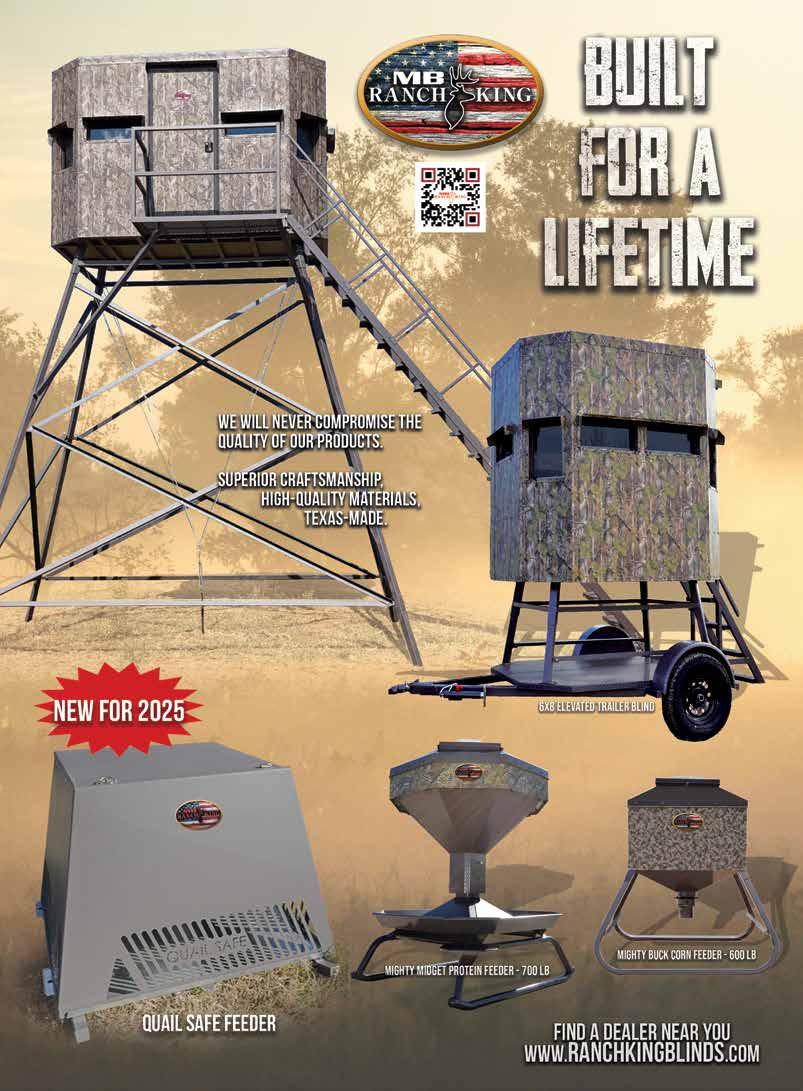







Let me begin this letter by an nouncing Texas Trophy Hunters is doing all we can to help the folks in Kerr County who have endured the biggest Guadalupe River flood on record. We thank our members for do nating supplies to send to the stricken area, and TTHA/SCI are still taking donations to help the folks in the disas ter area. Our prayers are with everyone who lost loved ones in the flooding.

And now to the hunting scene. Texas dove and duck hunters are cleaning up “Old Betsy” and looking for cheap shotgun shells. Wing shooting seasons for mourning and whitewing doves and blue-winged teal are upon us as the first hunting seasons of the year. Dove seasons open for the North and Central zones on Sept.1, by treaty, and the South Zone opens Sept. 14. Teal season is short this year, running from Sept. 20-28.
Lone Star dove hunters are nearing 400,000 when you add up the hunters in all three zones, and when the smoke clears—no pun—about 6 million doves will be in the pot. Hunters have found more ways to cook doves than you can shake a stick at, and most of us have eaten our share of dove breasts laced with Louisiana hot sauce and bacon wrapped with onion and jalapeños. Add an after-hunt Bloody Mary, and you have the best that dove hunting has to offer.
For hunters who have never hunted teal ducks in September—you have a treat coming. I recall our small group of Gonzales hunters who would gather at Eagle Lake for our annual teal hunt. The eight or nine hunters with their three to four retrievers would spend a Saturday morning shooting the fast little flyers as they dipped and dodged through the morning mist. I had a good Lab and usually ended up with several hunter’s bag limits, but we seldom lost a bird. The teal hunts were a hoot!
Hold on, Hoss. Doves and teal are just the start. Our “modern-day” deer seasons kick off with archery and MLDP permits in late September and the regular deer season opens Nov. 1. Smart hunters will check seasons and bag limits carefully for their hunting area. It seems that as time passes the deer hunting regulations get thicker and stickier.
Hunters who chase the open plains pronghorn antelope need to mark their calendars for Sept. 27 through Oct. 12. There’s nothing quite like hunting the pragmatic pronghorn on the open prairies of West Texas and New Mexico, where most Texas hunters spend their antelope-hunting time and money. Acting like a coyote and stalking a herd buck is near the top of hunting experiences, so try your luck at getting a good 14-inch buck for the den wall.
In general, wildlife has fared well during 2025, and hunters can expect good hunting seasons. As usual, deer hunters will be more concerned about corn and gas prices than a good place to hunt. Texas is also the No. 1 dove hunting state in the nation, and dove hunters will enjoy the best in all three zones.
In the meantime, let’s keep ’em running, swimming, and flying by being good sports and obeying the game and fish laws. I’ll see you down the road.
Horace Gore, Editor
Founder Jerry Johnston
Publisher Texas Trophy Hunters Association
President and Chief Executive Officer Christina Pittman • christina@ttha.com
Editor Horace Gore • editor@ttha.com
Graphic Designers
Faith Peña
Dust Devil Publishing/Todd & Tracey Woodard
Contributing Writers
Christian Chatellier, John Goodspeed, Carol Heughan, Chad Jones, Judy Jurek, Lee Leschper, Heath Siegel, Eric Stanosheck
Advertising Production
Debbie Keene
210-288-9491 deborah@ttha.com
Sales Representative
Tristan Summy 210-685-1205 tristan@ttha.com
Marketing Manager
Logan Hall 210-910-6344 logan@ttha.com
Finance & Administration Manager
Laura Garcia
210-512-4927 laura@ttha.com
Events Manager Jennifer Beaman 210-640-9554 jenn@ttha.com
Events Assistant Manager Natasha Delgado 210-512-8045 natasha@ttha.com
Membership Manager
Valkyrie Myklebust 210-767-9759 valkyrie@ttha.com
To carry our magazine in your store, please call 210-288-9491 • deborah@ttha.com
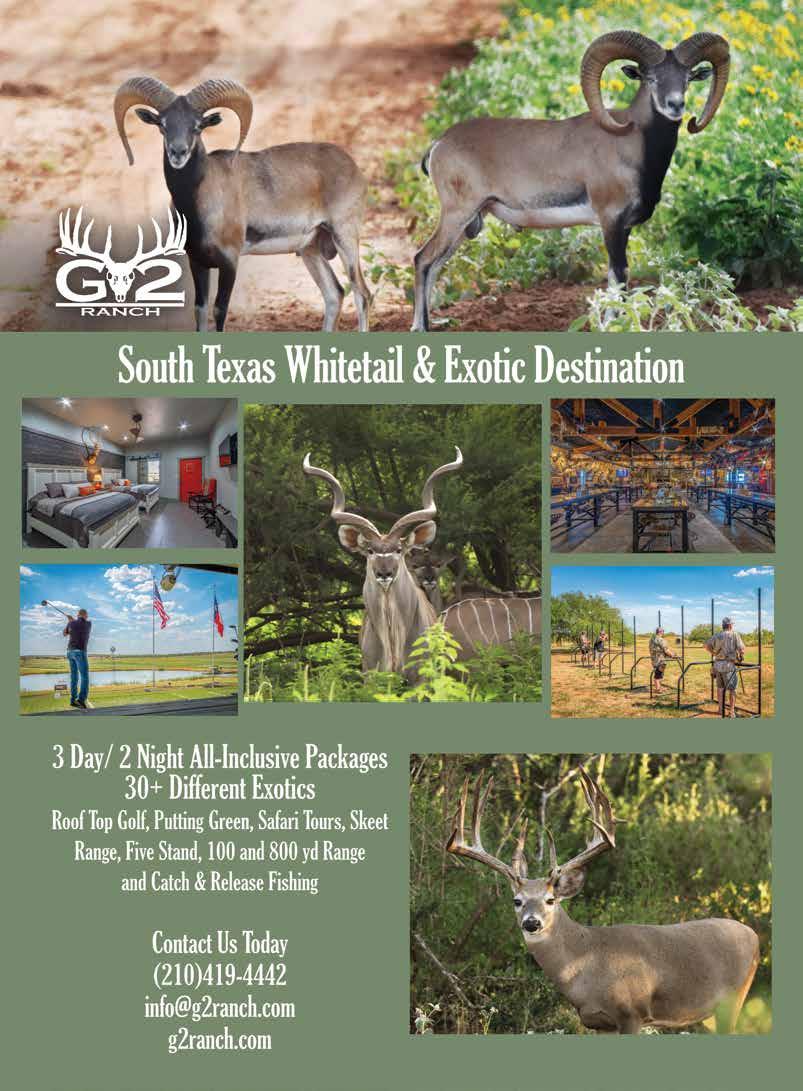

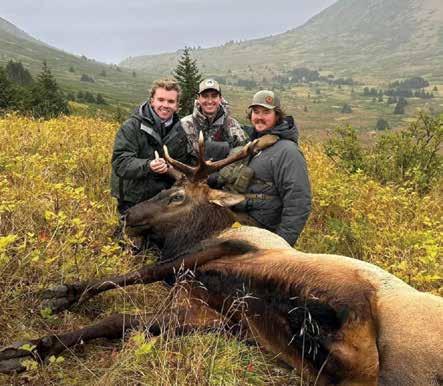
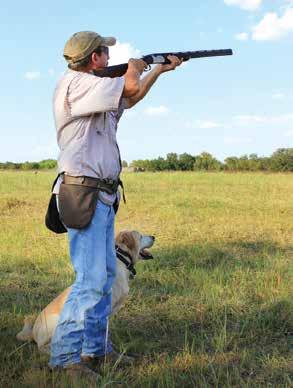
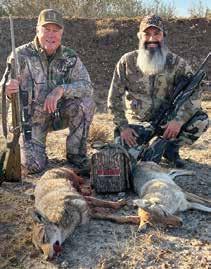
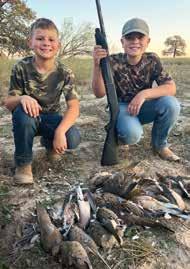
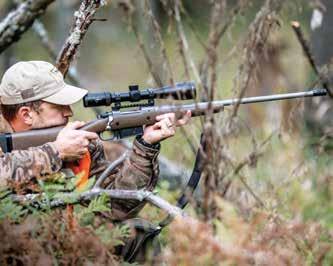



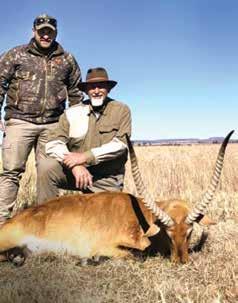

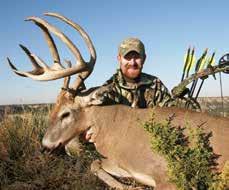
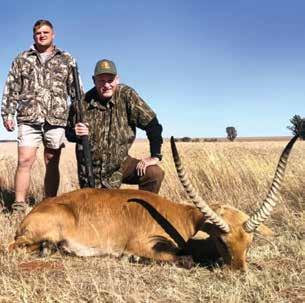
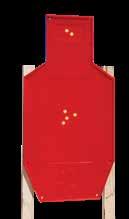
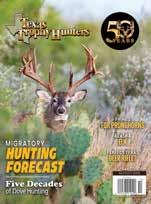


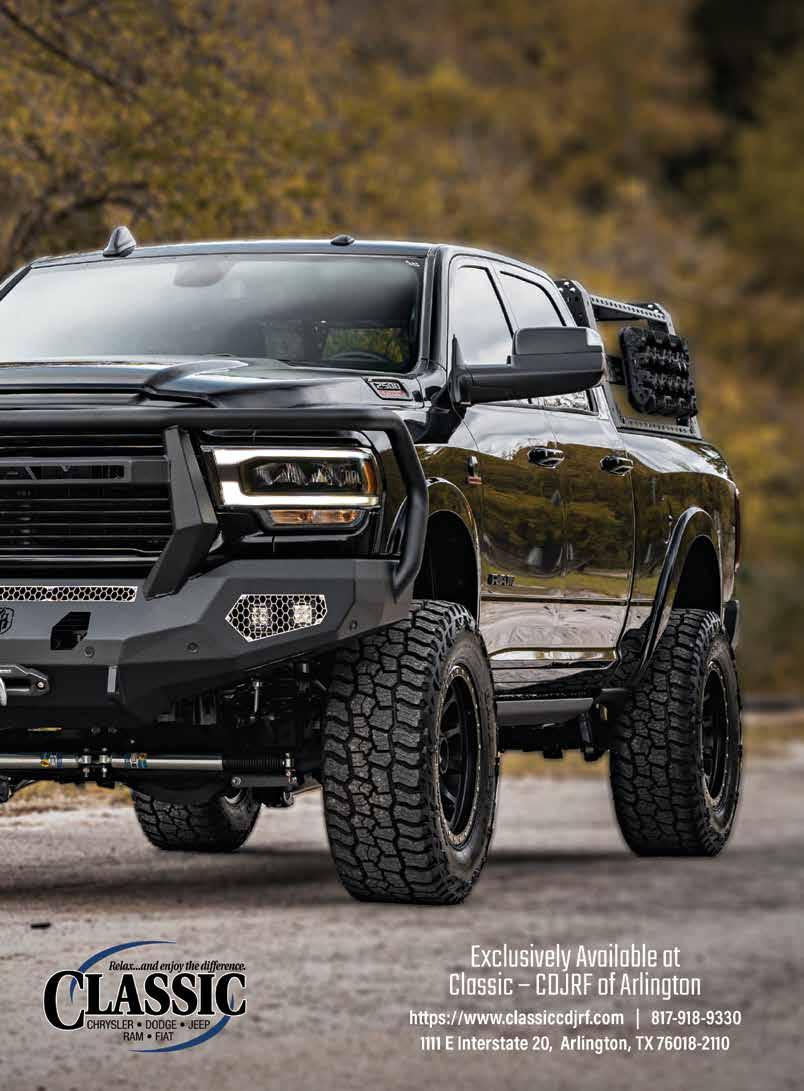
Each year during the month of August, deer hunters of all ages from Texas, Mexico, and out-of-state, bring their bucks to the Hunters Extravaganza Annual Deer Competition in Houston, Fort Worth and San Antonio. Young hunters proudly enter their trophy—sometimes their first buck—hoping to win a prize. TTHA is proud to recognize some of these young hunters and their trophy bucks.
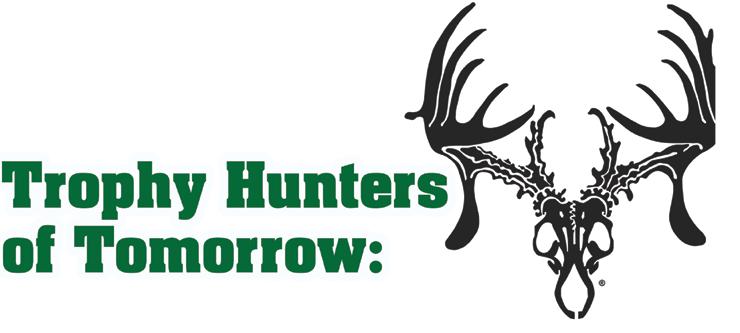
BBy Horace Gore
rock Brown is the 9-year-old son of Randall and Amanda Brown of Benbrook, in Tarrant County, and a Trophy Hunter of Tomorrow. In January 2024, Brock got his best buck of a “long” hunting career—a perfect eight-point netting 1452⁄8 B&C. The big eight-point was not Brock’s first buck. He has taken three bucks—a six-, eight-, and nine-point—since taking his first spike at 5½ with his dad. The Browns have friends who own deer hunting property in Tarrant County, and whitetail hunting is a family forte!
Brock just finished third grade at Great Hearts Elementary in Fort Worth. He loves the outdoors, hunting and fishing, but also enjoys baseball and football. Brock has twin brothers, Parker and Hudson, who are one year younger. When Brock got the big eight-point
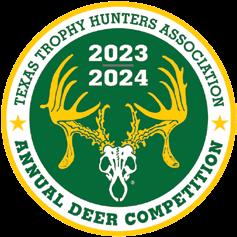
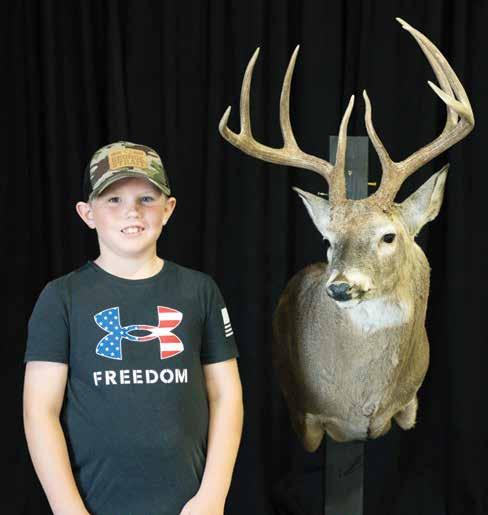
Brock Brown took his perfect eight-point, netting 1452⁄8 B&C points, in January 2024. Brock just finished third grade at Great Hearts Elementary in Fort Worth.
with exceptionally long brow tines in 2024, the family decided to enter the buck at the Annual Deer Competition at
the Fort Worth Hunters Extravaganza. To their surprise, the entry period had expired when they got to the show. They
were encouraged to take the buck to the San Antonio show only a week away, so the family made the trip to San Antonio with Brock toting his big eight-point.
Brock entered the North Texas, openrange rifle category. The competition was keen, but Brock’s buck won the Best Perfect 8 category with a high score of 1452⁄8 B&C. It was Brock’s first entry in the Annual Deer Competition, but it probably won’t be his last.
Brock was 7½ years old when he took his big eight-point. Since his first spike buck, which he killed with his dad’s rifle, Brock has hunted with an AR-15 platform rifle in 7.62x39-caliber—much more fitting to his young age and physique. The cartridge is of Russian origin, designed for automatic rifles. The velocity and energy is close to the Winchester .30-30, which was originally made for lever-action rifles. Recoil is minimal with the capability of taking an adult whitetail up to 100 yards. The rifle has a 4-12X Vortex scope, and Brock has taken each of his last three bucks with one shot from his “personalized” deer rifle.
The 2023-24 deer season was waning for Brock and Randall. They had seen the good eight-point several times, but Randall was cautious and wanted young Brock to get a good shot. Finally, the opportunity came one evening when the buck showed up to the feeder, and Brock got a close shot.
The buck took the bullet behind the shoulder, and the buck fell about 65 yards from the blind. It was Brock’s best buck to date, and Randall saw that it might score well because the antler points were evenly matched with long brow tines.
The Browns took a roundabout trip to the Fort Worth Extravaganza and then a long jaunt to San Antonio the next weekend—but the effort was worth it. Young Brock was a happy hunter. The Brown family were all proud of Brock’s buck winning the Best Perfect 8 category.
Since then, Brock has taken a ninepoint in the 2024-25 season, and plans to be in the deer blind when the 202526 season begins this fall. Randall will have his hands full with Brock and his twin brothers who are 8. Then, there is Amanda who took her first buck—a 10-point—last year. The Browns are quite a deer hunting family, but for now we congratulate Brock as our Trophy Hunter of Tomorrow.
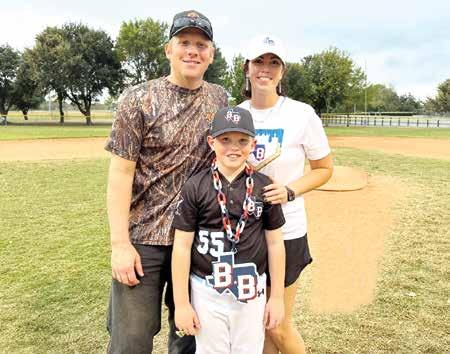
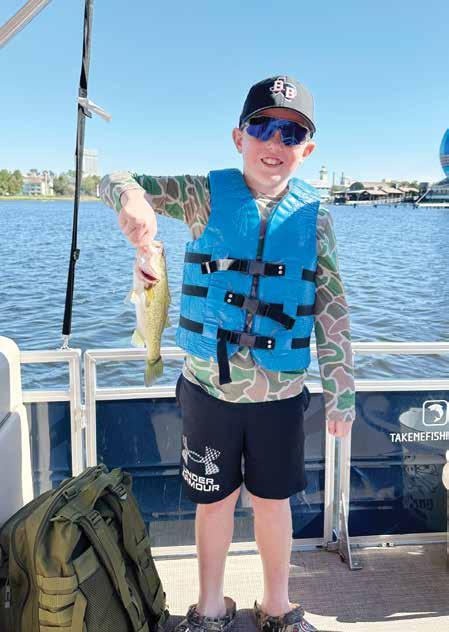
loves the outdoors, hunting and fishing, but he also enjoys baseball and football.

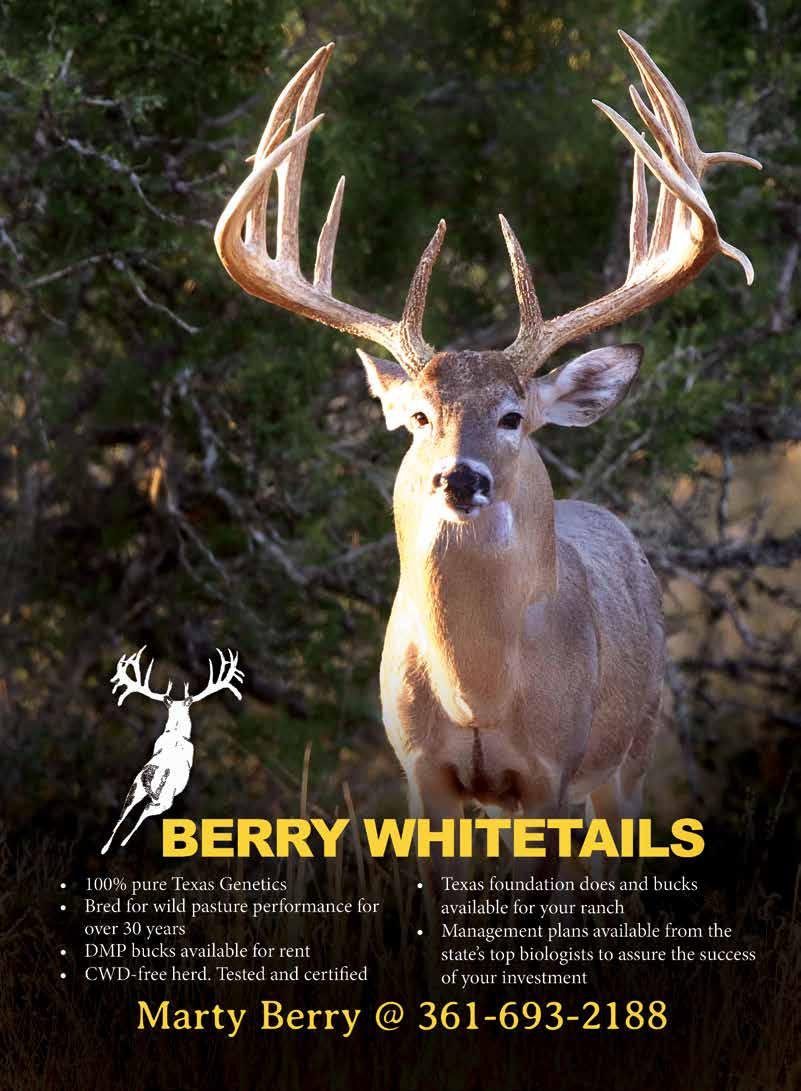

Kory Gann Named TPWD Big Game Program
Wildlife biologist Kory Gann of Seguin has been promoted to Big Game Program Director for the Texas Parks and Wildlife Department. Gann, whose dad was a football coach, has lived in several towns in Texas. He was born in San Antonio, graduated from high school in Sealy, and went to Texas A&M University to earn a bachelor’s degree in wildlife science.
Gann obtained a master’s degree in range and wildlife management from the Caesar Kleberg Wildlife Research Institute at Texas A&M UniversityKingsville. While in graduate school, he participated in research projects related to white-tailed deer. TPWD hired Gann as a district biologist in 2015, taking

over for the late Randy Fugate in Brooks, Kenedy, and Kleberg counties. Gann also spent time as a district biologist in West Texas and the Laredo area, and for the last 2 years, he worked as a regional wildlife health specialist in the Big Game Program. Gann is well versed in all aspects of wildlife science.
Gann got into whitetail hunting at an early age with his dad, who had deer leases in the Hill Country and South Texas. He has hunted deer and game birds most of his life. His hunting and interest in wildlife has followed him through his many years as a wildlife professional.
Gann’s wide range of knowledge in wildlife science and his varied field work in South and West Texas put him in line for a recent promotion to Big Game Program Director in Austin. On May 1, he was promoted to the position and will continue to live in Seguin and commute to Austin with an established routine.
“I’m very excited about this opportunity and the chance to work with and support TPWD staff, landowners, and other external partners across the state of Texas,” Gann said. “I’ve enjoyed my time with the Wildlife Division in the field, and I look forward to the challenge of my new position.”
Gann and his wife Whitney, who is also an employee of TPWD, have fulltime jobs keeping up with their professional duties while attending the needs of their daughter, Carter, who is just over one year old. Seguin is a good place to raise a family, and the couple have many good days ahead. Texas Trophy Hunters Association congratulates Gann on his new job. — Horace Gore
In May, U.S. Sens. Tommy Tuberville and Mike Crapo introduced the Sporting Goods Excise Tax Modernization Act (S. 1649) to close a loophole that allows foreign manufacturers of fishing and archery equipment to evade conservation excise taxes by selling direct to consumers in the United States. A similar version of the bill (H.R. 1494) was recently introduced in the House by CSC Co-Chair Congressman Jimmy Panetta and CSC Member Rep. Blake Moore, demonstrating strong bipartisan and bicameral support for protecting conservation funding.
“The American System of Conservation has been vital to restoring and protecting the abundant fish and wildlife resources we have in this country today,” said CSF Senior Director of Fisheries Policy, Chris Horton. “We’re grateful that Senators Tuberville and Crapo are leading the effort on the Senate side to protect the unique and highly successful Wildlife and Sport Fish Restoration Programs while safeguarding the competitiveness of U.S. based manufacturers and importers of fishing tackle and archery equipment.”
A study published by the Government Accountability Office (GAO) in 2024 acknowledged the importance of the excise taxes on fishing and archery equipment for fish and wildlife conservation while also highlighting the challenges with collecting these taxes when products are sold direct to consumers via electronic commerce. The GAO further recommended Congress make online marketplaces facilitators, not the individual consumer, responsible for collecting the
sport fishing and archery equipment excise taxes.
The Sporting Goods Excise Tax Modernization Act will meet the GAO’s recommendation and protect a cornerstone of conservation funding in the U.S. CSF looks forward to working with our champions in both the House and Senate to ensure the bill becomes law.
A critical component of conservation funding in the United States is based on excise taxes collected at the manufacturer level on fishing and archery equipment, which funds the Wildlife and Sport Fish Restoration (WSFR) Programs. It is estimated that tens of millions of dollars in excise tax revenues are currently being avoided through direct-to-consumer sales of foreign fishing and archery equipment facilitated by online marketplaces. The Congressional Sportsmen’s Foundation (CSF) has been working with the American Sportfishing Association and Archery Trade Association and Members of the CSC to develop a solution. —courtesy Congressional Sportsmen’s Foundation
Alaska’s rugged wilderness draws hunters worldwide, many of whom rely on professional guides and outfitters to navigate its challenging terrain in the pursuit of iconic big game species like brown bear, moose, and Dall sheep. These guided hunts, often the culmination of years of preparation, are a cornerstone of Alaska’s outdoor economy and cultural heritage. Ensuring these services operate ethically and sustainably while protecting existing businesses has been an ongoing conversation among the Alaska Outdoor Community, including during events like the annual Sportsmen’s Rendezvous and among members of the Alaska Legislative Outdoor Heritage Caucus.
Alaska Senate Bill 29, introduced by Caucus Co-Chair Senator Jesse Bjorkman during the 34th Legislature, aims to strengthen the Big Game Commercial Services Board by permanently establishing an Executive Administrator position to serve as the volunteer Board’s principal executive officer. SB
29 also guides the Board to establish qualifications and duties for the Executive Administrator. Currently the Alaska Big Game Commercial Services Board is responsible for regulating and overseeing all commercial big game hunting and transportation services in Alaska. Their oversight includes licensing, guide/ outfitter examinations, regulations and standards, disciplinary actions, policy development, and conservation coordination with the Alaska Department of Fish and Game. Proponents of SB 29 hope that creating a permanent ongoing administrator will ensure continuity, stability and industry confidence.
Supported by coalition partners like Safari Club International and the Alaska Professional Hunters Association, SB 29 has passed out of the Alaska State Senate and has moved to the House Resources Committee. The Congressional Sportsmen’s Foundation has been following the bill closely as it progresses through the state legislature and is working with our Caucus members and coalition partners to ensure that the policies enhance wildlife conservation and support sustainable access to Alaska’s big game hunting opportunities for sportsmen and women. —courtesy Congressional Sportsmen’s Foundation
In May, SCI filed its final brief in three lawsuits in which anti-hunting groups seek to put recovered gray wolf populations back on the Endangered Species Act list. That concept is absurd. Wolves in Idaho, Montana, and Wyoming have far exceeded recovery goals and their populations have grown substantially since they were removed from the ESA by Congress in 2009. But animal rights groups will not stop until they see these large, healthy wolf populations back under federal control. SCI has fought this battle for over 20 years. We continue to fight.
SCI’s brief emphasized that wolf populations in the Western U.S. are healthy and expanding. It emphasized that changes in state law, prompted by frustration with the impact that wolves

have on livestock and prey populations like deer and moose, do not threaten these wolves. And it pointed out legal deficiencies in the plaintiffs’ arguments.
SCI defends the U.S. Fish and Wildlife Service’s decision not to relist these wolves in partnership with Sportsmen’s Alliance Foundation and the Rocky Mountain Elk Foundation. SCI also recently completed briefing in another legal challenge involving gray wolves, where we partnered with the NRA.
In that case, SCI and the NRA appealed a California district court’s ruling that rejected the Service’s removal of wolves across the lower 48 States from the ESA’s coverage. That California court, like a number of courts before it, did not find fault in the science underlying the Service’s decision. Rather, the court held technical issues with the ESA kept wolves under federal management. But no one—not even the plaintiffs in these lawsuits—can deny that wolves are biologically recovered in their primary habitat in the lower 48 states.
SCI has defended the delisting of gray wolves in at least 16 cases since 2003. Litigation has for decades kept the country’s largest wolf populations under federal control. That has caused significant damage to deer and other wildlife across the Great Lakes states. It has led to significant loss of livestock and even pets and hunting dogs. Ever expanding and unmanaged wolf populations benefit no one—except the animal rights groups that fundraise off photographs of wolves and hyperbole that wolf populations will be “exterminated” under state management.
For these reasons, and many more, over 100 SCI members took to Capitol Hill on May 15. SCI members lobbied for the “Pet and Livestock Protection Act,” which will mandate the reissuance of a final rule removing the gray wolf in the lower 48 states from the ESA lists. Passage will assist in proper administration of the ESA. It will allow the Service to focus its limited resources on species of much greater conservation concern.
SCI is unique among pro-hunting clubs in having in-house legal counsel, ready to go to court to defend science-

based decisions when it comes to gray wolves and other species. SCI’s legal team, as well as our state and federal lobbyists, will continue to push for the removal of wolves from the ESA lists. And we know our members will continue to stand with us in this longtime effort. —courtesy SCI
SCI unequivocally opposes language from the recent federal budget reconciliation process proposing the sale of federal public lands in the Western United States.
SCI vigorously supports access to federal public lands for hunting, fishing, recreational shooting, and other outdoor pursuits. The Senate proposal threatens this access.
SCI acknowledges the importance of providing affordable housing and other services to American families, as well as the challenges faced by communities in states with high levels of federal land ownership. Furthermore, SCI has previously engaged in numerous lawsuits challenging federal landowners that have not supported state wildlife management authority or arbitrarily reduced hunting, fishing, recreational shooting, and access rights. But federal lands provide extensive wildlife habitat and recreational access. Sale of these lands cannot be conducted without adequate safeguards for protecting hunting, fishing, and other access. Nor should any such sale occur unless the proceeds are reinvested in conservation.
Accordingly, SCI opposes any land sales that do not incorporate:
• A thorough review of the recreational and ecological values of any land proposed for sale
• A public process involving both residents and the broader sporting community
• Consideration of other options such as land transfers or exchanges
• A process by which proceeds from any such sales, if they occur, be set aside for conservation
To protect America’s hunting heritage,
SCI encourages members of Congress to reconsider using the budget reconciliation process as a vehicle for land sales. If Congress determines that there are some public lands for which potential sale is appropriate, lawmakers should consider other options available to them, including developing a separate bill creating broader public engagement and evaluation of compliance with the Federal Land Policy and Management Act and Federal Lands Transaction Facilitation Act, to serve that purpose.
Federal public lands are of critical importance to protect wildlife populations and their habitats. Congress must prioritize these values in the current debate. —courtesy SCI
Through its National Request for Proposals Program (RFP), the National Wild Turkey Federation is helping fund research involving translocated and surviving Eastern wild turkeys across East Texas. Researchers are using GPS data and state-specific breeding, nesting and roosting information to provide habitat management recommendations at a scale that can support Texas Parks and Wildlife Department’s Eastern Wild Turkey Super Stocking Project and broader wild turkey conservation efforts.
Thanks to support from dedicated partners, such as the Bass Pro Shops and Cabela’s Outdoor Fund, Mossy Oak and NWTF state chapters, the RFP program is an aggressive, annual effort to fund critical wild turkey research projects nationwide.
“Across the southeastern United States, we are seeing a decline in wild turkeys, especially in this zone of eastern Texas,” said Nicholas Bakner, post-doctoral researcher at the Tennessee Technological University. “For the past few years, Texas has been reintroducing birds from other states to reestablish populations in these areas.”
Bakner and his team want to see how translocated female birds from other states are responding to existing habitat conditions, which will help identify suitable release areas. Through this work,
they will be able to identify critical habitats, their availability and the potential for habitat restoration to increase turkey distribution and abundance in the region. This project will also be identifying areas where habitat limitations exist, enabling researchers to implement more effective habitat management strategies.
Using data collected over the past decade, researchers can develop a comprehensive habitat suitability model for wild turkeys in West Texas. When wild turkeys were captured and processed using rocket nets baited with cracked corn between January and March of 2016 through 2024, all individuals, regardless of age or sex, were given a leg band and a GPS transmitter that took one location nightly at midnight, and hourly locations between 5 a.m. and 8 p.m. until the battery died or the unit was recovered.
Researchers also conducted nest and brood surveys of any banded females suspected to have had brood success to gather survey data that will be used, along with other relevant variable data, to evaluate habitat suitability.
“When it comes down to looking at habitat suitability, this model identifies critical areas,” Bakner said. “We know from GPS data from across the southeastern United States, that there is a limitation in brooding habitat. Only about 7% of hens are successfully producing a brood, and we’re seeing as low as 10% nesting success in some of these areas. We need reproduction in order to supplement a population, which is why the brooding and nesting portion of this habitat suitability model are important. If we could use this model to identify areas of improved nesting habitat, this would help our efforts in recruiting new birds into the population.”
The research is being conducted on both private and public lands.
“I hope that we find areas that are pocketed with different types of brooding and nesting habitat,” Bakner said. “We can write all these scientific papers, but I want to able to integrate it into management. I’m hoping that we can find those pockets, identify what’s critical in those areas, and then transfer that to on-the-ground habitat management.”
—courtesy NWTF

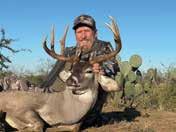
By Dr. James C. Kroll

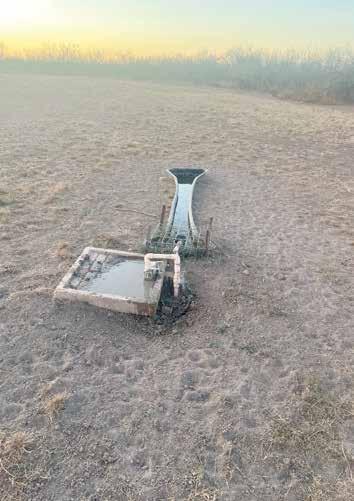
Dehydration is one of the primary causes of fawn mortality. By providing year-round water sources, the game manager can greatly improve fawn survival.

The white-tailed deer remains unchallenged as one of the most adaptable big game species in the world. Its range extends from the tip of South America to the edge of the northern Tundra. This covers a diverse range of habitats and climates, including tropical forests, scrublands, grasslands and temperate forests of all types.
Temperatures where whitetails live can rise to 100°F plus, or fall to subzero. When you combine diverse habitats and climates, it is no wonder that there are at least 38 subspecies; with the smallest—Florida Key deer—weighing in at only 55 pounds, and the largest—northern woodland or boreal whitetail—reaching over 400 pounds.
Managing diverse habitats and subspecies can be quite a challenge, one I have accepted many times in my five-decade career. I am sure each deer biologist has his or her favorite subspecies and habitat, but for me, it’s got to be the ones that live in the hottest, driest places on Earth—the desert brushlands of northern Mexico. I have managed whitetails over a great part of their range, and each place carries with it management challenges.
I like challenges, and each place where I have managed deer herds presents its own unique challenge. I would not have it any other way. For example, my interest in whitetails in the northern portion of the Lower Peninsula of Michigan was, not only the terrible winter conditions, but the fact a portion of the region is a place where bovine tuberculosis is endemic, presumably acquired from untested cattle from Mexico.
Managing whitetails is an adaptive proposition, where you first figure out the limiting factor(s) to true recruitment.
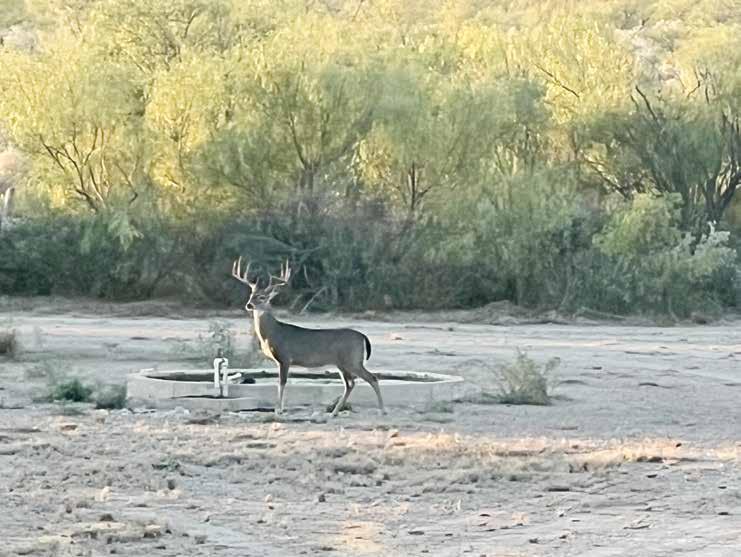
Farther north from the TB endemic area, I dealt with migration issues created by deep winter snows and harsh temperatures. There are properties in the upper Lower Peninsula and the Upper Peninsula totally devoid of deer during part of the year. There are properties there where I know exactly how many deer we have in January, a big zero. They can be found miles away in bedding grounds dominated by conifers.
Farther south to the Mississippi Delta, deer also migrate, this time to escape flooding caused by spring rains farther north and hurricanes farther south. I once managed a property just south of Memphis where, at one time, I again knew exactly how many deer we had—zero.
Thankfully, in each of these cases, we solved the problem first by identifying the limiting factors, then developing innovative ways to mitigate challenges. We reduced TB infection rates to “undetectable” in the upper Lower Peninsula. We stopped the migration and increased recruitment and survival in the bitter cold areas. We figured out ways to get the deer back safe and sound to the Delta. That’s one of the things I cherish about deer management. There is no such thing as “cookbook” management. It’s about being able to adapt.
Yet, the greatest challenge to date in my career has been developing a sustained population management program in the northern deserts of Mexico. Ranchers in this region routinely deal with annual rainfall, as low as 12 inches. Ponds routinely

go dry, creeks and rivers dry up, once again causing deer to migrate. Then there is the fact many of the browse plants are drought-deciduous, meaning, when it gets dry, the woody plants drop their leaves and go dormant. This does include the fact that the weedy plants deer would like to eat, “roll up their tent, and go home.”
Whitetails often adopt a drought strategy of just surviving, with little successful reproduction, hoping for the better times that come eventually in harsh climates. The lifespan of deer is geared to survive until good times. They are the ultimate survivor species, and they always seem to find a way to survive long enough to reproduce.
So, why even worry about helping them? Deer are the No. 1 big game species in the Americas, with some 80% of hunters pursuing this most adaptable of game species. It is our nature to try to mitigate the negatives.
We often have talked about the difference between fawn crop and recruitment, because there is a significant difference between the two. Biologists often measure the productive capacity of a deer herd by the fawn crop: the number of fawns surviving to weaning. Many times, however, we have seen herds, notably in the Midwest, with very high fawn crops, yet very poor recruitment.
The term “recruitment” refers to the number of fawns per doe that live to be one year of age, the time when they are recruited
into the herd. Fawn mortality rates from the time of weaning can be quite high, depending on many factors, including winter stress, predation, and disease. In managing the ranch herd, we recommend following the steps we have taken many times to reach the goal of identifying limiting factors.
In 1828, agricultural scientist Carl Sprengel first recognized in any biological system, health is affected by many factors, but there usually is one that has the greatest impact. Popularized later by Justus von Liebig, this scientific law became known as Liebig’s Law of the Minimum. If we identify all of the factors that limit population growth, the one in least supply is “the” limiting factor. Hence, in deer management— and particularly in herd management— we attempt to identify all the potentially limiting factors, then develop strategies to reduce or eliminate the impact of this factor.
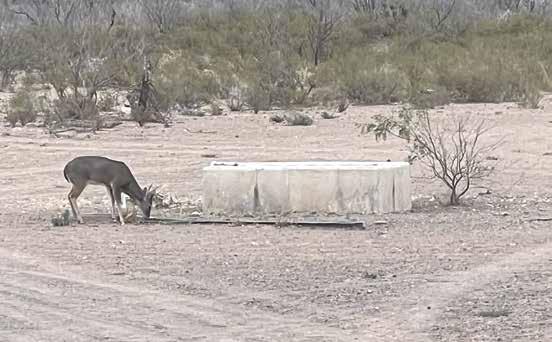
Managing diverse habitats and subspecies can be quite a challenge, one the author has accepted many times in his fivedecade career.
In northern Mexico, it clearly is rainfall. But how have I coped with this deficit in a practical and economically efficient manner? First and foremost, we always consider in a management plan what to do about natural forage production. Deer love early succession plants and thrive after a disturbance. Using a roller-chopper we knock down the browse plants to stimulate regrowth, plus fracture a dense silty soil to allow what little moisture we get to infiltrate the soil.
Chopping is not for every soil, and there is an art to identifying which areas are suitable. We must prepare a property for the rare times when it does rain, trapping as much moisture as possible. Prescribed fire is seldom the solution, because many areas just won’t carry a fire.
There is confusion about supplemental feeding in the drier portions of the whitetail range. Some landowners think of it as “replacement feeding,” instead of “supplemental feeding.” Reality is, setting up a few feeders around the place and feeding part of the year does not constitute either of these. We conducted a research project on a very large Mexican ranch, the size of which allowed us to separate large pastures to study the impact of supplemental feeding with a balanced pellet ration, plus corn.
Our true recruitment goal is set at 70%, so reviewing the results of this study for this specific ranch, we settled on a preferred feeder density of one per 750 acres. The high rate of feeding was for pastures where we were managing intensively, so we kept the feeder density high. This was average true
recruitment over 7 years. The range was from 39% to 78% over that study.
Deciding on the density for your program will depend on the recruitment goal and the economics of the strategy. Our studies indicate that, on average, a deer will consume 1.8 pounds of feed per day. At say $0.25 per pound, that’s $0.45 per deer per day. Does not seem like much, right? Well, compute the cost of feeding 100 deer per day, and it increases to $45 per day, or $16,425 per year.
As you reduce the density of your feeders, you obviously are feeding a smaller and smaller portion of your herd, so there is “cost-benefit” to consider. On one of the ranches we manage, the true recruitment under feeding at an average density of 500 acres per feeder, over 7 years has been about 50%. You need at least 40% to produce adequate numbers of mature bucks
What about water? One of the primary causes for fawn mortality is not predation, it’s starvation and dehydration. By providing year-round water sources at a one per 200 acres, we have greatly improved fawn survival. However, this is far easier to recommend than to do. There is the cost of getting water to the stations, and the constant maintenance and repairs they create. We double up on benefits to other wildlife by also pairing water troughs with low ground waterers so quail and other species, even rattlesnakes, can also get water.
Managing whitetails is an adaptive proposition, where you first figure out the limiting factor(s) to true recruitment, then develop a workable, economic plan to mitigate the negative factors. Managing deer in the eastern and southern U.S. has its challenges, but it is the areas with severe climatic conditions that take real management. I love the challenges and finding the solutions have taught me so much about our favorite game animal—the white-tailed deer.






By Horace Gore
on Adams’ telephone rang, and he dropped the Gonzales Inquirer and answered. Jim Martin, who ran a large ranch on BLM land near Roswell was calling about a good pronghorn antelope that he and his son, Charlie, had seen— maybe 16 inches—in the south pasture.
Jim wanted to know if Don wanted to come to New Mexico and hunt the trophy pronghorn. “Well, I haven’t been antelope hunting in a long time. My daughter might want to hunt. She’s taken a few deer and hogs.”
“I guess the price has gone up,” Don
quipped, and Jim replied, “Don, you’ve never spent a dime on an antelope hunt—maybe a few dollars on gas, and our supper in town.” They talked a little more about a hunt.
Don yelled to his tomboy daughter, “Bessie, do you want to go antelope
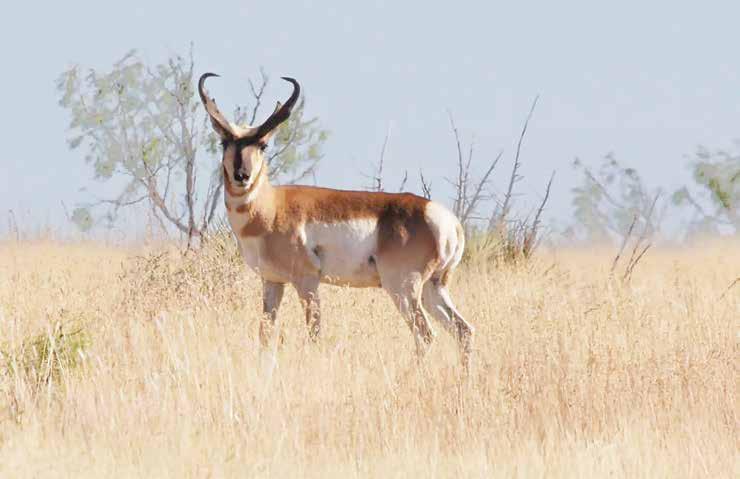
Pronghorns depend on eyesight and speed to evade enemies and have a danger perimeter of about 250 yards that gives them the edge in any chase.

hunting at Roswell?” Bessie Faye had just turned 17 and was an avid hunter. “Of course, I want to go,” she yelled back from upstairs. “Did you hear that?” Don asked Jim. “Looks like we will see you in antelope season!”
The high school senior was delighted as she came down the stairs. “When will we go?” Don picked up the weekly paper again and replied, “New Mexico antelope seasons are about the time school starts.”
“Can I take my deer rifle?” Before Don could answer she asked, “Is pronghorn hunting anything like deer and hog hunting?” Don interrupted her questions. “Yes, your 7mm-08 will do just fine, and
no, antelope hunting is nothing like deer or hogs at the feeder. Pronghorns live on the open prairie, and you need to slip up on them to get a shot.”
Bessie’s next question: “How do you slip up on them in the open?” Don replied, “You act like a coyote.” His answer surprised Bess, and she walked away thinking, “How do you act like a coyote?”
As the pronghorn hunt got closer, Don told Bessie that unlike deer hunting, she would have to make a longer shot at a herd buck. “We will sight your Winchester in 3 inches high at 100 with 139-grain Hornady spire points, and you can hold dead-on for any shot up to 275
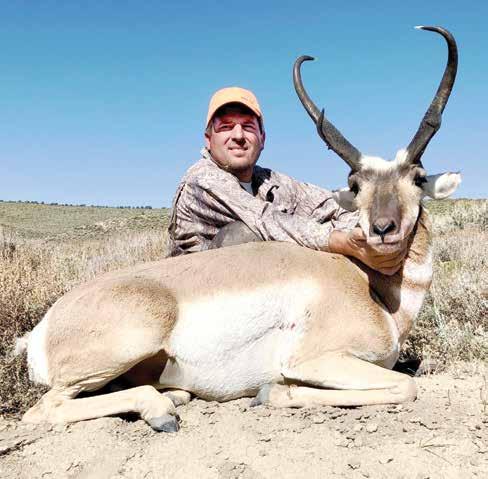
yards.”
Don reviewed the three 2-day pronghorn seasons, and they picked the August hunt before school started. They would drive out on Friday and be ready to hunt on Saturday morning.
“Where will we stay?” Bessie asked. “Right out on the prairie,” Don replied. “We’ll take our pop-up tent and camp at a windmill,” Don surmised. “After supper, we’ll lay on the prairie and look at the stars, and in the morning, you can wash your face in windmill water.”
Don and Bessie Faye had practiced shooting from the prone position at a 200-yard antelope target made from cardboard. He figured that would be the kind of shot that they would get at a herd buck. Bessie remarked to her dad, “Shooting is different when I’m lying on the ground. My eye is closer to the scope, and my aim is steady.”
Bessie read up on the American pronghorn. She found the unique mammal was the only one of its species that lives on open prairie. Pronghorns are fleet at 50 miles per hour, but are easy to bring down with a well-placed shot.
The teenager also learned that the pronghorn depends on eyesight and speed to evade enemies and have a danger perimeter of about 250 yards that gives them the edge in any chase. Bucks have sheath horns made of hair over a permanent core that are hard during breeding season, when it’s common to see several does with a dominant herd buck. After breeding season, the outside sheath slides off leaving the blade-like core to form another sheath horn.
The August New Mexico pronghorn season came, and Don and Bessie drove from Gonzales to Roswell. With out-ofstate hunting licenses, they drove to the Martin ranch to visit with Jim and Charlie before the hunt. Jim assured them the
big pronghorn was still somewhere near the south windmill where they would camp.
Charlie reminded Don that it would take patience to stalk the old buck. He winked at Bessie Faye and said, “Don, you and Bessie will have to act like coyotes.” It was the second time Bessie had heard that remark. Jim and Charlie would catch up with the hunters at one of the two windmills on Saturday evening.
The Gonzales hunters set up camp at the south windmill. Bessie fixed a hunter’s supper of fried bologna and pork and beans, topped off with canned peaches. They warmed windmill water in the skillet and washed up everything, saving some fried bologna for sandwiches the next day.
After supper, they sat under a halo of bright stars and talked about the next day’s hunt. After they got into their summer sleeping bags with the tent flaps folded back, Bessie found a satellite moving through the stars. She drifted off to sleep wondering how they would act like coyotes.
Early on Saturday, the hunters drank coffee and ate sweet rolls. Bessie drifted off behind the tent and came back ready to go after her first pronghorn. They would hunt together and glass the small herds looking for a good buck. Don reminded Bessie to pack her leather gloves with the sandwiches and toilet paper.
The duo walked and glassed all morning—no “safari hunting” from vehicles in New Mexico. They were both tired and thirsty at noon when Don glassed another windmill in the distance. As they headed toward the water, Don spied a herd of pronghorns with his binoculars. The herd had a buck, but they were far away.
Don and Bessie got to the windmill; tested the water and drank their fill. They rested for a while in the scant shade and ate their sandwiches. Don continued to glass the faraway herd as Bessie went behind the bushes. When she came back her dad remarked, “Your buck may be with that herd—you know, the one Jim and Charlie talked about.”
Don wanted a closer look, so the hunters took a fast clip toward the herd. They made good time after Don took both rifles so that Bessie could keep up on the grassy landscape.
When the hunters were about 400
yards from the resting herd, they sat on the ground for a breather. As Don got up to a crouch he told Bessie, “Stay low behind me and take your rifle off your shoulder. We’ll have to act like coyotes to get this old buck. He can outrun a coyote, but he can’t outrun a bullet.” They continued to move in a crouch for another hundred yards.
Don stopped and they both sat down. “They see us,” Don said as he glassed two does and the herd buck that were standing, with three does still resting. Don took off his hat and said, “Bessie, put everything on the ground but your rifle and gloves.” Don laid his rifle and hat with Bessie’s things. They put on their gloves and Don kept his binoculars.
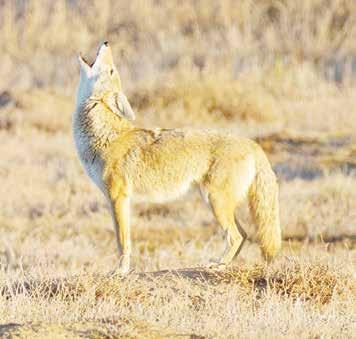
Hunters have to act like coyotes to get close enough for a shot on old pronghorn bucks.
The herd was about 300 yards—too far for Bessie. Don motioned to her, and they got on hands and knees with the rifle and binocs under Don’s chest. Both stayed low for about 50-60 yards and lay prone on the ground. Don whispered to Bessie, “Don’t look. Keep your face down.” He took a quick glance through the binocs to see all the antelope standing and staring. The buck looked to be about 250 yards.
Don whispered, “Take a quick look— can you shoot from here?” Bessie peeked at the herd and got her first good look at the buck. She visualized the distance she had been shooting prone at the cardboard target and said, “I can hit him from here.”
Bessie and Don lay flat facing the herd. Don shifted the rifle to Bessie, and she shed a glove for a prone shot above the short gramma grass. With the crosshairs about halfway up behind the buck’s shoulder, Bessie squeezed the trigger.
The Winchester roared, and the pronghorns ran. Both hunters jumped up, looking for the buck. Don patted Bessie on the back and said, “Good shot, kid,” as he pointed to the buck’s white belly in the distance. Bessie had taken her first American pronghorn. She bolted
the hull from her rifle and picked it up with her left hand, thinking to herself, “Now I know what acting like a coyote really means!”
Don went back for his hat and rifle and the other things. Bessie walked to the buck and admired his strange horns and body color—orange and white. The mature buck had black horns and face, with small, pointed ears and white rings around the base of his neck—unlike any animal Bessie had ever hunted. Don returned and took photos of his proud daughter and her pronghorn, after she had filled out her landowner permit.
Don’s watch showed 3 p.m. when they turned the gutted pronghorn belly-down to drain it, and walked back to the windmill. Jim and Charlie found them, and they drove over to get the buck. More photos were taken, and they soon had Bessie’s trophy skinned with choice cuts of meat in the ice box. Charlie rough scored the horns at 79 3⁄8 —a good 15inch New Mexico pronghorn.
Charlie put the head and cape in a garbage bag with ice and water for the trip back to Gonzales. “Keep the eyelids and nose out of the sun,” Charlie warned. Back at camp, Bessie slept well that night under the New Mexico stars with her pronghorn rifle tucked away in the tent.
Don passed on two antelope bucks on Sunday—smaller than what he had on the wall. They broke camp for Gonzales, but not to fret. Don had been lucky before, and young Bessie Faye was all smiles with her first American pronghorn.
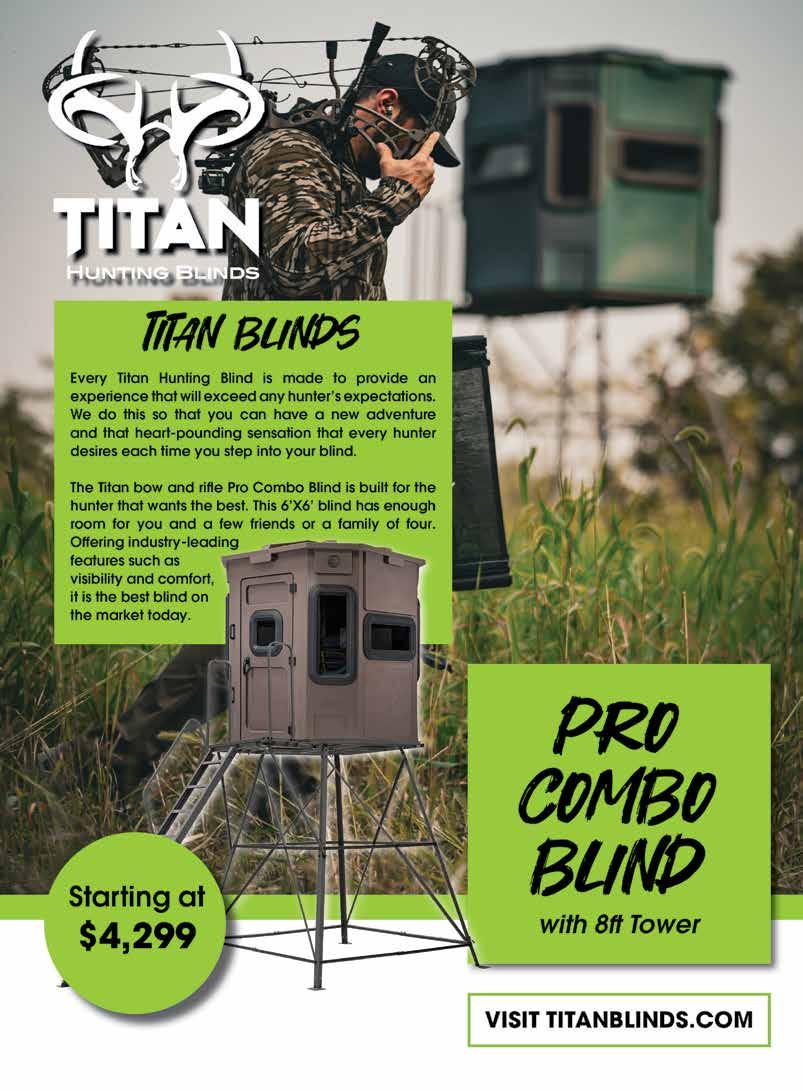
By Judy Bishop Jurek
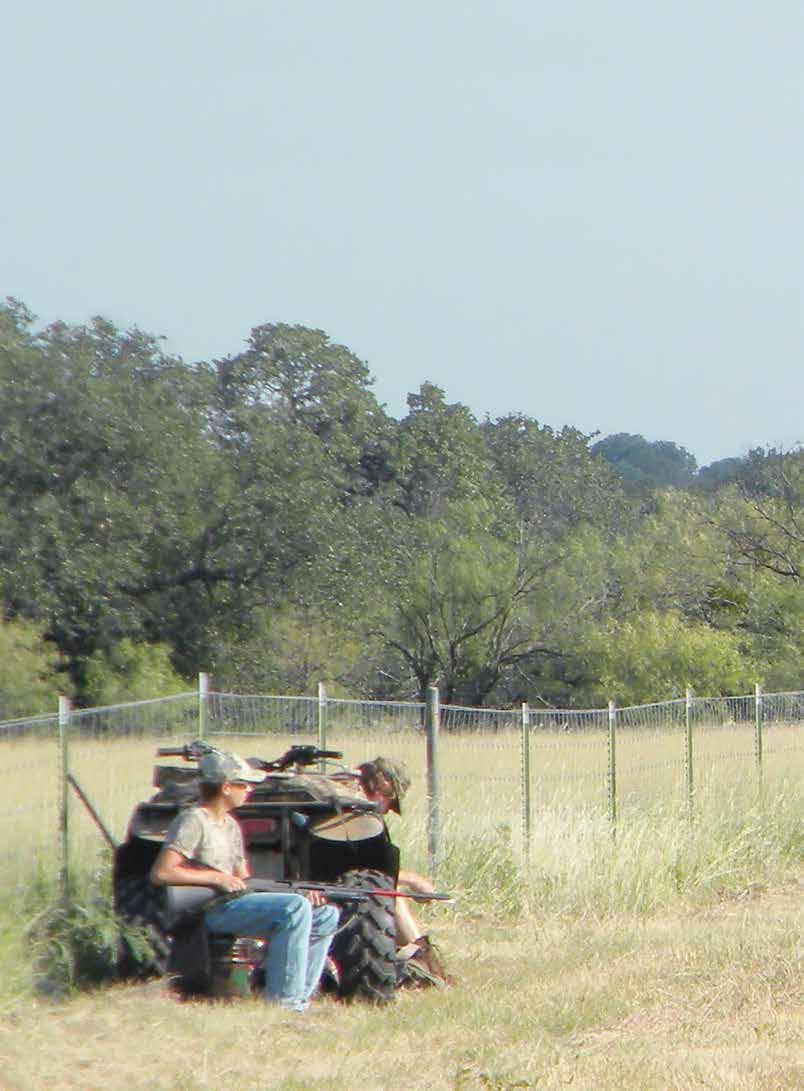
With permission to hunt both sides of this fence, one hunter quickly repositioned to enable recovering doves on the other side.
What’s changed across Texas in the last 50 years of dove hunting? Depends on who you talk to and where they may hunt in the great Lone Star state. On one hand, not much has changed, as dove hunting is perhaps the easiest type of hunting to enjoy. Necessary items are a license, shotgun, ammunition, and permission to hunt on a particular property. It’s pretty simple if you have doves flying.
On the other hand, dove hunting has somewhat revolutionized this past half century. Hands down, it’s the most popular wing shooting in Texas today. Although always a co-ed sport, more women and children head to dove fields nowadays than in past decades. One reason is the simplicity of the hunt, as well as more dove hunting opportunities today across the state.
Weaponry has helped change the dove movement. Shotguns abound in a variety
of lengths, weights, and styles, making shooting easier and more pleasant. This is especially true for females and youngsters lacking the physique to enjoy dove hunting without tiring from a heavy shotgun or creating a bruised shoulder.
Another item that’s greatly motivated hunting in general is camouflaged clothing, specifically geared for women and children. Camo isn’t necessary for dove hunting, but helps conceal hunters on fence lines or in the shade. Lightweight, cool fabrics are available in every style, size, and fit.
Hunters sweat in the Texas heat while shooting aerial acrobatic doves. However, our fall weather is often unpredictable, and a cool front can drop temperatures and rain. So it’s wise to carry a jacket in your gear.
This ol’ hunter has noticed changes over the years in how people hunt. Dove
hunters today are more concerned about safety, using eye and hearing protection for themselves and family, than hunters did in the past. I grew up never using either but do so now, especially if I’m in a hunting group.
When many people hunt in close proximity, a single stray lead pellet can be a problem. Ear plugs can be useful, too. It’s a blast to have lots of hunters in the same field, but keep safety at the forefront. Many hunters today carry and use insect repellent, especially for ticks and chiggers. Gnats are a nuisance when you’re sweating, but there’s not much you can do about the pesky critters.
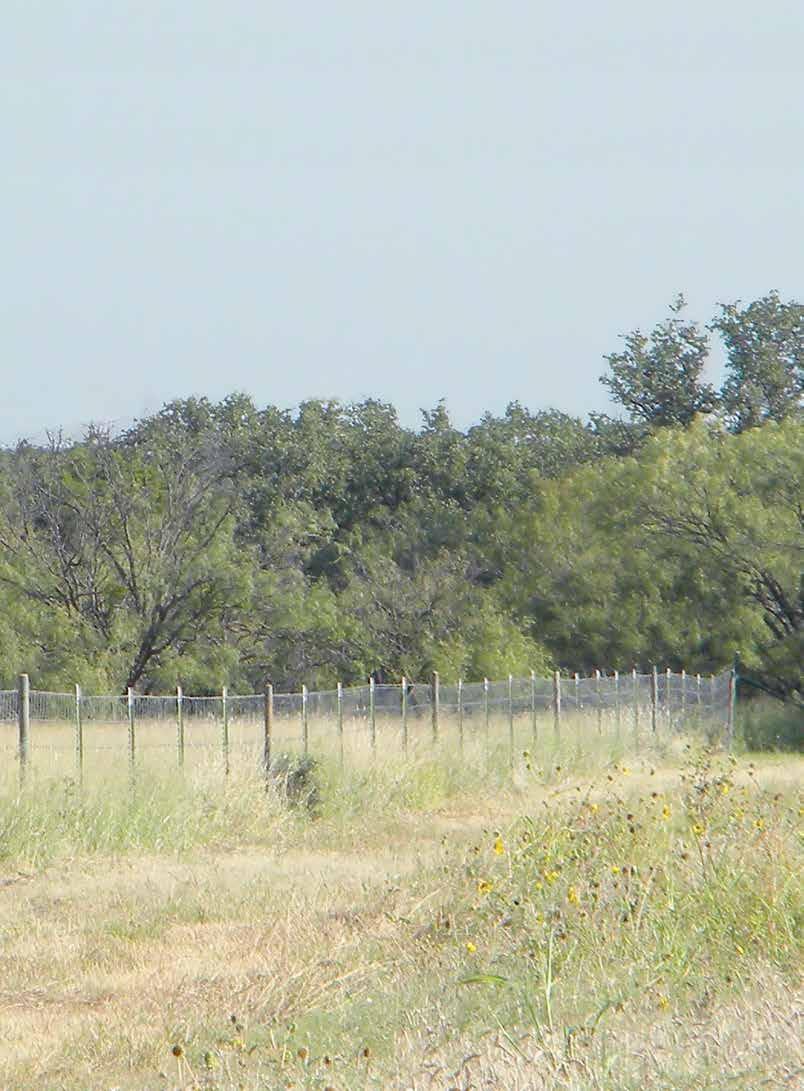

Not yet big enough to handle a shotgun, future hunter Ridge Riley happily participated in a dove-hunting adventure by picking up downed birds.
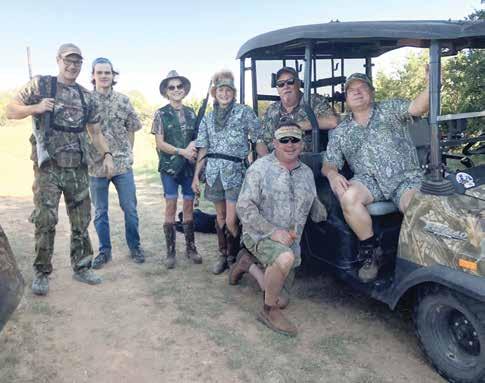
A dove-hunting crew today wears much camouflage and often use more than one buggy to navigate a hunting area.
It’s easy to make an outing much more pleasant. Take a chair or stool to relax if doves stop flying. Wear a hat or cap to shade your face. Pack snacks with plenty of water for you and your faithful retriever, if you’re lucky enough to have one fetching your downed doves.
Some hunters prefer hunting in large groups. Others prefer being with a small number of hunters. It helps having a few friends along to surround a field or create a shooting line to keep doves moving.
Tailgate parties have always been popular, but please reserve alcoholic beverages until after all shooting is done. It’s also sensible and advis-
Once he figured out his purpose, the author’s Doberman, named Zarr, became a faithful dove retriever, never missing a single bird.
able to keep each hunter’s birds separate in case a game warden appears. When there’s a huge dove pile, it may be hard to tell, and justify, who killed how many, and tickets may come flying faster than the doves.
Hunters can legally hunt both morning and afternoon but cannot exceed your daily

bag limit. Double dipping, as in taking a dove limit same day morning and evening, is illegal. Don’t be greedy or a law breaker.
Something that hasn’t changed in 50 years of dove hunting is the hunt. There will always be days when your shotgun is fast and furious, getting dove limits in short order. But don’t forget those days when doves are scarce, and shooting is less.
The age-old adage is often true: “You should have been here yesterday.” A fantastic hunt can be followed by a terrible one, back-to-back. It happens. It’s possible because doves are finicky.
The slightest change in weather can affect feeding and flight patterns. A heavy shower can drive doves away, because they don’t like getting their feet wet. A tropical weather system almost always arrives just as the September dove season opens, so it’s good to have a backup plan.
Dove hunting can be strange. We once hunted a prime South Texas pond with shady mesquites. Across the road 100 yards away, a disked milo field was covered with doves feeding and flying. Our eight hunters were totally disheartened at sunset when only a handful of doves passed our way. Disappointing was an understatement.
I experienced my best dove hunt ever near the town of Alice. Five adults and two teen hunters scattered around the bottom of a huge 20-foot-deep caliche pit. In one corner was a shallow water pool. Two hours before sunset doves came into the water and covered us up. We couldn’t reload fast enough, and our gun barrels got hot.
Each dead bird was clearly visible against the white caliche. Someone would holler, “Hold your fire! Grab and count your doves!” We all limited out in record time, and it was easy picking up spent hulls—a courtesy hunters should always perform. We had three very memorable hunts before a heavy rain changed it all.
Camaraderie is a common thread whether an outing is with a few hunters or a crowd. Dove hunting’s outstanding quality hasn’t changed in 50 years. Doves fly fast, and shotgun blasts don’t seem to scare them. An hour before sunset can be great in good dove country.
Dove hunting should not be about bagging your limit, but rather having a fun outdoor outing making memories. Your next hunt may be your best, so have fun, be safe, and enjoy the outdoors.
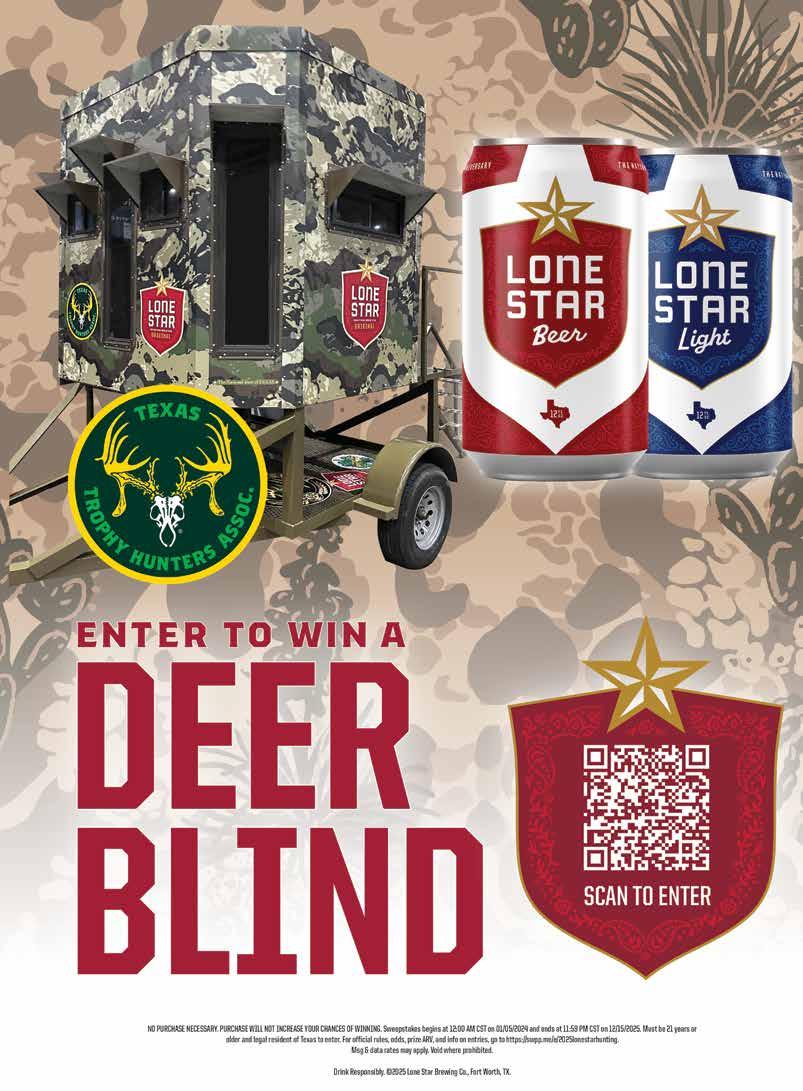
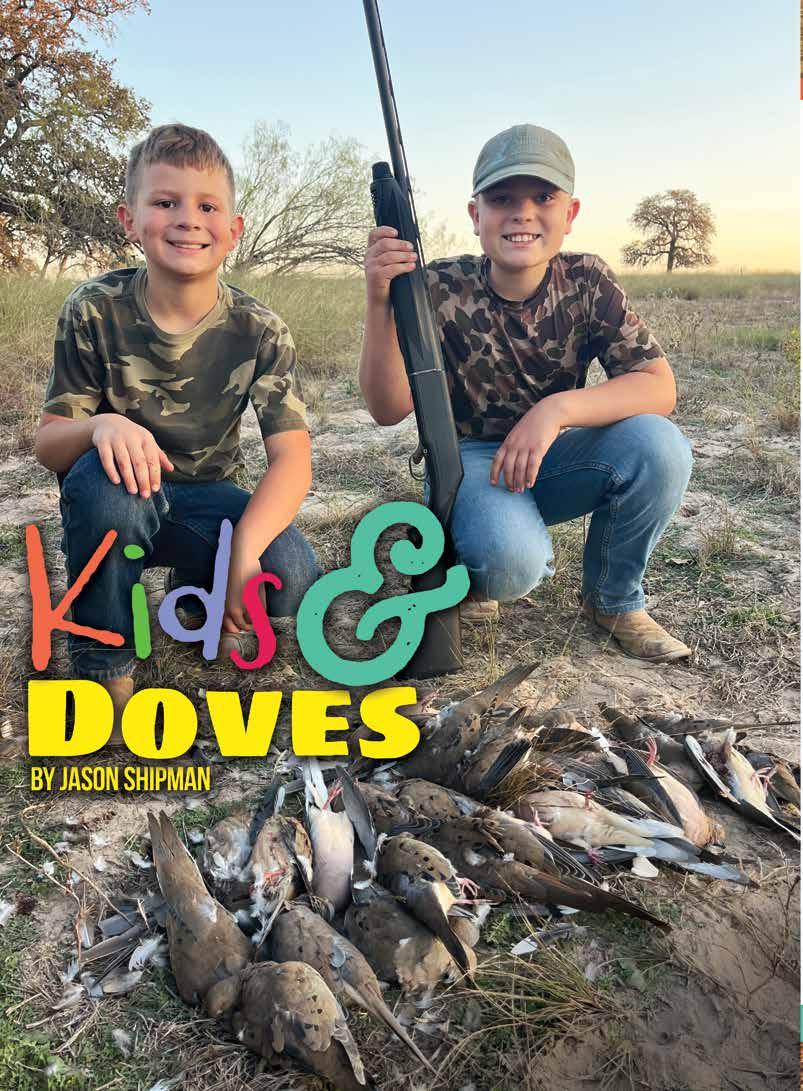
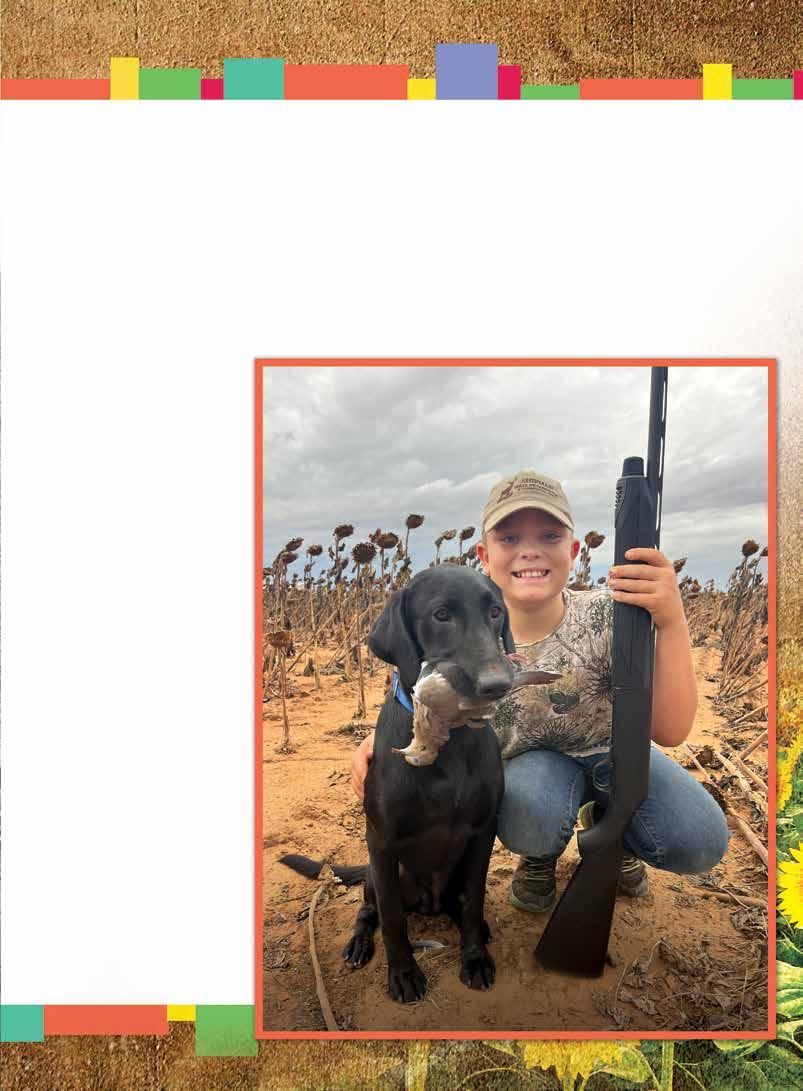
Dove season marks the beginning of all the hunting seasons in Texas. It’s the real hunting opener so to speak, and a warmup for things to come. After a long hot summer, hunters are eager to grab a shotgun and get out in the field to test their wingshooting skills.
The numbers are telling. According to Texas Parks and Wildlife estimates, approximately 400,000 hunters harvest 6 million birds every year, with an annual economic impact of $300 million to the state. Roughly 30% of the national harvest of mourning doves and 90 percent of the national harvest of white-winged doves occurs in Texas. Everything is bigger and better in the Lone Star state, and that holds true with dove hunting.
Dove hunting appeals to so many people for several reasons. It doesn’t require much of a commitment in terms of preparation, time, or money. Affordable hunting opportunities abound. An afternoon off work can easily be turned into a good dove hunt.
Pavilion style hunts have become popular, and generally cater to large numbers of hunters over sunflower fields. These hunts often include a steak dinner, and sometimes even live music. In addition to offering lodging, many outfitters offer day hunting options for the budget minded.
Dove hunting is a social event, and more enjoyable in the company of friends and a good dog. The more the merrier, and it’s fun for all ages. Perhaps the best thing, it provides a great introduction for new hunters. Bird hunting is a great way to start kids hunting. A single shot .410 or 20-gauge is simple, yet effective, and a great shotgun option for a young hunter just starting out.
Gun safety is a priority for everyone and cannot be stressed enough. Care should be taken to provide instruction to newcomers on basic firearm safety. Additionally, game laws including licenses, endorsements, HIP certification, hunter education, seasons, bag limits, shooting times, shotgun plugs, etc., should always be adhered to.
Specifics aside, someone new to dove hunting should set up for success. Pass shooting high flying white-wings is not a great place to start. Consider starting with easier shots around a pond or MOJO decoys and allow confidence to build as wingshooting skills develop.
I have enjoyed many a bird hunt with my kids. It has been very rewarding to see their progression. I have taken care to always involve them in the hunts and let them decide when the time was right for them to actually grab a shotgun and start hunting. We’re still in the process, but generally I start them out with a 20-gauge single shot until they’re proficient before transitioning them to a youth model gas operated semiautomatic 20-gauge.
Based on experience, I believe this option offers the least amount of recoil and is therefore the most comfortable to shoot. Brooke, 13, began shooting last year and was a quick study. Hunter, 11, has been at it for a few years and is very accomplished. Tristan, 9, is ready to pick up a shotgun this year. I would be hesitant betting against Hunter in a wingshooting or sporting clays match. He’s a crackerjack shot and there’s a good chance he’ll take your money.
Joking aside, it’s always a pleasure to see them having fun while hunting, as well as watching the dog work. Our black Lab named “Doc” is arguably the best dog I’ve ever had, and times are good. Doc is young, but has a great “onoff” switch and loves to hunt. He’s a very obedient dog and retrieving is a breeze for him. Our ongoing joke is that Doc took Tristan’s job as our retriever. Not to worry though, because Tristan was ready to hunt anyway.
The kids and I, like many other hunters, look forward to opening day. Afternoon hunts over water holes or on planted fields always provide great action and never seem to disappoint. Additional areas we like to target are treelines, fencerows, and flyways between feeding, watering, and roosting locations. We generally put out a couple of mojo decoys that draw the birds in like a moth to a flame. Of course, some hunts are better than others in terms of numbers, but they’re all good.
After the hunt we always have a great time cleaning the birds. This time is always accompanied with a fair amount of stories and good laughs. I’ll admit that some of these stories might get stretched a bit, but it’s all part of the fun. Back at home we relive the hunt experience yet again at the dinner table while feasting over the family favorite: bacon-wrapped doves.
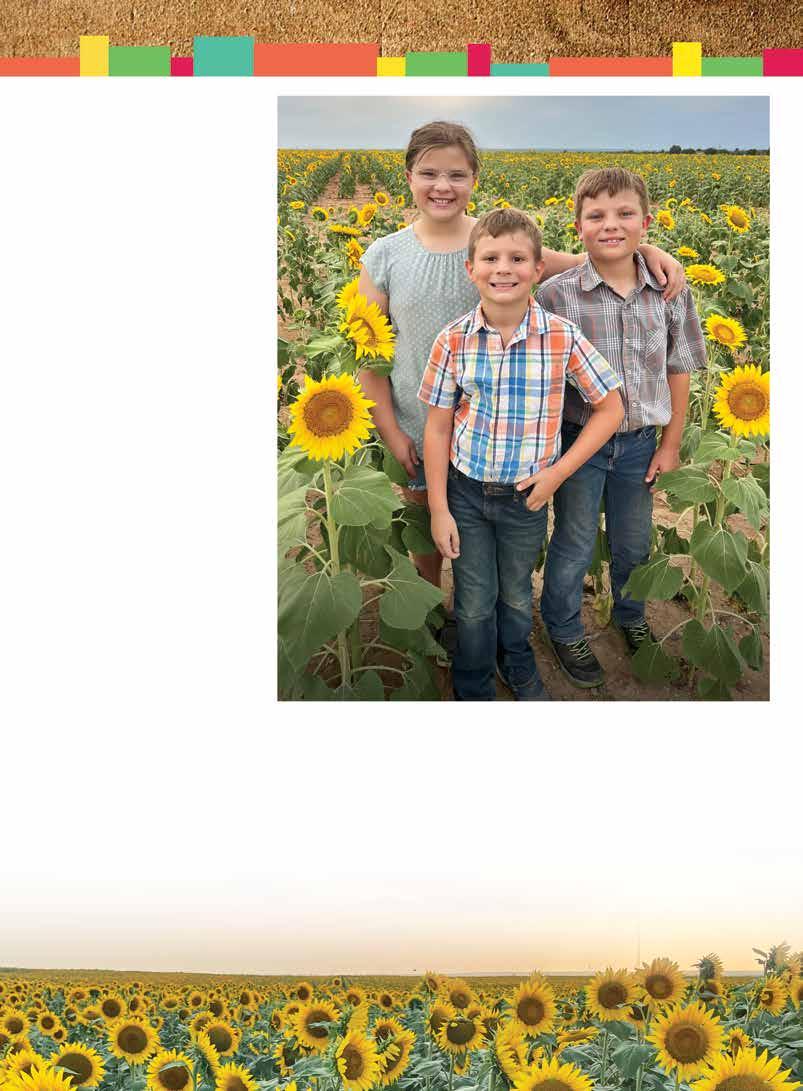
Countless, unforgettable memories have been made with my kids in the field, including many firsts, and I’m sure they’ll never miss a dove hunting season. It’s deeply ingrained within them and so the hunting tradition will continue and live on. This season, be sure to make time to take your kids, or for that matter, anyone who may have an interest, on a dove hunt. Whether the birds fly or not, I guarantee the good times and camaraderie shared are sure to be a rewarding experience. Get out there, go hunting, and have fun!
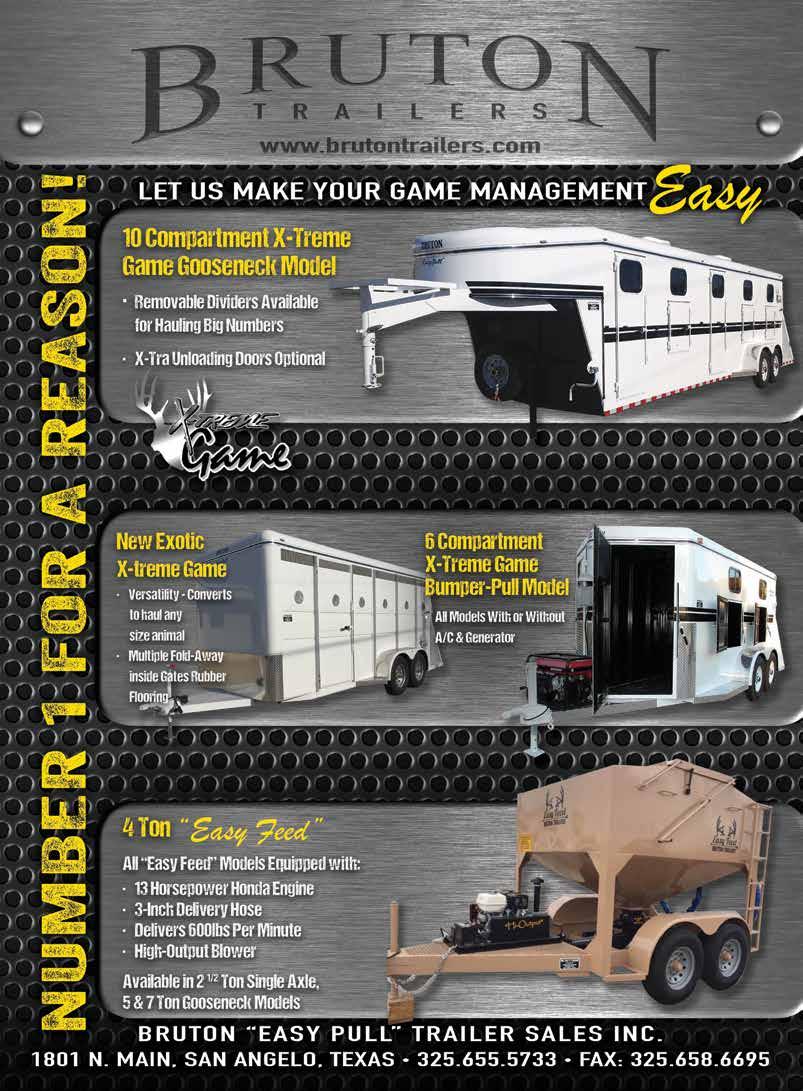
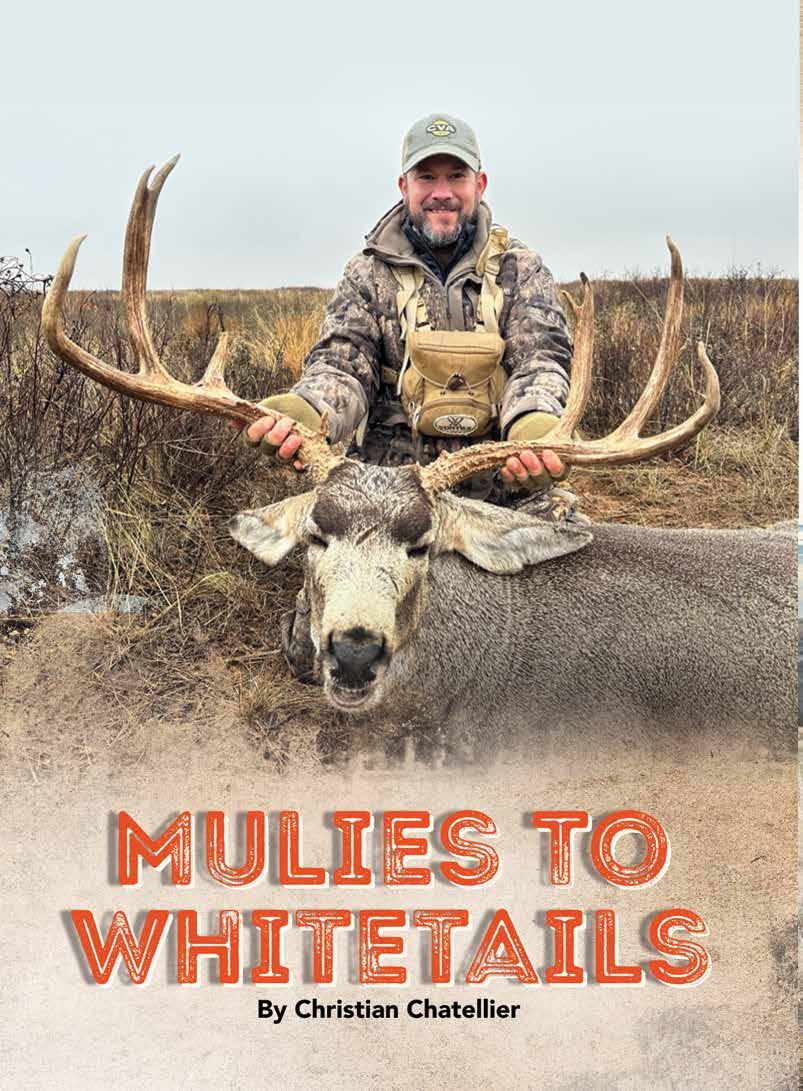
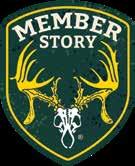
The 2023-24 season started out normal as usual. Being an industry veteran with Dead Air Silencers, I started the season with demos, shows, and training events, but eventually found time to scout and get ready for hunting season. With a love for hunting North and West Texas, I found myself trying to fit in a few hunts as well as a Colorado elk hunt. All this being way different from how I was raised hunting.
I’m from a small town in South Louisiana. I grew up hunting in the swamp for deer and ducks. You were lucky to see a deer each season, and really lucky to see one with a good set of antlers. I can remember hunting in Alabama with a good friend of mine and his family. We worked in law enforcement, so we only had a few days at a time to work the farm, scout and hunt.
But that was the beginning of my trophy hunting. They taught me about deer herd management, correct feed schedules, stand placement, and hunting the wind. This really started my strategic journey to hunt trophy animals. It also started my
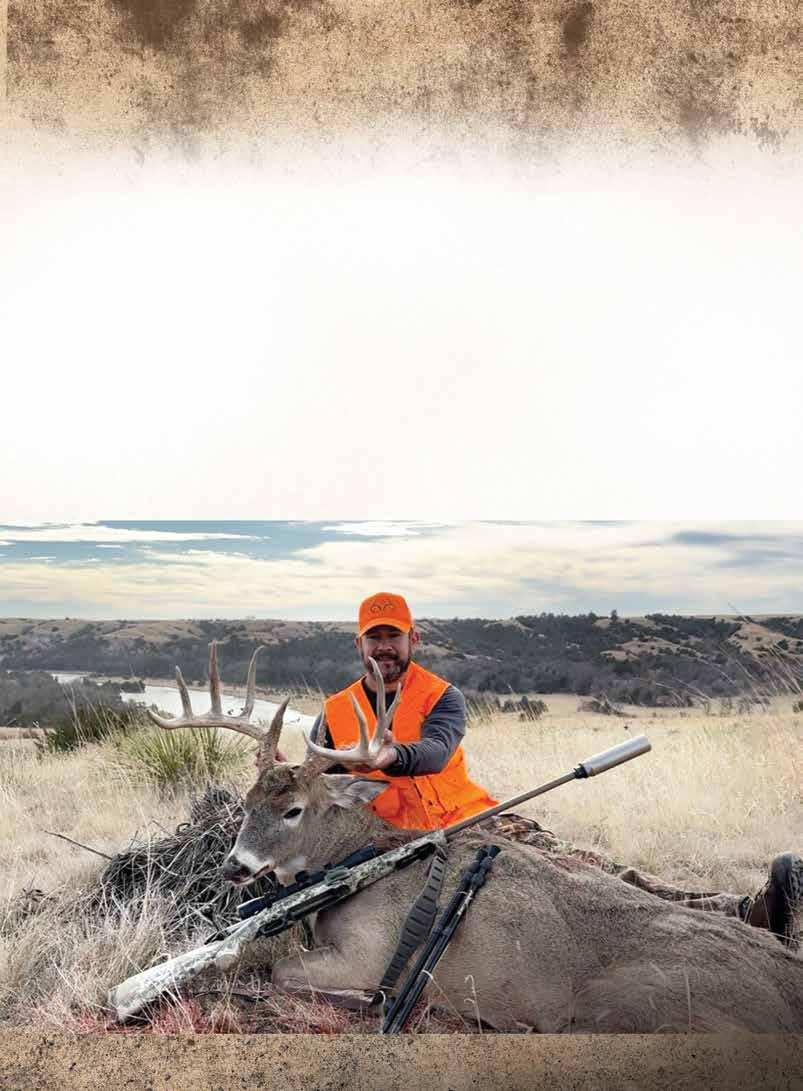
desire to learn more about deer management.
After leaving the Louisiana State Police and serving in Iraq for five years, I missed lots of hunting time. Upon my return from overseas, I found myself in a Mississippi hunting club hunting trophy deer. After that season I returned home to Louisiana with the largest deer I had taken to date. A 176-inch whitetail taken with a muzzleloader. Shortly after that, I took a job in Texas where I met my wife and planted my roots.
I started working in the outdoor industry on the real estate side selling large hunting ranches in Texas. I attended many outdoor management classes and deer management classes. I was fortunate enough to get invited to help on a ranch and guide hunters. That was a true turning point and opened my eyes to the Texas hunting lifestyle. This is how I was able to get into the outdoor industry after guiding a group of industry personnel on a hunt. I’m truly blessed.
For the ’23-’24 season I had planned a hunt in Colorado for elk during second rifle season. It’s usually pretty busy up there
at that time, so I also booked a rifle mule deer hunt the day after Thanksgiving in the Texas Panhandle. I was also helping a friend of mine in the industry at his ranch in North Texas. He has worked his ranch intensely for whitetail hunting and a family atmosphere. Again, I’m truly blessed.
So a few friends flew to the Texas Panhandle. One drove out with his camper for us to stay in. We got set, ate dinner and sat around talking about hunting. Our outfitter Justin with JWP came in and went over our times and plans. We had hunted with Justin before and knew all would be great.
The weather came in, including the sleet and rain. The low temps were in the teens that morning. Our good friend T.J. had also come along to hunt. He had beaten the odds with cancer and started his last round of chemo. He was excited to be there.
That morning, we were scouting and seeing lots of deer. The first being the buck I wanted to take from last year, “Wide Load.” He was a main frame eight mulie, but had broken his G2 on the right side, which had a split. I have pics earlier of him and video. We split up in two side by sides to cover more ground. We got a call T.J. had shot a deer, and we were all so excited for him. We were spotting deer on a large hillside when another call came in that T.J. went down and wasn’t breathing. Our hunt turned into a nightmare.
After medical help got to us, which takes a very long time due to the area and weather, T.J. had passed away due to a blood clot. We spent the day at the hospital speaking to doctors and the family back home, as we were a day away from Louisiana. We all packed up and decided to head back home to be with the family. My friends told me, however, to stay and hunt because he would want that. “We will go back home and come back maybe one day,” they said, “but he would want you to
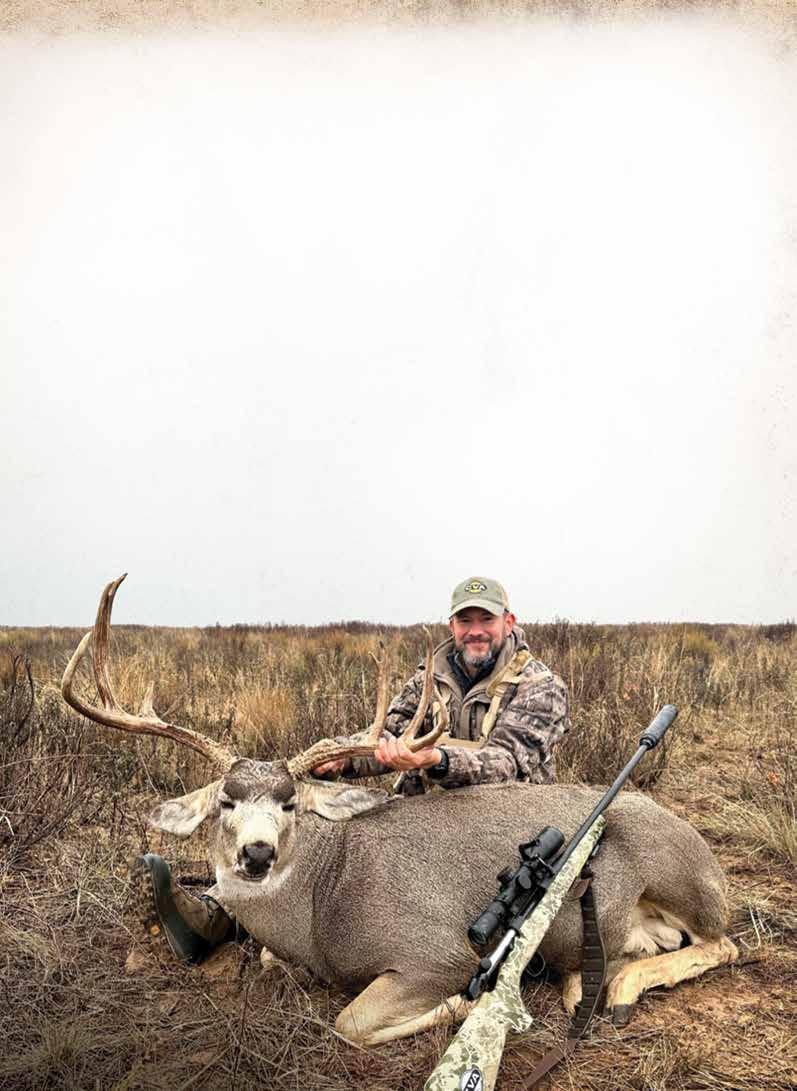
hunt your deer. Just get it on camera.”
That was a hard evening. We decided to go back out to retrieve our gear at the ranch. The Lord would have it that the first thing we saw was Wide Load! We prayed and decided to go after that deer. After a few hours and the sleet coming back we were able to get on the deer and take him. With my outfitter helping run the camera, I was able to take him with the CVA 6.5 PRC and the New Dead Air Nomad Ti silencer. The other deer just stood there not knowing what the shot was. What an animal. The ups and downs were tremendous. What a venture.
The next week I found myself filming in Nebraska by myself. I only had three days to make it happen. On day one I watched deer and took notes. Day two was another turn. I was watching a gorgeous sun rise one like I had never seen before.
I got a call that my grandfather who taught me to hunt had passed away. I was heartbroken, but it’s God’s will. I was filming a large deer rutting when a car came by on the ranch road and scared them all away. I walked down a ridge behind my location to set up and the deer I was watching popped up. I took him with only two hours left before I had to leave. What a deer. A main frame 10. My first Nebraska buck.
A few weeks later I ended up with my North Texas hunt with a dear friend at his camp. We had hunted some, but we passed on several bucks that were just not mature or not what we wanted to take. This is a fair chase large farm. The last day it started to storm, but we had to get out there and hunt, so I sat alone in a tower blind and at first light, the deer we had pictures of appeared. I took him, using the new silencer. All the other deer stayed around and did not get scared. Amazing what hunting with a suppressor can do. And that finished the season for ’23-’24.
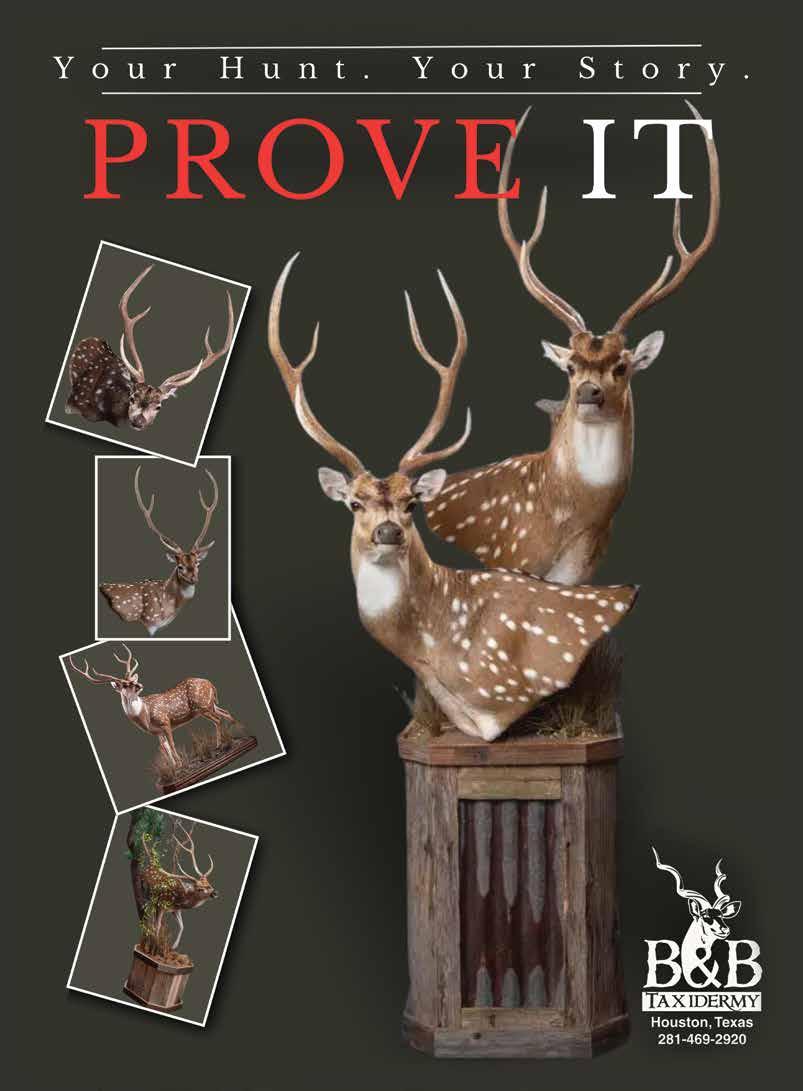
Irecently read an old article in the September 1943 issue of Outdoor Life, titled “The Incredible Antelope” by famed gun writer, Jack O’Connor. It starts as follows:
“A couple of friends of mine drove up in front of my house one day with two buck antelope. They almost caused a traffic jam, and one passer-by, who stood gaping at them, said, “Good Lord, there just ain’t any such deer!”
That is about the usual reaction to a first sight of that amazing creature, the pronghorn. The average American is used to looking at deer, and when an antelope comes along he isn’t prepared for it.
A big buck antelope feeling his oats, prancing along with his rump patch extended so he looks as if someone had tied
a sofa pillow on his rear end, his red mane up, his fantasticlooking black horns coming just above his eyes, looks like nothing else in the modern world-except an antelope.”
O’Connor had a way with words. Truly, there’s nothing else like Antilocapra americana, the scientific name for pronghorn. They’re unique to the American West and the only horned animal to shed their horn sheath each year. In Texas, huntable numbers exist in the Trans-Pecos, western Edward’s Plateau region, and the Panhandle. Hunting gets controlled by permits issued to landowners. After summer surveys, TPWD issues tags to landowners who request them and that have huntable numbers. Top locations for big bucks include Hudspeth County in the Trans-Pecos and Dallam and Hartley counties in the Panhandle.
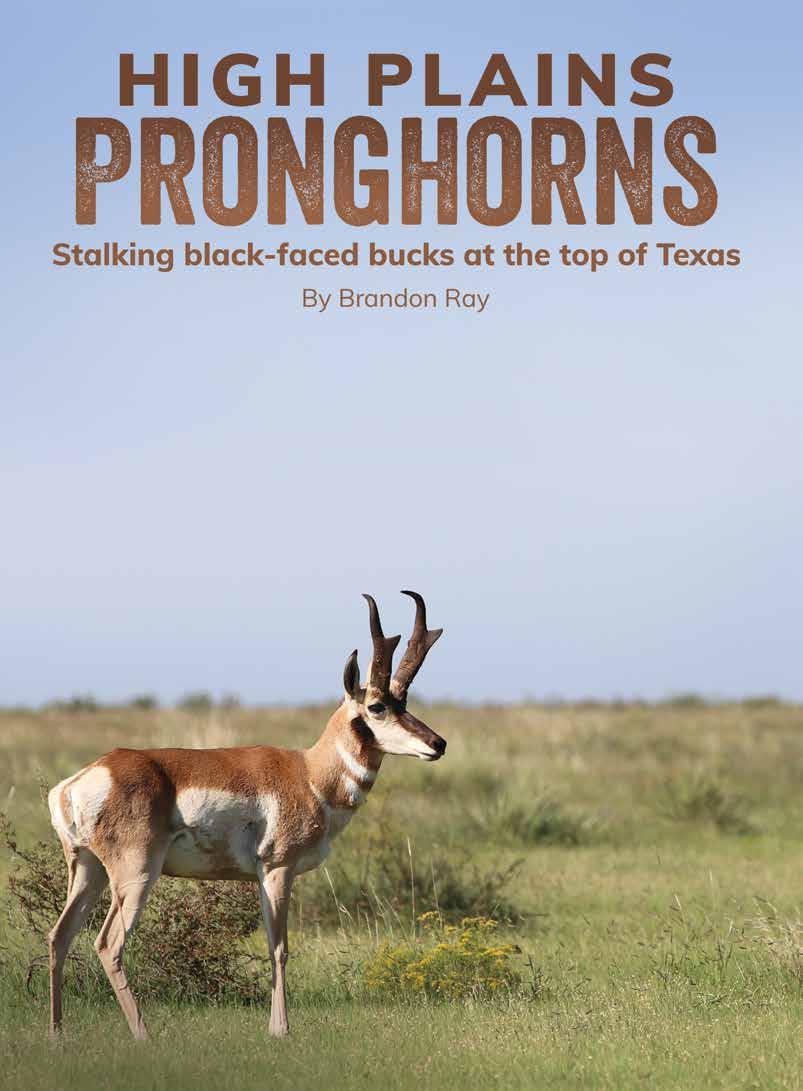
A mature pronghorn buck photographed on the plains.
I asked Shawn Gray, TPWD program leader for pronghorn and mule deer, for the current numbers and health of the state’s herd.
“As of last summer, our aerial surveys estimated around 19,500 pronghorns statewide. For the Trans-Pecos, numbers were around 4,500 and holding on even under terrible drought. We believe our intensive management actions regarding brush control, removing restrictive fencing barriers, and predator management are helping keep numbers stable until we can build herds back with higher fawn production when rains finally come back. In the Panhandle, numbers are close to 15,000 pronghorns and have stabilized since the previous couple of years of decline from drought.
“We are also working on doing more habitat management focusing on mesquite removal in some areas of the Panhandle as well as predator management in the northwest Panhandle to build back the herds faster to use for more translocations to new areas of the Panhandle with prime pronghorn habitat and continuing to supplement herds in the Trans-Pecos and western Edward’s Plateau. Dates for the 2025 season are set for October 4-19.”
A pronghorn hunt starts with your eyes. Plan on spending lots of time peering through optics, scouring the horizon for tan-colored, blocky shapes and then evaluating bucks for horn size. Wear 10X40 binoculars with a comfortable bino harness around your neck. If your optics have a built-in rangefinder,
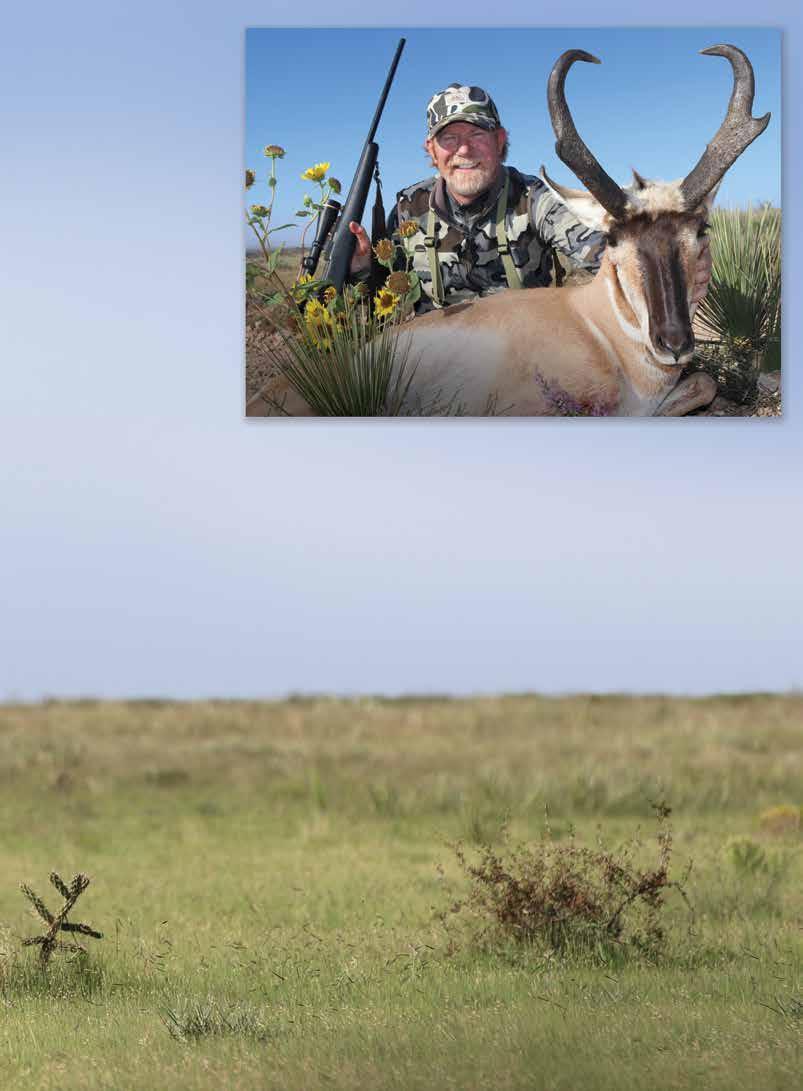
that’s even better. Last year, I used Sig Sauer’s Kilo series 10X binoculars with a rangefinder to pin down the exact distance to my buck and hold my crosshairs accordingly for an accurate shot.
Next, bring a variable-powered spotting scope. The added magnification of a spotter saves time when evaluating bucks far in the distance. Is he big enough for a stalk or not? The spotter will tell you and save boot leather.
I use mine mostly on a window mount from the truck, but a small tripod stays stashed in my backpack for long hikes from the rig so I can steady the scope for accurate field-judging. Last year’s spotter was a vintage Cabela’s Big Sky ED model. I bought the mint-condition scope on eBay for under $300. It has a variable-powered eyepiece that adjusts from 20-60X and a 66mm objective.
Pronghorn country is prickly. Yuccas, chollas, prickly pear cactus and sand burrs will all attempt to ruin your day. It’s also rougher than it first appears. Use swales in the prairie, ravines and clumps of brush to conceal your approach. On a long crawl, you will appreciate thick, canvas-type pants from Carhartt or Levis, leather gloves and even leather patches sewn on the elbows of your camo shirt or jacket or the knees of pants. Whatever rifle you use for deer will work fine for pronghorn. You don’t need a Magnum. A mature pronghorn buck only weighs 110-150 pounds live weight. My go-to antelope calibers are the .243 Win. and .25-06 Rem.
Top that midweight bolt action rifle with a 3-10X scope, and practice with it. I sight mine in about 2-inches high at 100 yards and know the exact hold over for shots out to 300 yards. The wind always blows in pronghorn country, so monitor the wind speed and direction before squeezing the trigger. Windy conditions and long shots would be a viable reason for carrying a bigger caliber and heavier bullets, despite the target animal’s smallish size.
My goal, however, is always to get as close as possible. In 30 years of pronghorn hunting, I can only remember one buck I’ve shot slightly past 300 yards. Most were taken under 150 yards by using rolls in the landscape, or decoys to get close.
Anticipation was running high for last year’s annual Texas Panhandle pronghorn hunt. At daybreak on September 28th, while shuffling gun cases and backpacks in a big, flatbed pickup, rancher R.A. Brown said, “There’s a good buck south of headquarters I’ve seen a couple of times. We can start there.”
We found the target buck in a large flat. A few scrubby mesquites and patches of yuccas dotted the otherwise bleak prairie.
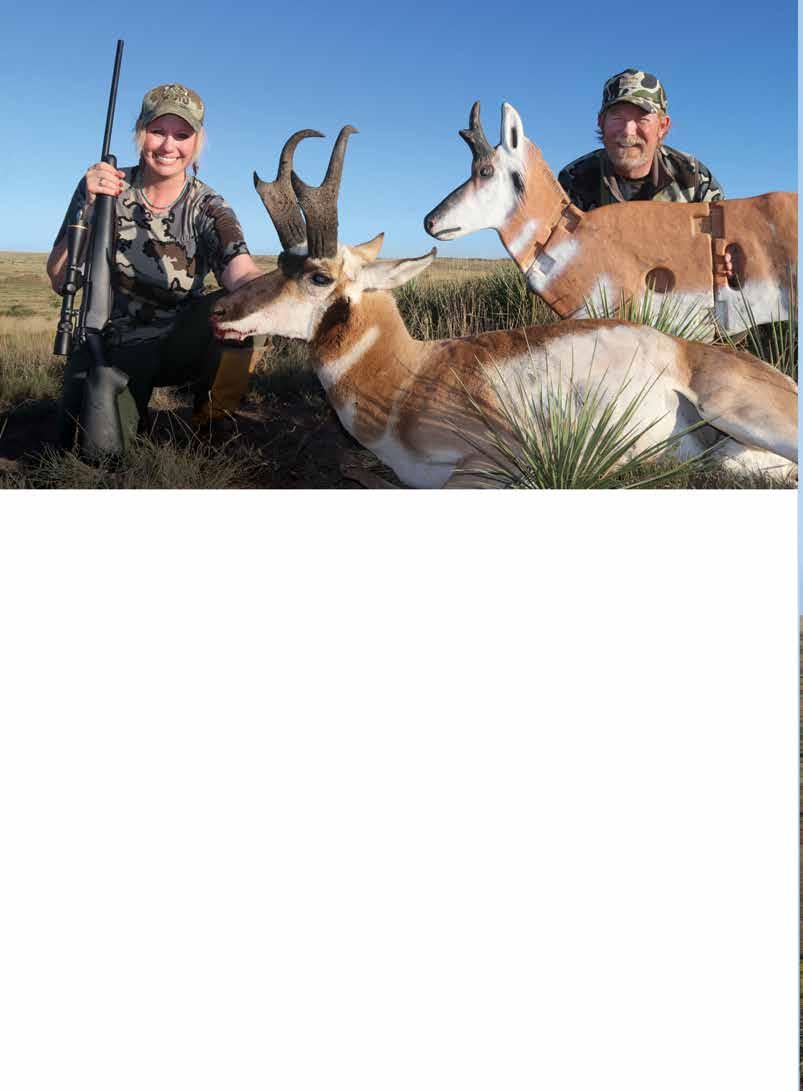
The buck was with a single doe, cocking his head side to side and staying close to her. Through the spotting scope from 700 yards away, he looked good.
We guessed his horns at 14 inches with decent mass. The pair were alert, staring at us hard for ten minutes. Finally, they bedded down. “What the heck,” I said as I grabbed my rifle and spotting scope. “I’ll just try a stalk and see if I can get close enough.”
Bent at the waist, I put a large clump of yuccas between me and the bedded antelope. That cut the distance by 100 yards. From there, it was all on hands and knees. I would scoot the short tripod and scope ahead of me, then crawl to the next clump of yuccas or small mesquite.
Finally, winded and dirty from the long crawl, I sat up and checked the distance with my rangefinder. It said 298 yards. I knew from lots of practice; I could hold the horizontal wire of my crosshairs even on the buck’s backline and the bullet from my .243 would drop right into the kill zone.
I slowly eased up onto my knees, setting up the short tripod and resting my rifle stock over the top of the spotting scope. The doe stared and then stood up. Next, the buck was on his feet. When he turned broadside, I took a deep breath and touched it off.
Both antelope ran a short 20 yards and stopped. The buck started to wobble and then tipped over. It was 9:28 on opening morning and we were already taking photos.
Sweet Lisa Armbruster has hunted antelope with me for years. Most of her bucks have been taken behind a decoy. Why? I asked Lisa Lu what the attraction is to hunting pronghorns and specifically to using decoys.
“I love everything about antelope hunting. I like the big country, the way the grass and sage smell and I like the fact you can stay out and see animals all day. The weather is nice in antelope season with cool mornings and warm afternoons. To me, hunting antelope is more exciting than sitting in a blind, like most deer hunting.
“Antelope are so unique and my favorite wild game to eat. I like hunting with a decoy because when you make a long stalk and a buck comes to the decoy, you feel like you have really earned your shot. Most of my shots over decoys have been close, under 50 yards.”
The following are the top three pronghorn entries in the Texas Big Game Awards (TBGA) from the 2024 season. The minimum net score to qualify for TBGA is 70 inches.
Hunter’s Name County Gross Score Net Score
1. Dan McBride Hudspeth 87 3⁄8 85 4⁄8
2. Bill Wilson Brewster 85 3⁄8 84 2⁄8
3. Steven Wolfe Hudspeth 85 84 1⁄8
Obviously, take precautions when using a decoy. On private land, let other hunters on the ranch know where you’ll be using a decoy. I’ve used plywood silhouettes of a cow, homemade antelope buck and doe decoys, and commercially offered decoys, all with various degrees of success. I’ve never been able to get within bow range with cow decoys, but between mid and late September during the rut, I’ve been able to lure mature bucks in under 50 yards using small buck or doe decoys.
It was late afternoon on day two of the season when we spied a heavy-horned buck with a small harem of does. He was constantly circling his four does, trying to round them up. As we watched, he trotted over a small bluff and down into a valley out of sight. It seemed like the perfect opening to make a decoy attempt.
Lisa Lu and I made the stalk until we peered over the back of our vintage Mel Dutton decoy and into the valley below. The buck was alone, looking away from us at roughly 150 yards. It only took a few seconds for him to spin around and notice the
decoy silhouette. He stared for five long seconds, then started uphill towards us at a steady, fast walk. When my rangefinder said 40 yards, I whispered to Lisa Lu, “When he turns broadside, shoot.”
The buck gawked, facing us head on, then he started to circle to the downwind side. His mane bristled up and he had rage in his eyes. When he got to 20 yards, I grunted with my voice, and he stopped. Lisa Lu steadied the .243 on her shooting sticks, then sent the bullet on its way. The buck stumbled and went down next to a spiny yucca.
The big-bodied pronghorn had a handsome black face and thick horns. Even though they were only 13½ inches tall, the 6½-inch bases pushed his gross score to 76 inches.
Hunting pronghorns is one of my favorite fall traditions. Whether you belly crawl and make a 300-yard shot or try a decoy and fool one inside bow range, it’s always a good time. As O’Connor once wrote, “it looks like nothing else in the modern world-except an antelope.”
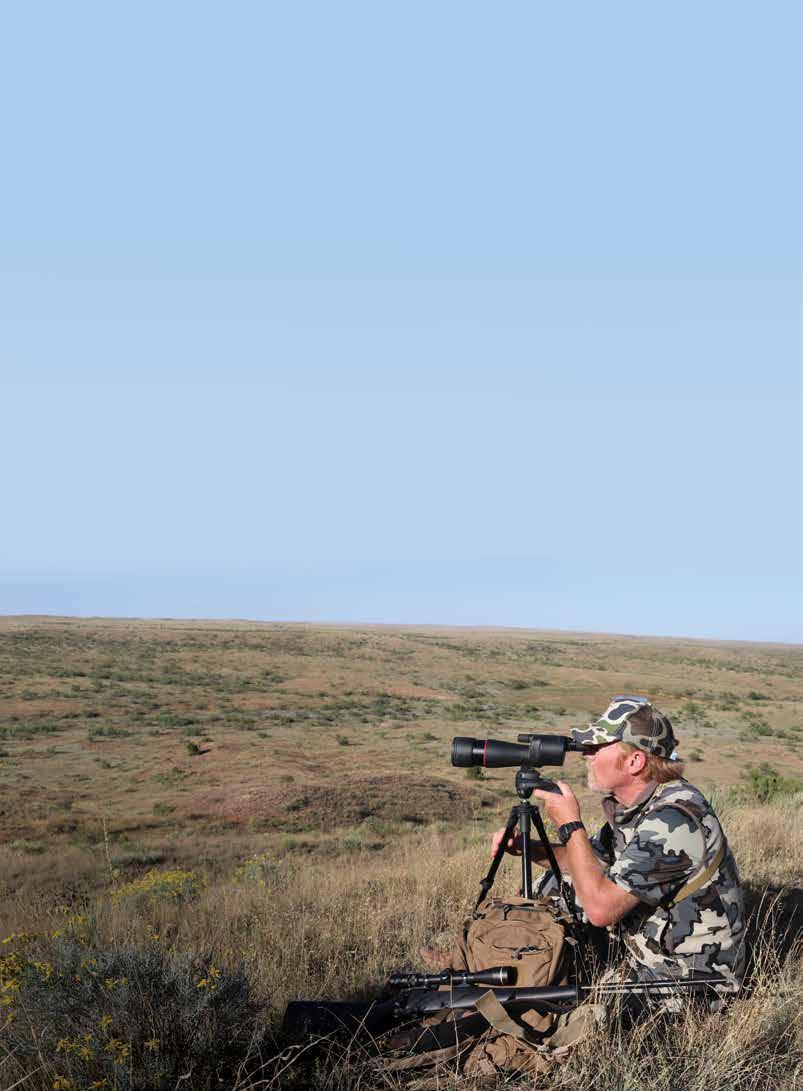
The author glassing big country in the Texas Panhandle in search of pronghorns. Tools for this game include 10X40 binoculars, a tripod with variable power spotting scope, and an accurate rifle.


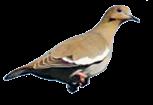
The Texas dove hunting landscape has changed drastically over the years, as with every other outdoor pursuit here in the Lone Star state, but mostly for the better. Yes, the economics of a good dove outing have certainly risen, as with the accompanying gear that most folks now tote afield.
However, at its core, hunting for mourning doves and whitewings remains a relatively inexpensive and low-impact way of kicking off fall hunting seasons while allowing an easy entry for youngsters and first-timers to experience what truly can be a grand pastime. If there’s a single piece of advice to offer, it would be to invite the next generation of hunters along and show them what the great outdoors truly has to offer. After all, they’re the ones who will be stewards of what we as hunters will pass on to them.
The largest impact on dove hunting for the better is the vast expansion of the whitewinged dove population in the past couple of decades, especially into and near large urban centers with healthy populations of eager hunters. Years ago, pursuing whitewings was very much a hunt that centered on one specific area of our sprawling state –the Rio Grande Valley – which meant that unless you called deep South Texas home, you probably had to log a lengthy
Whitewings can be found concentrated in and around most metro areas in the state, providing good hunts not far from many large cities.
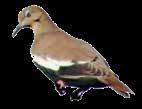
road trip to make it down to prized dove havens not far from the Mexican border.
However, following a devastating freeze in December 1983 that killed the nesting valley citrus groves, the whitewing population started expanding north — first into areas such as Kingsville and Corpus Christi — and later into Uvalde, San Antonio, and Austin. As of today, the larger cousins of mourning doves have migrated across most of the state and can now be found in almost every county in Texas.
As biologists note, roughly 90% of the breeding population resides in or near urban areas. Simply put, you now don’t have to go far to get into huntable numbers
of whitewings. They’ve come to you. Texans are adept at bagging doves of all varieties, especially whitewings, with an annual mixed harvest of 6 million from overall populations of 30 million mourning and 12 million whitewings. Most of the recent expansion out of The Valley, according to biologists, was due to hard freezes that decimated citrus groves. After those freezes, and with increased human encroachment and other factors, whitewings began to migrate out of deep South Texas, first appearing in the San Antonio metro area, and later moving farther north, east and west.
TPWD’s 2000 spring breeding survey – it’s hard to believe that’s 25 years ago – showed just how things had changed from the previous decades. The agency estimated roughly a half-million whitewings in the Lower Rio Grande Valley and about 700,000 across the rest of South Texas.
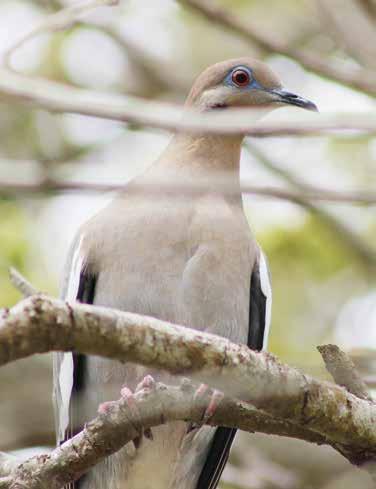
Today, the overall Texas breeding population numbers more than 12 million, according to TPWD. Most of that population prefers nesting and roosting in urban areas with large trees and consistent food and water sources. By comparison, the mourning dove breeding number is typically almost three times that in good years, providing most of the daily bag limits for a majority of hunters.
Texas accounts for 30% of the total mourning doves and 85% of the total white-winged doves killed in the U.S. each year, far more than any other state, for obvious reasons. It’s not uncommon for hunters in the Pineywoods, Hill Country
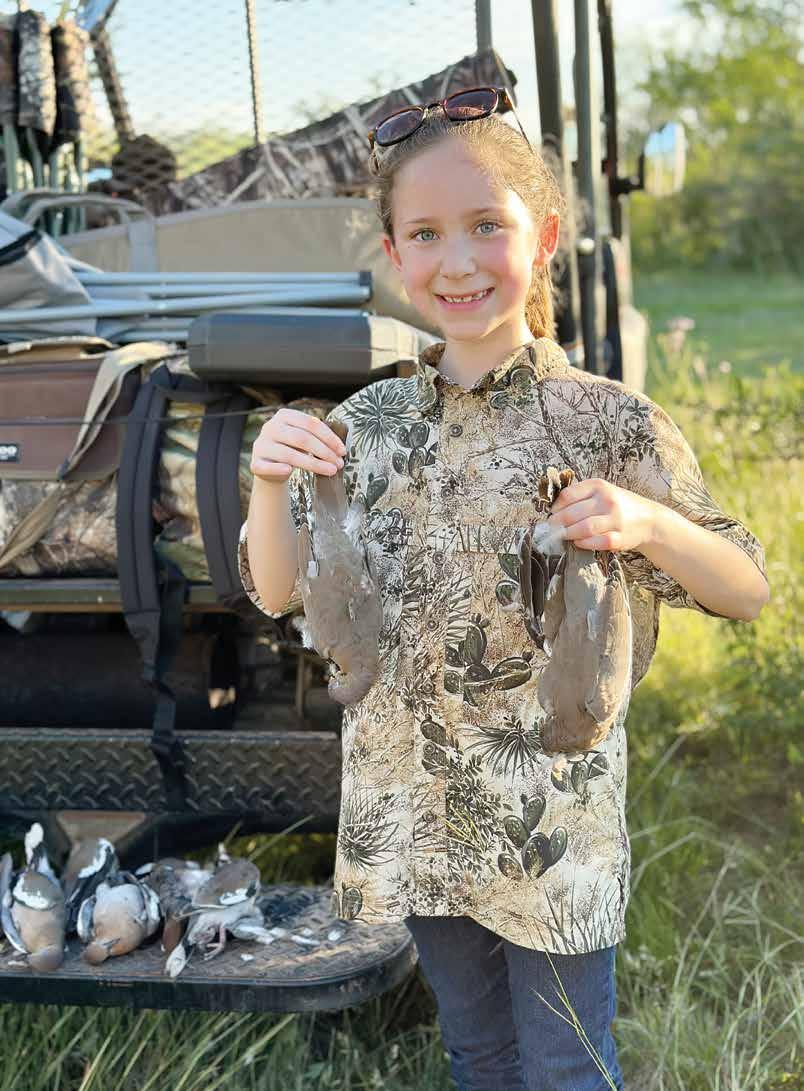
The spoils of a good dove hunt are enough to make anyone smile, no matter their age.
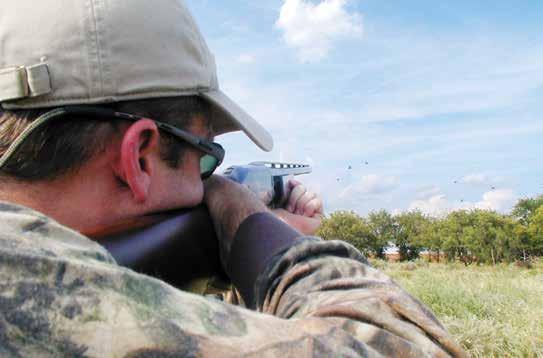
and Rolling Plains to bring home at least a few whitewings in their daily aggregate bag limit.
The obvious advantage to the whitewing
expansion is that it has provided additional hunting opportunities for hunters around urban areas all the way from Brackettville east to San Antonio and Tyler,
Practice makes perfect when dove hunting, no matter which version of the species may be flying. Don’t wait until opening day to pull out the shotgun.
with northern expansion to Big Spring and Brownwood. Even Houston and the Dallas-Fort Worth hunters get a few shots at whitewings where sunflower and corn are available to whitewings.
Public hunting can be tough based on a number of factors, but TPWD provides most of its numerous dove hunting opportunities near urban sprawls that can be accessed using an annual public hunting permit. If you don’t have a dove lease or access to private land, the public hunting options provided by the agency are certainly less expensive and can be quite good if new waves of
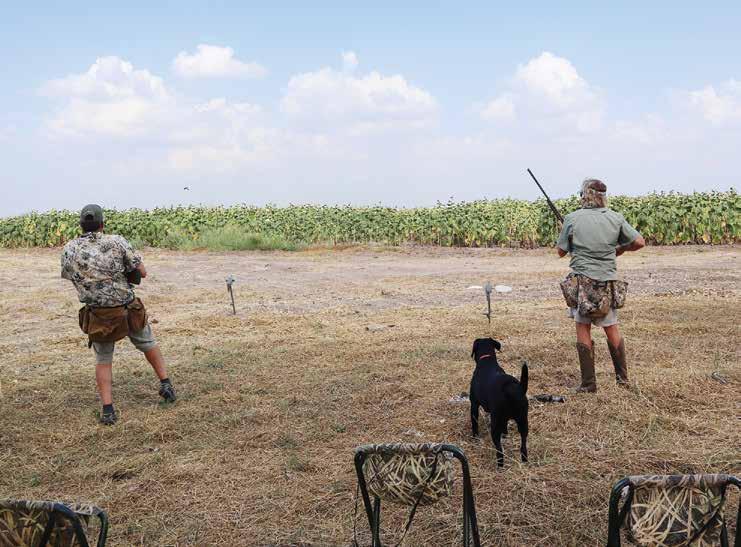
Years with good moisture levels help provide grain crops whitewings thrive on and will usually keep migrating birds for much of the season.
migrating birds cooperate.
Aside from The Valley and urban areas, whitewings in recent years have also expanded their range across Texas’ coastal counties in a big way. Starting at Port Mansfield and heading up to Victoria, the I-69 corridor has become among the notable hot spots for great whitewing hunts, featuring a variety of terrain that can hold doves all season.
The same can be said for the State Highway 35 corridor beginning north of Corpus Christi all the way up to south of the Houston sprawl. That area is usually considered more of a traditional waterfowl haunt. However, it has become synonymous with excellent dove excursions, especially in years with good moisture that aids standing agricultural grain crops.
If you’re hunting doves, it’s always an occasion to also target the early teal season in September in traditional hot spots along the coast that offer great bay hunting opportunities when the waterfowl counts are good.
And, if you’re anywhere near the coast, it’s always customary to schedule some time for the saltwater flats in pursuit of speckled trout, redfish and flounder. Wing shooting may be the main draw, but it’s
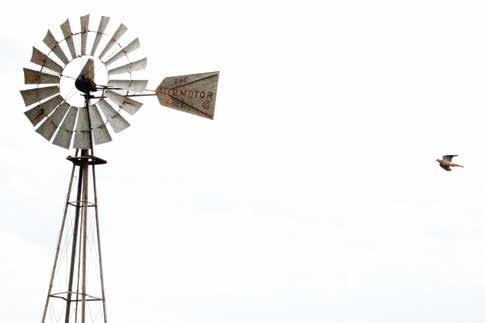
Doves and windmills in Texas go hand in hand. If you have consistent sources of water, you’re going to have consistent flights of birds.
hard to think of a better cast-and-blast combo than bringing home a couple of limits of doves and couple of limits of fillets. If you’re looking to spoil yourself, friends or family – or all the above – many fishing guides and outfitters today specialize in offering dove and waterfowl hunting as part of their outdoors repertoire. It may truly be the Golden Age of dove hunting in Texas! Sure, the cost of every
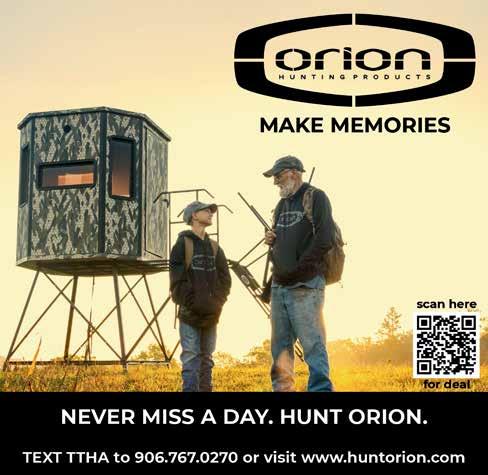
hunting excursion seems to be more expensive, but pursuing doves of all legal varieties – including those invasive Eurasian collared doves (that have no season or bag limit restrictions) – is one of the easiest and relatively inexpensive ways to enjoy the start of fall hunting seasons with friends and family.
Here’s to another exceptional year of Texas hunting at its finest!

By TTHA Staff
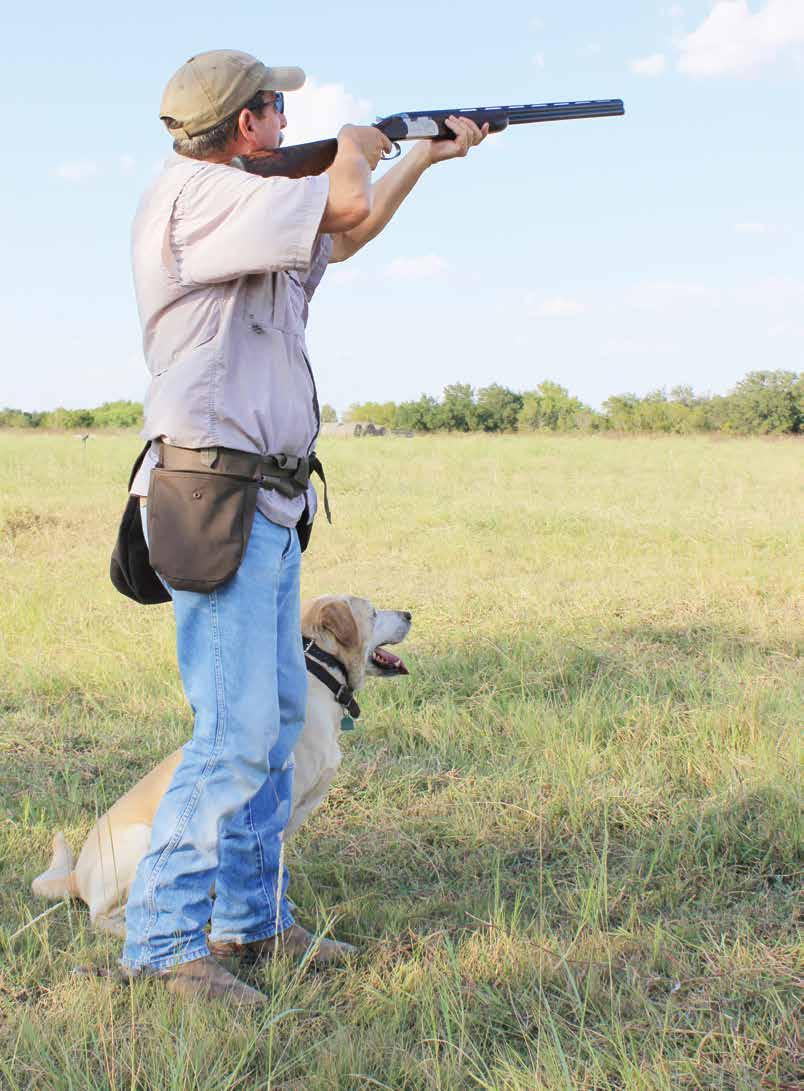
Hunters can plan on taking a high percentage of young doves early in the season, with mature doves becoming more common after early October.
The Journal has attempted to predict fall hunting for several years, using information from the field staff of Texas Parks and Wildlife Department to lay out the prospects for doves, waterfowl, whitetails, and quail. Time has shown the most important predictions for the benefit of most fall hunters lies in migratory game birds.
How do you predict the coming deer season for the No. 1 whitetail hunting state in the nation? In general, deer hunters are more concerned about the price of gasoline and corn than the predictions for good hunting. The general trends in whitetail hunting go from good to better, so in the future we will skip whitetails in this fall hunting forecast.
Upland game birds and animals usually follow weather trends, and local hunters know how the weather has been, so we will leave upland game to the local hunters across the state.
Two important species of migratory birds that have the interest of hundreds of thousands of hunters are mourning doves and teal ducks. Both move from north to south in regulated patterns, with teals—bluewing, green-wing and cinnamon—arriving on coastal prairies in mid-August. Mourning doves have set patterns of migration, and all migratory bird hunting seasons are determined by The Migratory Treaty Act signed with Canada in 1918. Mexico joined the treaty in 1936 to include all of North America.
Migrating game birds travel from north to south based on weather patterns and food supply. Predicting
when blue-winged and greenwinged teal arrive on the coast, or when other migrating geese and ducks will leave breeding grounds in northern provinces determines when hunting seasons open and close.
Mourning doves often have varying migratory patterns, and a high percentage of birds do not migrate at all. For this reason, many young doves are hardly out of the nest when hunting begins by treaty on Sept. 1. Research has shown
that doves actually migrating south to Texas do so sometime near Oct. 15. Therefore, hunters can plan on taking a high percentage of young doves early in the season, with mature doves becoming more common after early October.
The historic freeze of Dec. 18-30, 1983, caused a major shift in white-winged dove habitats in Texas. The gulffreezing, fish-killing temperatures destroyed the citrus orchards and nesting grounds of the Rio Grande Valley whitewings. At generally the same time, corn and domestic
sunflower production reached an all-time high in Central Texas. Over a 10-year period, the majority of white-winged doves that had nested in the Valley had moved to Central Texas. Today, dove hunters from Uvalde to San Antonio to Austin expect to see a lot of whitewings on every dove hunt. A 2024 survey of mourning doves in Texas showed a good increase to about 30 million, while whitewings continue to hover just over 12 million. It would be an understatement to say the Sept. 1 opening day of dove season in Texas is the
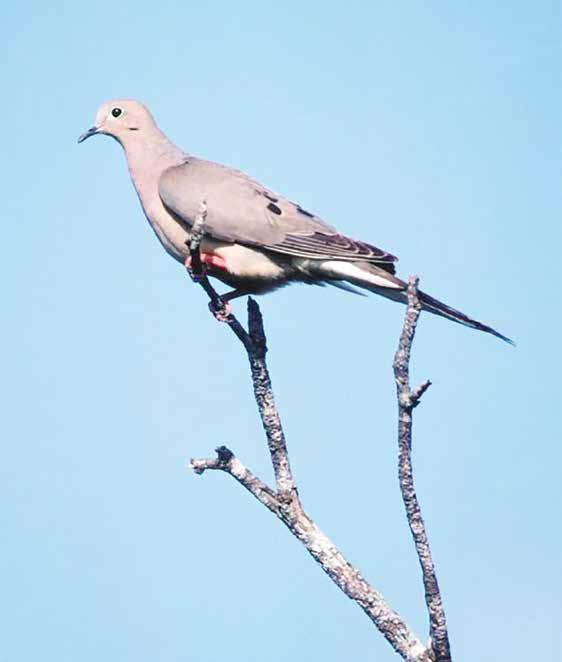
doves in Texas showed a good increase to about 30 million, while whitewings continue to hover just over 12 million.
most cherished hunting day of the year.
2025-26 dove predictions
TPWD’s Wildlife Division is responsible for seasons and bag limits for all webless migratory game birds. The agency’s Webless Migratory Game Bird Program Leader, Owen Fitzsimmons (owen. fitzsimmons@tpwd.texas. gov), has been a migratory bird specialist for many years. Here are some of Fitzsimmons’ recent remarks and predictions about the 2025 mourning and white-winged dove hunting seasons and what to expect.
“Coming into 2025, Texas dove populations are ex-
tremely healthy thanks to the last couple of years of great breeding conditions and subsequent population growth,” Fitzsimmons said. “Early spring brought plenty of rain to the northern half of the state this year, including the panhandle and oaks and prairies regions where roughly 70% of the state’s mourning doves are found. That bodes very well for the upcoming season.
“Areas along the Rio Grande border and hill country remained in severe drought conditions coming into the peak breeding season in May and June, and storms that provided much-needed rain to the I-35 corridor also brought plenty of wind and hail, likely
impacting early nesting in some localized areas. However, doves have been dealing with predictably unpredictable Texas weather for millennia, and breeding season conditions are decent to good across much of the state, with plenty of summer left.
“Overall, we’re poised for another year of good to excellent hunting this fall. As always, September weather will play a pivotal role in hunting success early in the season, no matter how many doves are on the landscape.”
2025-26 waterfowl predictions
Kevin Kraai is TPWD’s Waterfowl Program Leader (kevin.kraai@tpwd.texas.
gov). Kevin is a longtime waterfowl biologist who is responsible for the annual waterfowl hunting regulations approved by the Texas Parks and Wildlife Commission. We asked Kraai to give us a few predictions for the coming waterfowl season.
“As September approaches, waterfowl hunters across Texas are eyeing the skies for the return of blue-winged teal,” Kraai said.
“These fast-flying little ducks are the second most abundant in North America and the primary target of Texas’s early teal season. Despite their historical prevalence, recent trends in breeding ground conditions and population estimates are
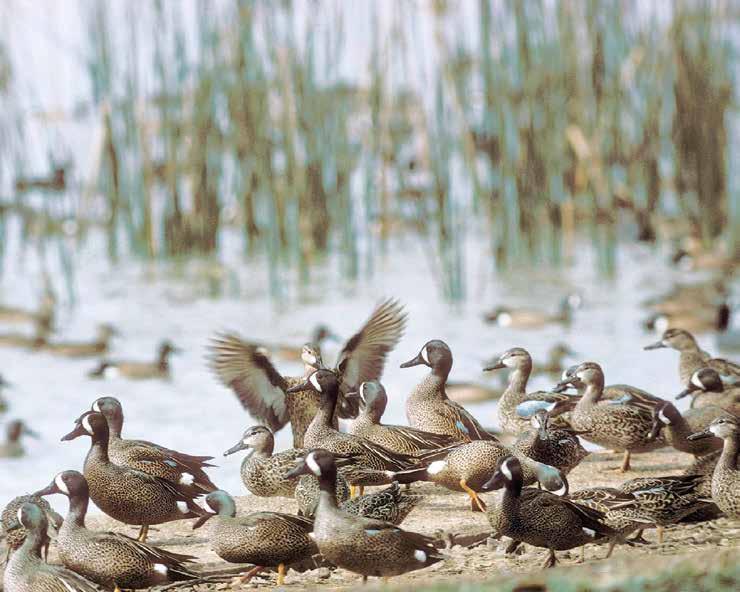
If conditions dry out, birds will likely concentrate in areas with access to irrigation or groundwater.
prompting cautious optimism among biologists and hunters alike.
“Teal largely breed in the Prairie Pothole Region—a vast landscape stretching across North Dakota, South Dakota, Saskatchewan, and Alberta. Another dry year has presented itself across much of the breed ing grounds. That’s going to greatly impact duck production and survival. Unfortu nately, the Canadian portion of this region is now in its sixth con secutive
year of significant drought. Parts of the Dakotas have also been drying for several years, though rainfall in May brought slight improvements to some key areas.
“Although final blue-winged teal breeding population estimates for 2025 are not yet available, preliminary data is concerning. We are coming off a two-decade-long low this past year. The population estimate this past May was 4.55 million birds—down 15% from the previous year’s estimate.
“This number is especially significant because it falls below the 4.7 million threshold needed to authorize a liberal 16-day early teal season. For the 2025-26 season, we will be restricted to a 9-day season for the first time since 2005.
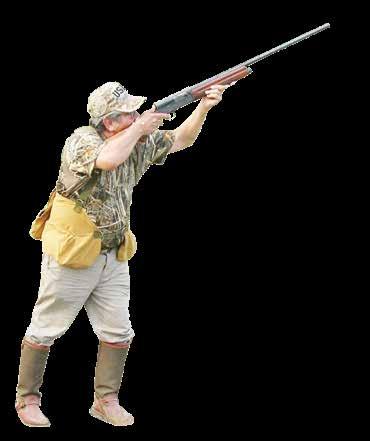
“Despite setbacks on the breeding grounds, Texas is currently experiencing betterthan-average conditions. Habitat conditions across much of Texas are currently above average to excellent. A lot can and will change prior to teal season and regular duck season, but hopefully we continue with the wet trends we are currently seeing.”
That said, challenges persist—especially in Central Texas, where drought continues to limit irrigation options. “Water restrictions for most of the rice prairies will eliminate access to canal water,” Kraai warned. “Landowners will have to rely on rainfall to fill wetlands and fallow rice fields. If conditions dry out, those with access to irrigation or groundwater will have a distinct advantage, as birds will likely concentrate in these areas.”
Even with a shorter season and breeding concerns, there
is room for optimism. “Despite the decade-long decline in the breeding population and a shortened season, I anticipate an average teal season this September across much of Texas due to the wet conditions locally,” Kraai said. Finally, Kraai gives a word of advice for migratory bird hunters: Ensure you’re HIP certified. “Please remind license clerks to ask the HIP questions to allow us to obtain an accurate sample of waterfowl hunters. This will ensure that harvest surveys can be sent to a representative subsample of hunters later in the year by the U.S. Fish and Wildlife Service,” he said.
So, there you have it—the best prospects for doves and ducks during the fall seasons. We hope these predictions will help hunters with their planning, and we wish all dove and duck hunters a happy and successful season.


By Horace Gore
Moon phases may not keep a hunter from getting a buck, but it surely may have some effect on when the hunter gets it. If a hunter is not “hunting” when the deer are up and moving, then the moon may determine success or failure.
After 60 years of chasing whitetails, and hunting a lot during a bright moon, I can assure you the moon does have a lot to do with deer hunting. After a bright moon, I have sat in a deer blind at dawn where deer were plentiful, and never see a deer of any kind until noon. Paying attention to the moon is rewarding to a deer hunter. By the way, the same is true after a night of deep snowfall.
Hunters have long argued about hunting when the moon is full. Well, here is my opinion about a bright moon. Deer are active during the night of a bright moon, and a hunter getting into a blind just before daylight is beginning the hunt at the end of the deer’s activity. Deer will tend to bed down after a bright moon night, and often do so just before dawn. So, the moon shines on the hunter getting in the blind and a buck that is bedding down for a few hours.
The usual scenario is the hunter sits in the blind all morning, while the deer is bedded down and returns to camp before the deer gets up for a few hours of eating and socializing. The hunter stays in camp while the deer are moving and goes back to the blind when the deer are bedded down. The deer get up at dark when the moon comes up again.
After full-moon nights, hunters who are in the blind from 10 to 4 will have the best chance of getting a deer. The thicker the
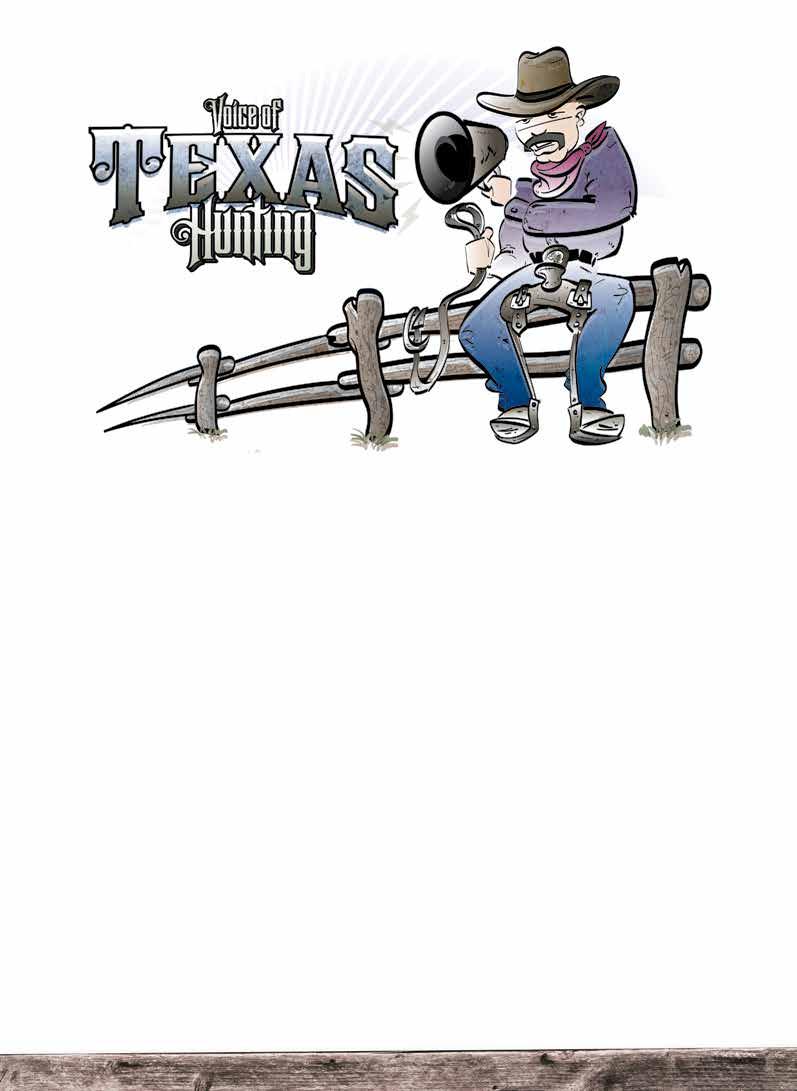
brush around the blind, the better. Because many bucks are taken during the last 15 minutes of light, a hunter should always stay in the blind until dark. Blinds in a wide open pasture with little brush should be hunted daylight till dark during a bright moon.
A serious hunter should take something to read and go to the blind before daylight and stay until dark. Reason? With any kind of brighter moon, you don’t know exactly when the deer will move. I have been in the blind before daylight on bright moonlit nights and not see a deer until early evening. This was the story of my second buck.
And, if the rut is on, it means nothing when the moon is bright. A buck may not be bedded down during the daylight hours, but he can easily be close to a doe that is bedded down, and the results are the same.
The best time to get a buck at dawn or before sundown is during darker phases of the moon. The moon phases for November 2025 will be best for hunting between the 11th and 28th. For December, the best is the 9th through 29th.
OK, so a bright moon may not keep you from getting a deer at the feeder, but remember the old Dr. Pepper jingle: “10, 2 and 4”—the time you need to be hunting.
Take this tip from an old hunter, while in a blind you can lose as much as an hour of hunting when you get out to relieve yourself. Go easy on the morning coffee and visit the pot before the hunt. Wise hunters stay in the blind.
Blakely and her dad with her first buck. She shot it with her airbow last season. It was her first hunting experience, and she got to share it with her dad.
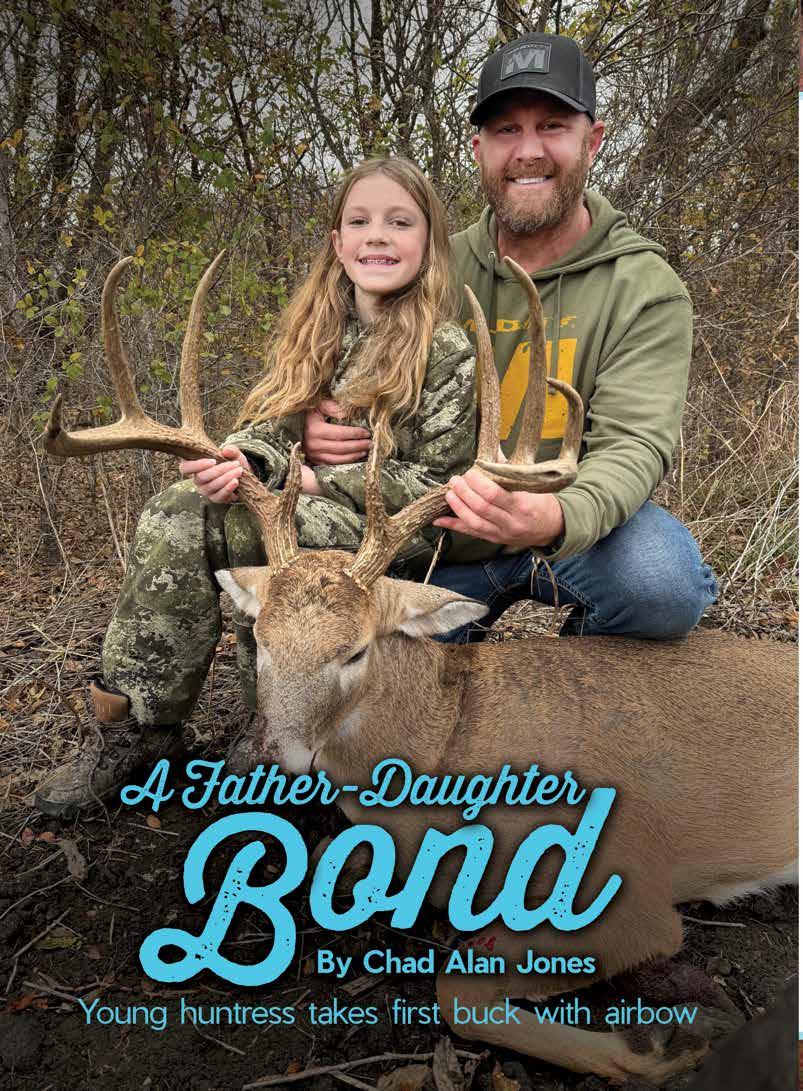
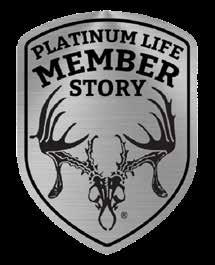
On a cool, crisp December morning in 2024 in Collin County, Texas, my 11-year-old daughter Blakely and I embarked on a journey that we will remember for a lifetime. Dec. 7 would mark Blakely’s first hunting experience, an unforgettable milestone, because she shot her very first deer. This day was not just about hunting; it was about a fatherdaughter bond, patience, and the thrill of the great outdoors.
We had been preparing for this moment for weeks. Blakely had expressed a keen interest in hunting after seeing her older sister Chloe take up hunting a few years ago. I found it essential to ensure she understood the responsibilities and ethics involved in hunting. So, we spent time discussing safety protocols, the importance of conservation, and the significance of wildlife management. I wanted her to approach this experience with respect and a sense of purpose, but also make it enjoyable.
The night before, we meticulously packed our gear, making sure everything was ready. We chose a Benjamin airbow for her weapon because she needs a little more time to become proficient with a compound bow. The excitement was palpable as she helped load the gear into the truck. We spoke about what to expect, the sounds of the woods, and the rush of adrenaline that comes with spotting a deer. Her eyes sparkled with anticipation, a blend of excitement and nervousness that only intensified as morning approached.
On the morning of Dec. 7, we awoke at 4 a.m. The chill in the air hinted at winter settling in. We dressed warmly and headed to our hunting spot, a clearing surrounded by towering oaks and thick underbrush. As we settled into our pop-up blind, I could see her eagerness. I reminded her to be patient and to observe her surroundings carefully. The woods were alive with the rustling of leaves, and the distant calls of birds awakening.
As the sun began to cast a golden hue over the landscape, we sat quietly, watching and waiting. Time seemed to stretch as we immersed ourselves in nature’s beauty. I pointed out various wildlife, from squirrels darting through the trees to birds calling in the distance. Each moment was an opportunity to learn, and I cherished the time spent together, knowing these memories would shape her understanding of the outdoors.
Suddenly, a huge nine-point buck stepped in front of our blind at 10 yards. It was the specific buck we were after. My heart raced as I slowly reached over and touched Blakely’s hand, signaling for her to stay still.
Once the buck turned and started walking our way, I got Blakely in position to take a shot and reminded her to stay calm and focus on her breathing. This was her moment, and I wanted her to seize it. She took a deep breath, adjusted her grip on the airbow, and steadied her aim.
The buck stopped at 30 yards slightly quartering away, its antlers catching the morning light. I watched as she lined up her shot, her concentration unwavering. Adrenaline coursed through our veins.
I quietly encouraged her to take her time, and instructed her to aim right behind the shoulder. With a final deep breath, she squeezed the trigger. The sound of the shot echoed through the woods, and the world seemed to pause for a moment.
The arrow hit its mark, and a wave of emotions washed over us as the buck disappeared into the thick brush. My daughter turned to me and said, “Dad; I was shaking so bad.” I explained to her the adrenaline rush she experienced is called “buck fever” and only hunters can relate. Her face lit up with pure happiness.
It was a moment of triumph, not just for her, but for both of us. We shared a quick embrace, overwhelmed by the achievement of her first successful hunt. As a father, there isn’t a more proud moment then to see your children be successful.
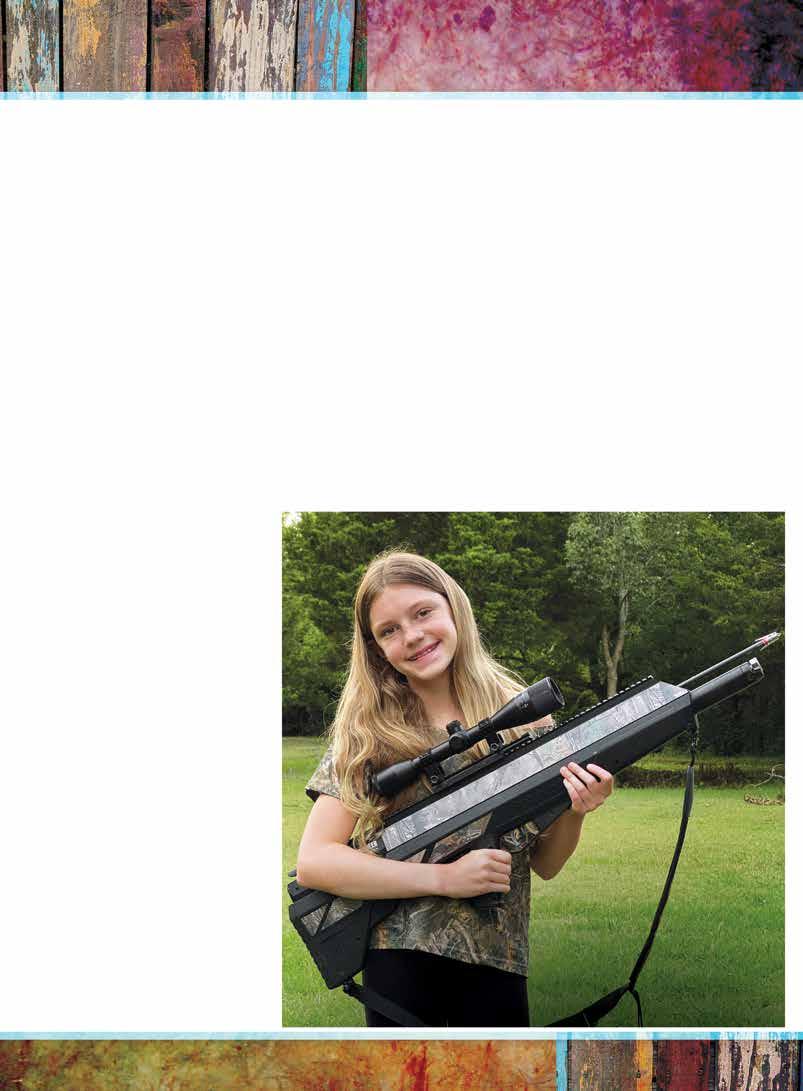
Blakely with her Benjamin airbow. She and her dad chose this weapon because she needs a little more time to become proficient with a compound bow.
We waited about an hour to go look for the arrow and blood trail. We found the arrow about 15 yards from where the deer was shot. There was not much penetration, so I instantly knew she probably hit the edge of the shoulder blade. However, as we took up the blood trail, the deer bled heavily.
I let Blakely lead the way in search of the blood trail, trying to educate her each step of the way. We tracked to about 150 yards and I decided to back away and give the deer more time. I could see the mix of emotions on her face and her not understanding why we didn’t keep going. I explained to her we didn’t want to push the deer, because if he was still alive, he could run away and possibly onto property we couldn’t get permission to enter to retrieve the deer.
We decided to call my buddy Ricky Loftis with RL Deer Tracking to help recover the deer, because I didn’t want my daughter to not find her first buck and give her a negative experience. Ricky arrived within a few hours and made a quick recovery of the buck about another 150 yards from where we stopped and backed away.
The look on Blakely’s face when we walked up to the deer, and she put her hands on the antlers was absolutely priceless. I told her grown men and women hunt their entire lives and never even see a deer of that caliber, much less get the opportunity to kill one. The deer netted 144 5⁄8
After we finished tagging the buck, we took pictures to commemorate the moment. Blakely beamed with pride standing next to her first buck. This experience had not only marked her first hunt, but had also deepened our bond. We had shared something special, a rite of passage, and the passing down of a hunting tradition that runs deep in our family.
On the drive home, we talked about the entire experience. She shared her thoughts about the shot, her feelings during the wait, and how she can’t wait to go hunting again. I listened proudly as she explained what that experience meant to her. We discussed the lessons learned about patience, respect for nature, and the joy of being outdoors. I could see this experience had sparked a passion in her.
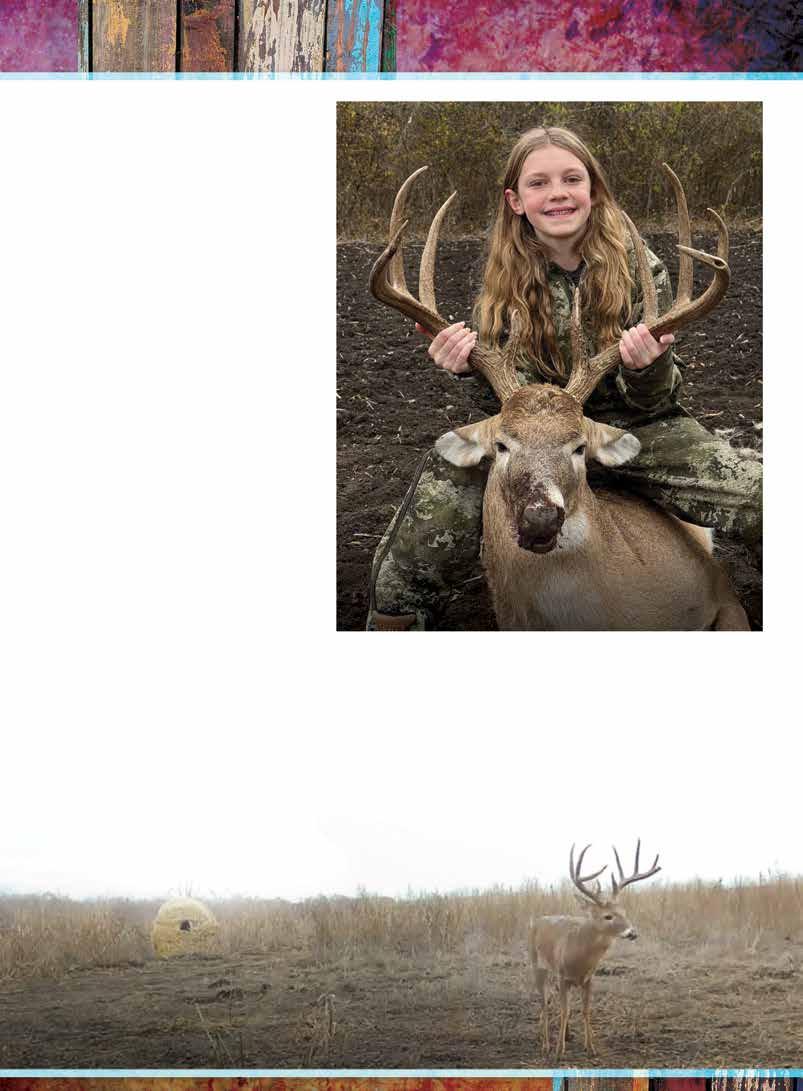
That day was more than just about hunting; it was about connecting with nature, and creating lasting memories. As we returned home, I knew this was just the beginning of her journey into the world of hunting and the great outdoors. That experience will always hold a special place in her heart, a day when she not only shot her first buck but also opened her eyes to what it actually means to call yourself a hunter. In the years to come, I hope to continue sharing these experiences with both daughters, watching their skills develop, and grow a better appreciation for nature.

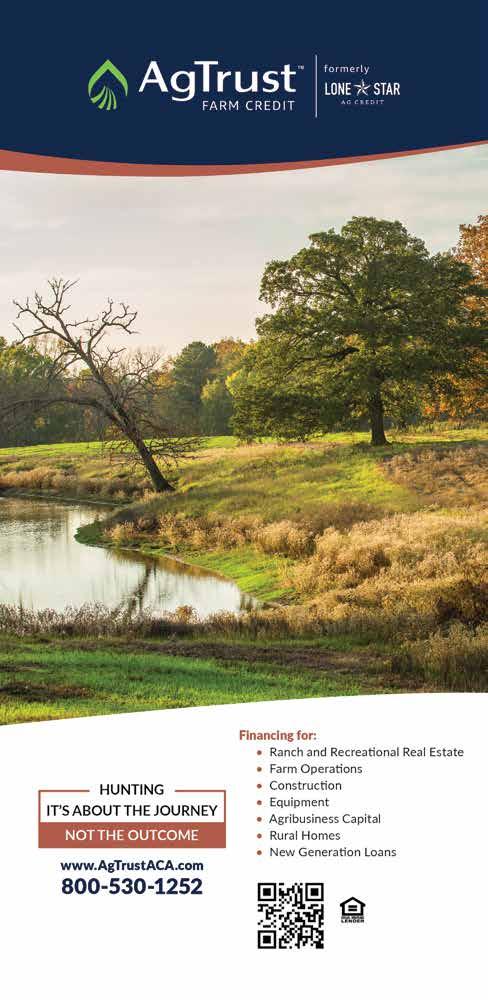
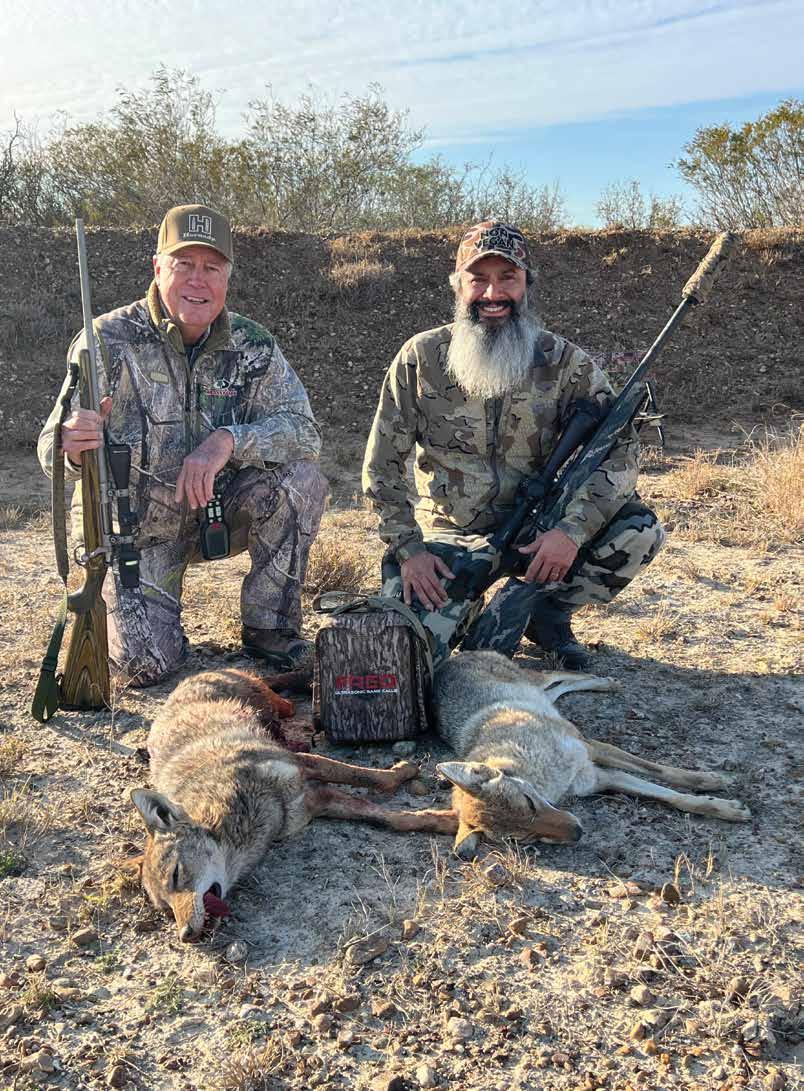
BY GARY ROBERSON
As a youngster, one of my favorite TV shows was “The Rifleman” starring Chuck Connors and Johnny Crawford. Connors played Lucas McCain, while Crawford, who was about my age at the time, played his son, Mark McCain. McCain was a rancher and single father in the New Mexico Territory in the 1880s. The show was filmed in black and white and began airing on ABC in September 1958 until April of 1963.
The show opened with Connors, a 6-foot-5 ex-professional athlete, firing and working the lever on his Winchester Model 1892 rifle, firing 12 rounds in less than 6 seconds. This is rather amazing since the rifle held only 10 cartridges, I guess this proves that anything is possible in Hollywood.
According to my old friend Horace Gore, Connors used the same rifle used by John Wayne in the 1939 movie, “Stagecoach,” perhaps making it the most famous of all Hollywood firearms. For the rifle to be fired this rapidly, a screw inserted into the trigger guard would trip the trigger when the lever was slammed home.
It’s no secret I’m a huge fan of lever action rifles and enjoy the challenge of shooting them with iron sights when calling predators. But when I’m serious about hunting coyotes, I want the ability to shoot accurately to 200 yards. I have the confidence to kill a coyote with my .223 Remington or .22-250 bolt-action rifles at these distances, but for long shots, I leave the lever guns and iron sights at home.
Earlier this spring, Steve and I drove down to Tilden to hunt and shoot an episode of “Carnivore” with Levi DeLeon, manager of Escondido Hunting and Paloma Cattle Company. I first hunted on these ranches in 1992 with Ron Coburn, CEO of Savage Arms, and Ken Tucker, host of Sportsman’s Showcase TV show. In 1995, Winchester Ammunition asked if I would help arrange a predator hunt for several outdoor writers. Leo Quintanilla was kind enough to host this event at Paloma Cattle Company for many years.
The first call of the morning found us setting the Freq game call in the middle of a 150-yard-wide rectangular shaped strip near a stock tank. The breeze came from the northwest and basically in our faces. Four minutes into the call, a mature, extremely large coyote broke from the cover directly in front of me at about 75 yards. I lowered the volume on the call and switched sounds to the “Money Bunny,” a recording of a baby cottontail.
The changing of the sound re-excited the big male, and he cut the distance to the call, stopping about 10 steps short. Levi was on him and made a perfect shot. Examination of the coyote’s teeth revealed this coyote was extremely old. There is no doubt that this coyote had heard calls on many occasions but had made a fatal mistake that morning.
I picked the old dog up by his hind legs and felt shocked by how heavy he was. We didn’t have any scales to weigh the coyote, but I guessed 37-38 pounds. While I kill coyotes
This is the coyote that responded on the first call of the hunt. You age a coyote as you would a whitetail buck, and it’s obvious that this one is “over the hill.”
much heavier in the Texas Panhandle and New Mexico, this is one of the largest coyotes I have seen in South Texas.
We made a couple more calls that morning without any success and without finding any sign, so we decided to take a lunch break. We drove back into Tilden to eat at Max’s Café and to visit with some of the locals. Scott Porter, who runs the bird hunting on the ranch, told us he had seen a coyote behind his house on most mornings. We decided to target the coyote that afternoon.
We set up behind Scott’s house a couple hundred yards in an old field with a few switch mesquites in it. We set the Freq to the west of us and aimed the speaker towards the dense brush to the north. The northerly breeze would make it almost impossible for an approaching coyote to get wind of us or the caller.
After just one series of “Killer Cotton,” a recording of a mature distressed cottontail, a coyote came from the brush and directly to the call. When I feared him getting too close, I howled, stopping the coyote in his tracks. Although a little bush stood in the way, Levi made a clean kill.
The next stand did not yield a coyote, but it did offer a lot of entertainment. Setting up in a large dry tank bed, I set the caller near the middle of the opening. I had noticed a roadrunner nearby when I turned on the cottontail distress recording.
As soon as the caller started squawking, the roadrunner headed straight to the call. Circling the caller, the bird did everything he could to get that rabbit out of the camo case. Two other roadrunners showed up coming from different directions, but none were as aggressive as the first.
The next spot I chose was a big gravel pit adjacent to a busy ranch road. It was about five o’clock in the evening and the
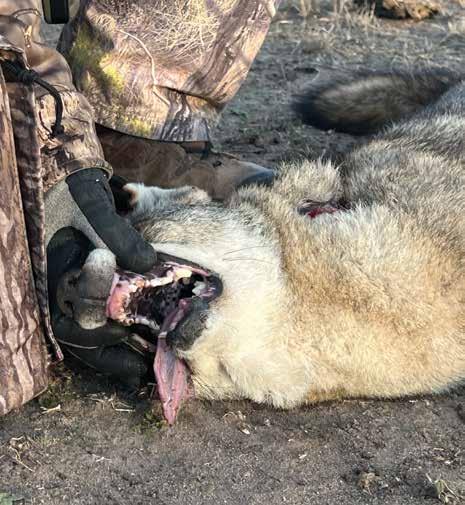
oilfield crews left the ranch. Coyotes, like most other wild critters, become accustomed to traffic, and because I liked the visibility of this location, decided to make the call. The breeze had switched around to the southeast, so we approached the pit from the north and set along a berm with the sun to our backs.
I set the caller out in the middle of the opening, knowing if any critter came into the pit, it would offer an easy shot. About two minutes into the stand, a pair of coyotes came up on a pile of gravel to the south side of the opening. They stood there a few seconds, the male in front and the female right behind him, staring in the direction of the caller.
Immediately, I started planning how best to handle the situation so I could increase our odds of killing both coyotes. I decided to lure the male into the middle of the opening, then kill the female. At the report of my rifle, I believed the male would move away from me towards the middle of the opening, offering a wideopen running shot. I switched to the baby cottontail sound, and the male came off the gravel pile and into the opening of the pit as planned.
I let the male trot towards the caller until he was about 30 yards from the female before I decided to take her out. She was facing me, so I let the crosshairs settle on her chest and squeezed the trigger. As soon as I saw her melt, I slammed another round into the chamber, looking to find the male that I thought would be breaking across the wide-open pit.
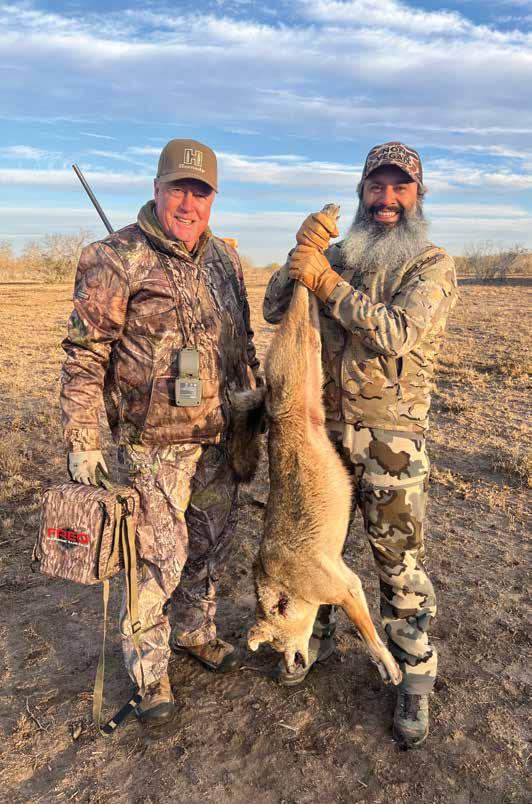
To my surprise, instead of running away from my shot, the coyote turned left and headed for the nearest cover. This path would carry him away from Levi and in front of me. As quickly as I could, I found the fleeing coyote in my scope and did my best to get the crosshairs on his shoulder and pulled the trigger. At about 35 steps, I hit the coyote in the rib cage as he staggered and ran over the berm and out of sight.
Recovery was easy because he bled pretty good and expired just over the pile of gravel in a ditch. After retrieving both coyotes, Levi and I replayed the event and decided I had gotten extremely lucky. Killing two coyotes—one standing and another running—with a bolt action rifle in a matter of seconds doesn’t happen every day. Such shooting would even test the rapidfiring Lucas McCain!
As usual, Steve had the entire “shooting” recorded on video. A few days ago, I asked Steve to play the video of the hunt so we could accurately measure the time between the first shot that got the female and the second shot that got the male. We played the video over a couple of times using a stopwatch and found that both coyotes were folded in just under four seconds. While no one will ever accuse me of being “The Rifleman,” sometimes you just have to get lucky.
Both Levi DeLeon and the author are 6 feet tall and provide a reference for how big this old South Texas coyote is.
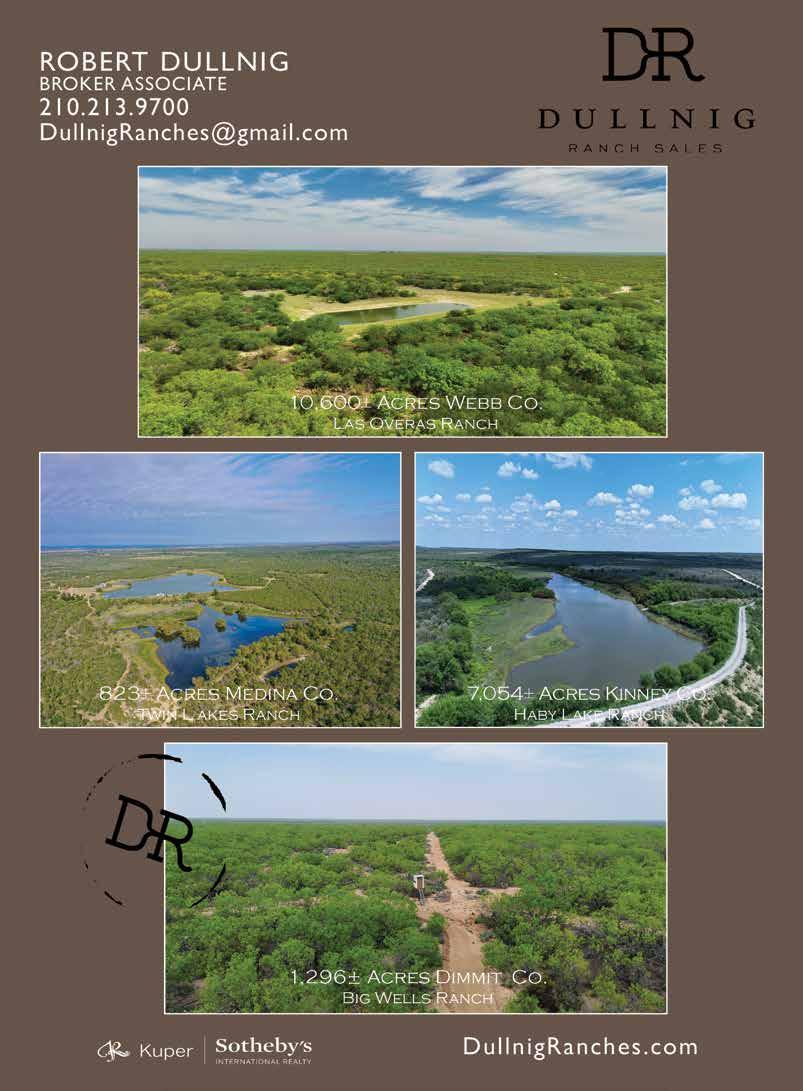
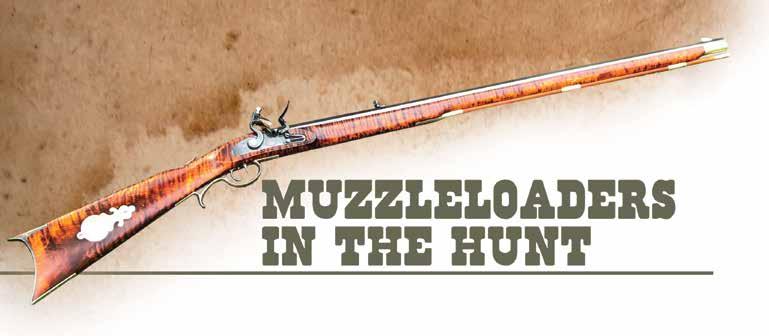
by Eric Stanosheck
Where do I start? What gun do I buy? How do I get my gun to pattern? These are just a few of the questions I’m regularly asked by people who have an interest in learning to hunt and shoot with muzzleloaders. I’ll give you a bit of direction for different scenarios, but there are so many great options for equipment and components it’s difficult to cover them all.
It begins with the gun
Are you looking for a fun black powder experience to get started shooting muzzleloaders? I cut my teeth on an old .50 caliber Hawken. This is a great gun that I would recommend as a starter if you’re just interested in target shooting or eventually using this gun for shots from a blind or other close shots of 60 to 100 yards.
A Hawken rifle gives you that traditional feel with either lead round balls or lead conicals. Always use loose powder with a Hawken and full-bore bullets. Hawken rifles are not compatible with sabots and pellets. A Hawken rifle is relatively inexpensive and simple to operate. As with any muzzleloader, start out with a smaller powder charge and work your way up to see where your gun groups the best. For example, start with 60-70 grains of powder and increase by 10 grains until you find what patterns best with your patched round ball or conical and enjoy the process and punching paper. You’ll find every muzzleloader
has a sweet spot for powder charge and bullet weight.
By far, the most popular gun used for hunting these days is the modern inline muzzleloader and most have scopes mounted on them. The reason inline muzzleloaders are so popular for hunting is they’re easy to shoot, easier to clean, and most guns will shoot any of today’s powders and projectiles.
I’ll walk through my process of finding the sweet spot in an inline muzzleloader because I’ve dialed in a handful of them over the years and carry one on most of my hunts. A number of great guns are on the market, and I would recommend a .50 caliber, which is also the most common. CVA, Thompson Center, Traditions, and Remington all have inline rifles that are easy to use. I’ve carried various
“In today’s fastpaced world, it’s therapeutic to do something that forces you to slow down, and shooting a muzzleloader will do just that.”
models of Thompson Center on most of my hunts for the past 20 years. However, I have recently set up a couple of CVA Accuras for some guys, and they’re a very solid choice.
No matter what type of muzzleloader you choose to start with, I hope you fall into the romance of the smoke and embrace the one-shot challenge.
I’m going to specifically focus on modern inline rifles since they are the single most popular new muzzleloader purchase in the USA today. Once you select your rifle, I recommend you purchase a couple types of bullets and start with a readily available powder such as Triple7 pellets or Blackhorn 209, a loose powder.
You may ask why you should buy different powders and bullets, and my answer comes from decades of shooting many different guns and component combinations. Every gun has a “sweet spot,” a combination of a certain powder charge and bullet weight/type that shoots most accurately. I have seen evidence to support the choices I recommend. After all, accuracy is what you’re looking for, whether target shooting or hunting.
A good cleaning routine is important. A dirty rifle is probably the No. 1 reason a muzzleloader doesn’t perform well. Muzzleloaders aren’t like high power rifles that you can shoot all day without cleaning.
You will need cotton cleaning patches,
According to the author, every muzzleloader has a “sweet spot,” a combination of a certain powder charge and bullet weight/type that shoots most accurately.

a black powder specific liquid cleaner, a copper brush fit to your caliber and some thread grease for you breech plug. Additionally, I highly recommend a .50 caliber bore snake because it speeds up the barrel cleaning process.
While you’re sighting in on the bench, use a spit patch—lick a cotton patch to add just a bit of moisture—to swab the barrel three or four times after each shot, no disassembly necessary. If you’re using one of the two powders I mentioned, this cleaning method is all you need for a sighting-in session of five to 10 shots. When you’re shooting several shots in a session, you will want to pull and clean your breach plug and copper brush or bore snake your barrel every eight to 10 shots. Increased pressure in a dirty barrel gives you false impact points and compromises accuracy. Completely disas -
semble and clean your muzzleloader after every shooting session or after each hunt, provided you shoot during the hunt.
Bullets are important, and weight is more important than brand. We will stick with the assumption you’re shooting saboted bullets. Get a box of 250-grain bullets—T/C Shockwave or Hornady—and another box of heavier bullets, such as 300 grain. Remember, we’re looking for that sweet spot in accuracy, which I’ve found in most inline rifles will include one of these two bullet weights.
Consider these powder charges. If you’re shooting Triple7 pellets, they are 50 grains each, so your two options are 100 or 150 total grains. With the Blackhorn 209, start testing with a loose
powder measure of 90 grains and increase in 10 grain increments with each bullet to find your tightest pattern. Every gun, even the same brand and style, can have a completely different sweet spot for accuracy. Make sure to read your manufacturers recommendations for safety and never exceed the maximum powder charge recommended for your muzzleloader.
Now, go to the shooting bench for practice, and be patient. Muzzleloader hunting has a way of slowing things down and allowing you to fully embrace the learning process as you increase your challenges of the one-shot hunt. In today’s fast-paced world, it’s therapeutic to do something that forces you to slow down, and shooting a muzzleloader will do just that.

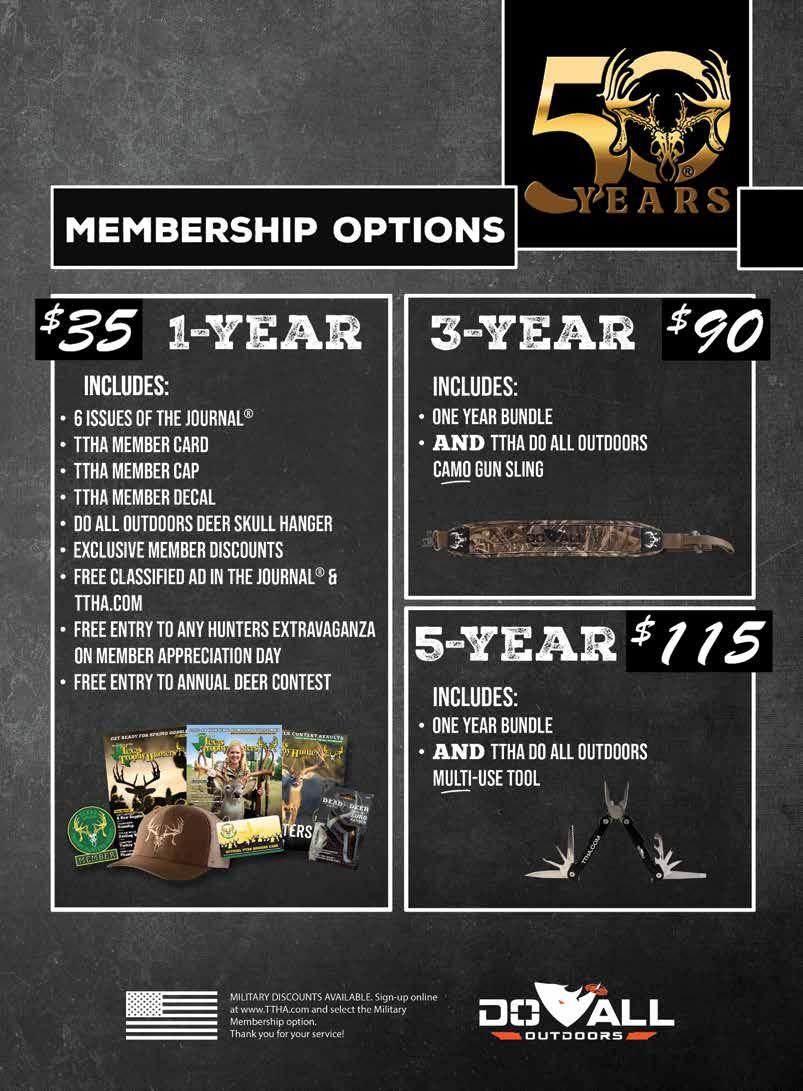

Outback Wildlife Feeders introduces their Herd Management Feeder Systems. Two model types, the Protein Feeder Access Control System (PFACS) and Cottonseed Feeder Access Control System (CFACS), use timed access control feed features to create more opportunities for the hunter. Using the PFACS and CFACS, you control specific, consistent windows of time each day the protein and cottonseed feed attractants are accessible, converting mature nocturnal bucks to daylight feeding. The “daylight access only” feature also helps eliminate feed loss to nocturnal varmints, reducing attractiveness to feral hogs, thus preventing feed contamination.
(See page 12.)

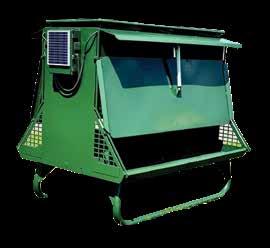
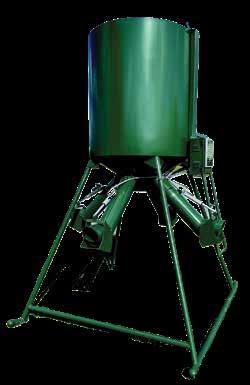
B&B Taxidermy believe a trophy room should be more than a collection—it should tell your story. They bring over 40 years of experience and have created many one-of-a-kind rooms across the Southeastern United States. They design each space to reflect the client’s passion, personality, and legacy. Whether it’s a cozy lodge, a professional office space, or a sprawling ranch, they bring your vision to life with expert craftsmanship and attention to detail.
(See page 37.)
DA Targets’ patented self-healing, color-changing targets are built for serious shooters who demand performance. Made from advanced polymer and 100% made in the USA, these targets temporarily change color on impact, giving shooters immediate visual feedback—no tape, paint, or replacements needed. Designed to withstand thousands of rounds, they dramatically reduce downtime and increase training efficiency. Whether you’re at the range or in the field, the targets deliver durability, safety, and visibility in all weather conditions.
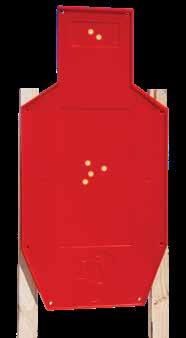
The Antler Shak 30-06 blind offers visibility, concealment, and durability throughout the hunting season. It includes six full-view mesh panels that allow for 180-degree panoramic views while hunters remain unseen. Each window features an adjustable shooting rest and a blacked-out finish to prevent silhouettes from being exposed. Inside, the dark interior helps further conceal the hunter from wary game. There’s plenty of room for gear and a hunting partner, and the water-resistant fabric and powder-coated steel frame keep things quiet, dry, and long-lasting. Integrated brush loops allow hunters to match the blind to any terrain for ultimate concealment.
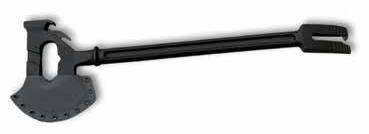
The BV-TAC X is 100% made in the USA from high-grade S7 tool steel, and undergoes a specialized heat-treatment process to achieve maximum hardness and toughness, for resistance to wear, impact, and deformation. A Cerakote finish provides long-lasting protection against rust, heat and abrasion.
Measuring just over 24 inches in length, this multitool combines five different tools—a hydrant wrench, spanner wrench, hammer, ax blade and pry bar—into one streamlined powerful design that reduces bulk without sacrificing function. An extra notable feature is its innovative linking capability, which allows users to connect two or more tools together to enhance leverage and increase prying strength.
flambeauoutdoors.com

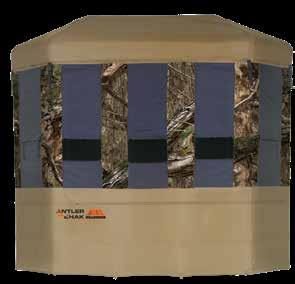
Flambeau’s Formula Bow Case provides protection and reliability. The Adjustable Bow Security (A.B.S.) system is a foamless chassis assembly that free floats critical precision bow components. The contact-free bow storage system ensures bow components stay dialed in and at the ready. The shock-absorbing A.B.S. chassis format features integral tie-down spines that anchor bow risers using patented Nite Ize Mega Gear Ties to cement bows in place for unmatched protection perfection.
The mid-weight system (18.25 lbs. unloaded) offers protection via a heavy-duty, thick-walled case, without sacrificing ease of use and mobility. The case features an automatic pressure release valve and weatherproof gasket combination that produces an anti-crush and impactdefusing air chamber that negates the need for heavier exterior walls.
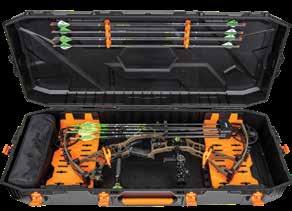


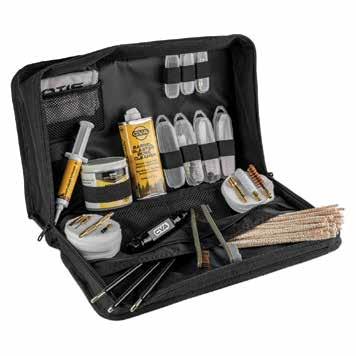
Birchwood Casey’s 3/8" AR500 Centerfire Silhouette Steel Target Kit with one-hole targets feature a highly portable design with smooth, burr-free gongs and silhouette-shaped targets, and bright white powder-coated finishes for improved visibility in any conditions. They’re available in the shape of a turkey, Texas, alien, boar’s head, rabbit, raccoon, crow, gopher, armadillo, skull, yeti, milk jug and howling coyote. Three-hole targets are available in the shape of deer, elk, bison, bear, ram, boar, bobcat, coyote.
Their Gunslinger Silhouette and Trophy Room Dirty Bird tagboard targets ensure every shot is easy to spot, thanks to intense splatter that occurs on impact and delivers intense contrast for improved visibility downrange. Shooters can quickly put themselves in a safe showdown situation with either 12"x18" target option.
CVA announces their new Elite Muzzleloader Range & Cleaning Kit. CVA teamed up to have it proudly, American made, by Otis Technology. It’s designed for multiple calibers including .40, .45, and .50 caliber. Some of the many tools and cleaning products you’ll find inside are a lifetime range rod, multiple bronze bore brushes, CVA Barrel Blaster Bore Cleaner, jags, brushes, anti-seize grease, patches, and so much more. It’s the all-in-one solution for keeping your muzzleloader in prime condition.

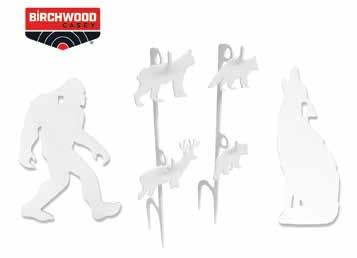




Escort Shotguns has three youth shotguns available: the FieldHunter Youth, PS Youth, and the all-new WS Youth for first-time hunters. All these exceptional firearms fill specific niche needs and outdoor uses, from bird hunting to target practice.
Receivers are made from an aircraft alloy receiver finished in a black anodized finish or camouflage patterns (PS Youth only), reducing weight and providing complete dependability with exceptional corrosion resistance. Affixed is a 22-inch oxidation-resistant chrome-plated steel barrel threaded for Escort’s multi-choke system. Choke options include F, IM, M, IC, and CYL, widening the practical use and shot patterns.

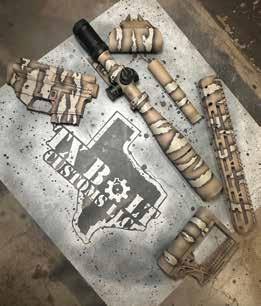
TX Bolt Customs uses Cerakote, the industry-leading ceramic-based coating that offers unmatched protection against rust, abrasion, and harsh elements. Whether you’re running custom bolt-action builds or bringing new life to a trusted favorite, Cerakote finishes add rugged durability and headturning style. They take it a step further with precision laser engraving, giving hunters the chance to personalize their gear with custom designs, names, or logos that speak to who they are.
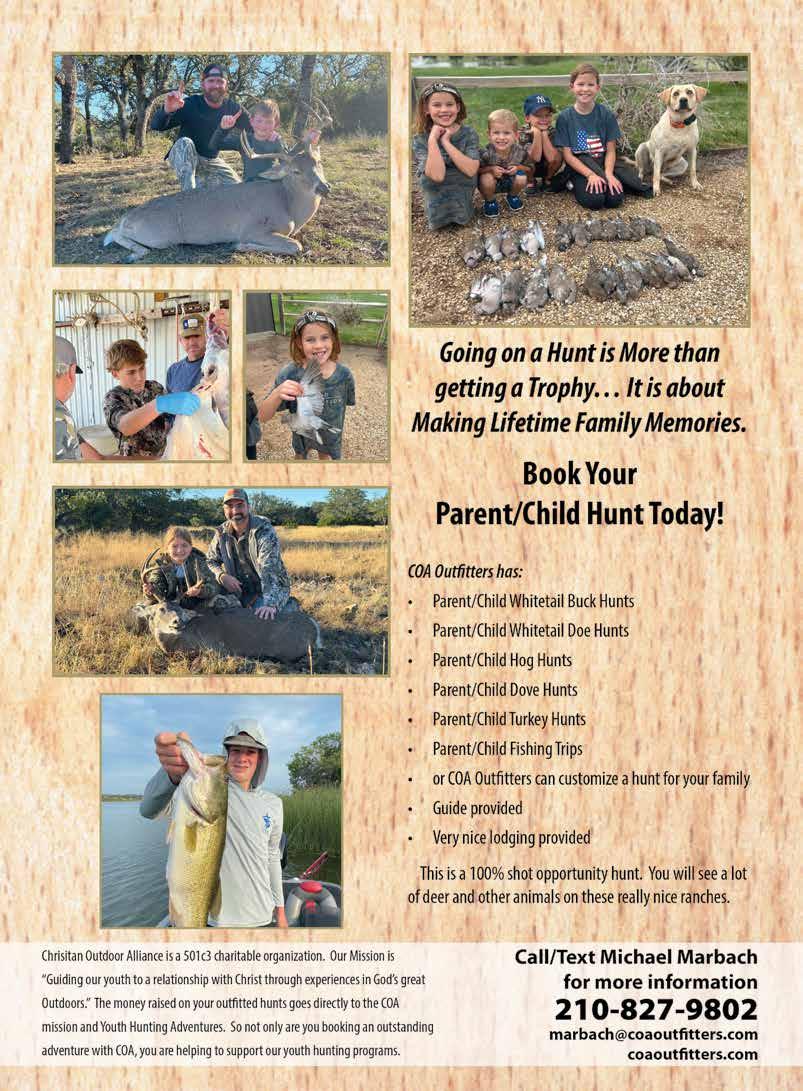
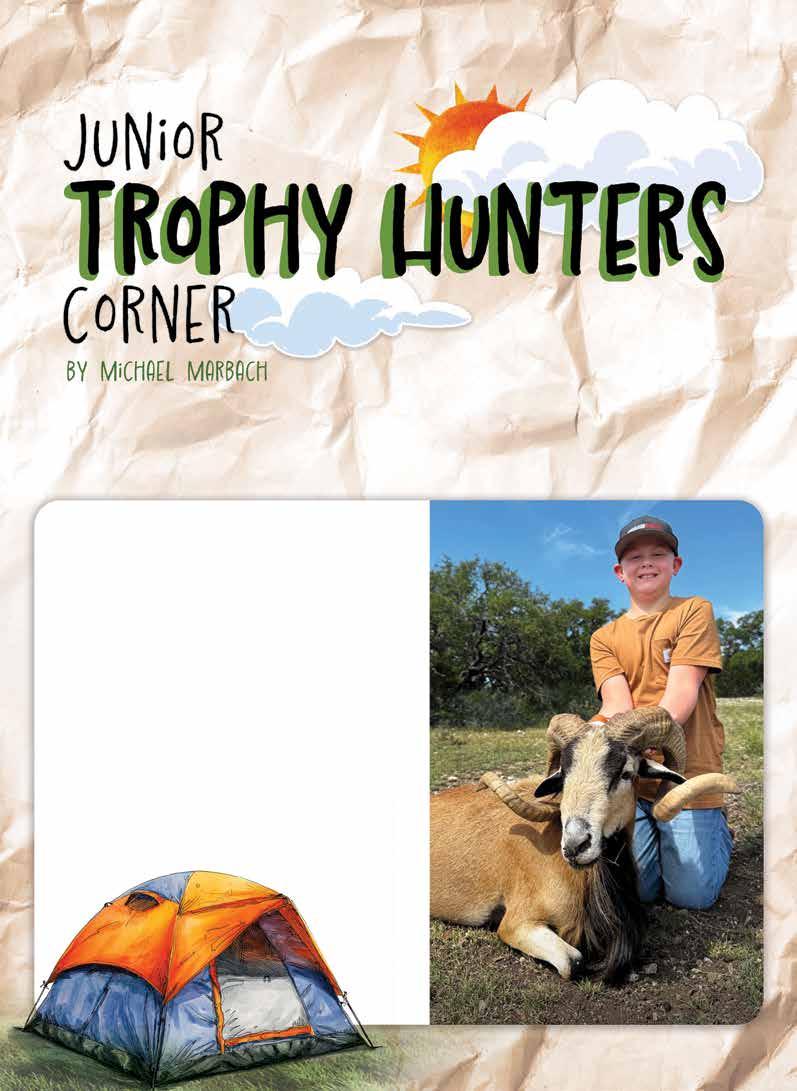
As a kid growing up in San Antonio, I had the Hill Country in my front yard and South Texas in my backyard. My grandfather had some property west of New Braunfels, and my dad had a deer lease near Big Wells. To say I was a blessed kid is 100% accurate. The only things that got in my way of wetting a hook, plinking at a target, or hunting small game was school and sports.
Mom and Dad would often ask me what I wanted to be when I grew up, and my two answers were: a professional baseball player or a professional hunter. As my baseball days ended at Tarleton State University, my hunting career took off, and here I am all those years later running summer hunting and fishing camps for kids, as well as outfitted hunts. I love my time with kids as I teach them hunter education, animal identification, shooting skills, and the ins and outs of wildlife management on a very basic level.
Little did I know, a lot of people just like me wanted to live life outdoors. I highly recommend to kids to find those people in your life who are like minded and love spending time outdoors. You will find a lot in common, and build those lifelong relation-
ships and learning experiences. To this day, some of my closest friends are the ones I hunt or fish with throughout a year’s time.
I look very forward to spending time with all my outdoors buddies each year. I have some plans for a fishing trip, dove hunt, and a whitetail hunt this late summer and fall. The anticipation of hunting with old friends and seeing new ground has always been a highlight each coming year. It’s because of these times, I like sharing my outdoor experiences and blessings with as many people as possible.
Each summer we host over 100 kids at our summer camps, and many more on our youth hunts and fishing trips. We have built relationships with people from Laredo to Amarillo who have let us share God’s great outdoors over the past 25 years. We want to continue building these relationships. We like it when participants meet each other and form friendships that go beyond our camps and outdoor events.
It’s fun to hear their stories and watch them find those commonalities in the hunting and fishing world. We share our past hunting and fishing stories, recipes, tackle tips, gun options, bow setups, and whatever else comes up. One of my favorite conversations is learning about different ways to cook wild game. Believe it or not, a lot of kids love to cook, and I have learned a ton about what kids like, and have used it for my youth camps and weekend hunts.
One of my favorite tips I learned came from a former summer camper. We took some ground venison and added it to our cheese pizza. We made it into a delicious venison pizza. During our hunts and youth events, we make all kinds of wild game meals such as spaghetti, tacos, chili, burgers, steaks, stew, and more.
I know I have learned a lot, but the kids have learned a ton about guns and the different calibers. The rifles we hunt with these days use suppressors, have little to zero recoil, have lots of knock down power, and are extremely accurate. We love to use .308 and 7mm-08 on our hunts, as they are both suppressed, and the risk of hurting a child is minimal. What I like about them is they put the animals down and we don’t have to do lots of blood trailing for long distances.
The kids communicate all about the guns and the performance on the animals they’re blessed to take. The No. 1 thing I have heard from kids through the years is they are scared to shoot a gun that will kick them. To
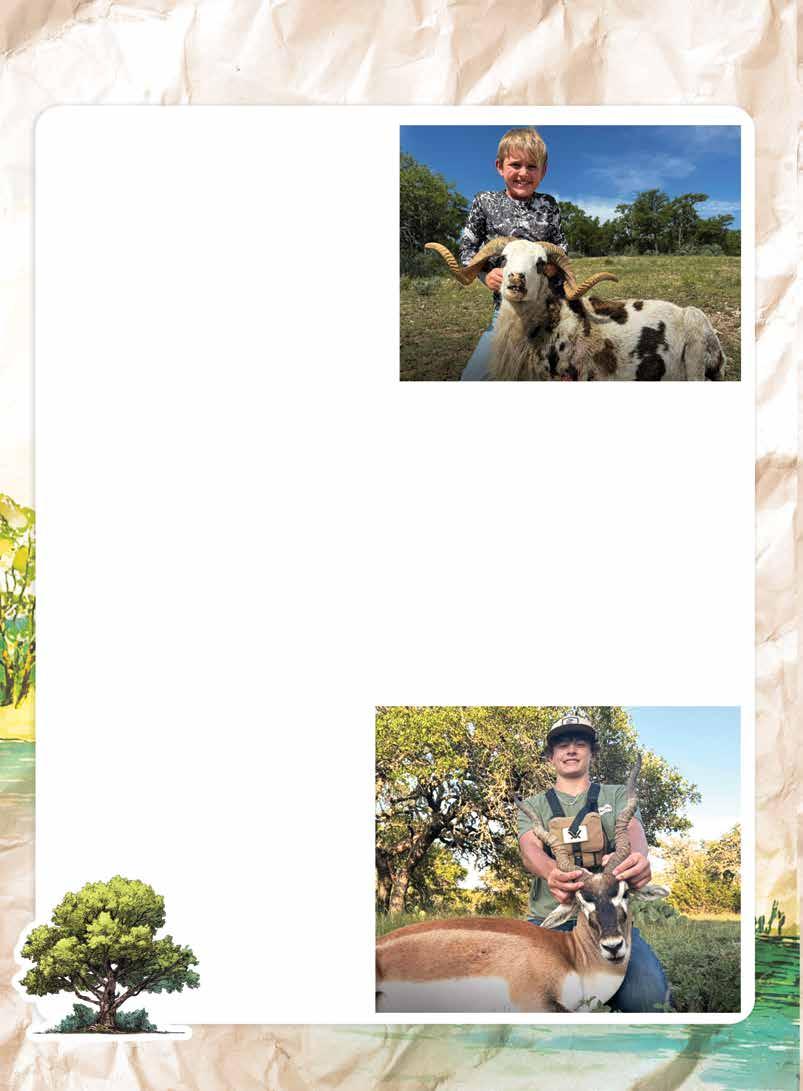
see their little faces after they pull the trigger on these rifles, a big smile shows up quickly. The relief of not being hurt by a gun is a huge deal.
Another topic that circles the campfire is fishing and all the different tackle a person might use to trick a big bass. Of course, fisherman have been well known liars for years and I say that with a big smile. You always seem to wonder where the truth starts, and the con job starts. Fisherman love to keep their cards close to their chest and sharing the most private details is hard to pry from a seasoned angler.
However, it always amazes me when a kid can break down even the crustiest old fisherman to gets some tidbits of knowledge from them. I love watching kids fish. But I really enjoy watching them catch. It does my heart good to see success on a child’s face.
A lot of kids these days have lost interest in archery. I love archery and I love getting kids involved in shoot-

ing a bow. Early on in my summer camp program it seemed like just about every kid was shooting a bow. As kids come to camps in the 2020s, they don’t have a bow, and really don’t show much interest learning about it.
I have switched the narrative on the program and started getting kids on a recurve bow and shooting small targets at close range. This level of success gets them to asking questions and looking at taking the next steps in the archery world. But I believe the kids feel a bit intimidated about it, so I encourage them to visit a good bow tech at a bow shop. Not only will a good tech put you onto a great bow, they love to teach you as well.
Often times, bow techs can have you shooting tight groups before you even leave their shop. You can also learn about tournament shooting and promotions they might have at their stores. Here again, it leads to meeting some cool people and building relationships.
Over my 50-plus years on God’s beautiful outdoor world, I have learned a lot, met a bunch of great people, and have seen His hand on hundreds if not thousands of occasions. The relationships and success you’ll find in the outdoors is extremely rewarding, and it’s something you’ll remember for the rest of your life.
Michael Marbach is the CEO of the Christian Outdoor Alliance, mycoa.org; 210827-9802. COA’s mission is to guide youth and outdoorsmen to a relationship with Jesus Christ through experience in God’s great outdoors.
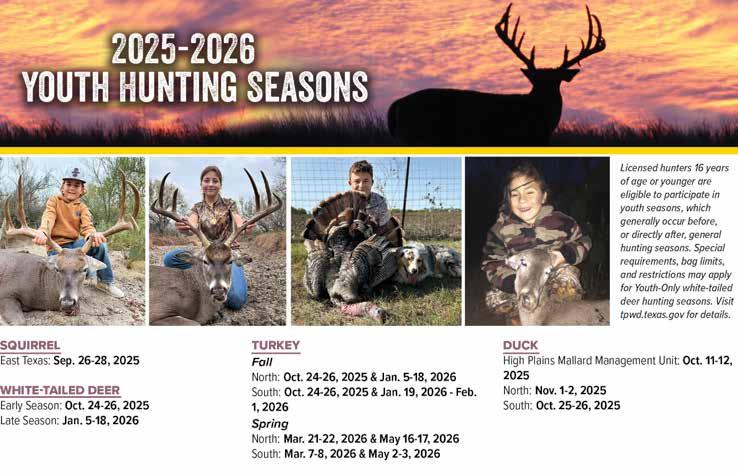
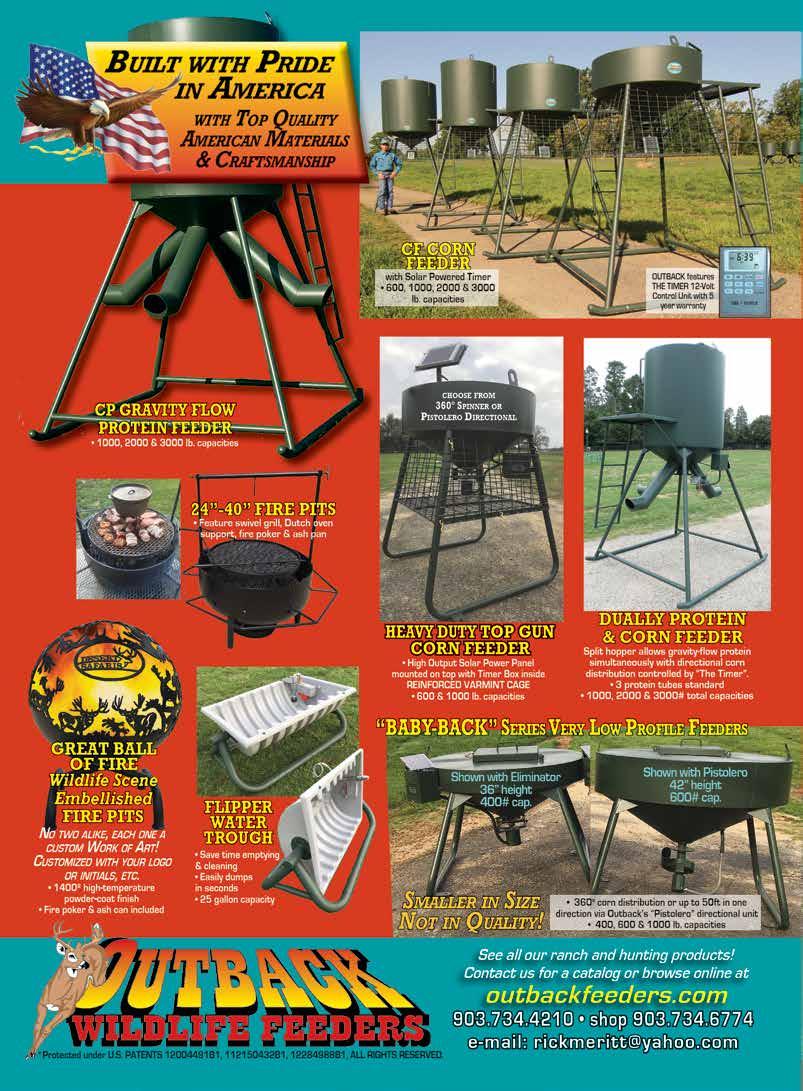
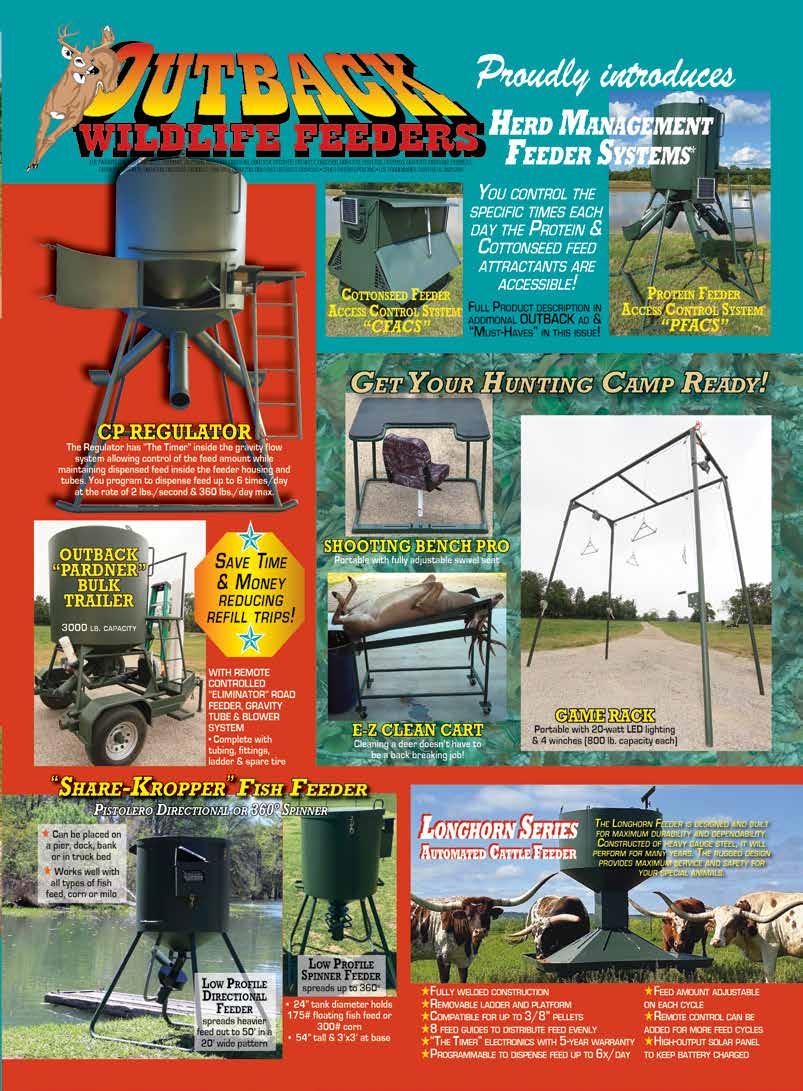
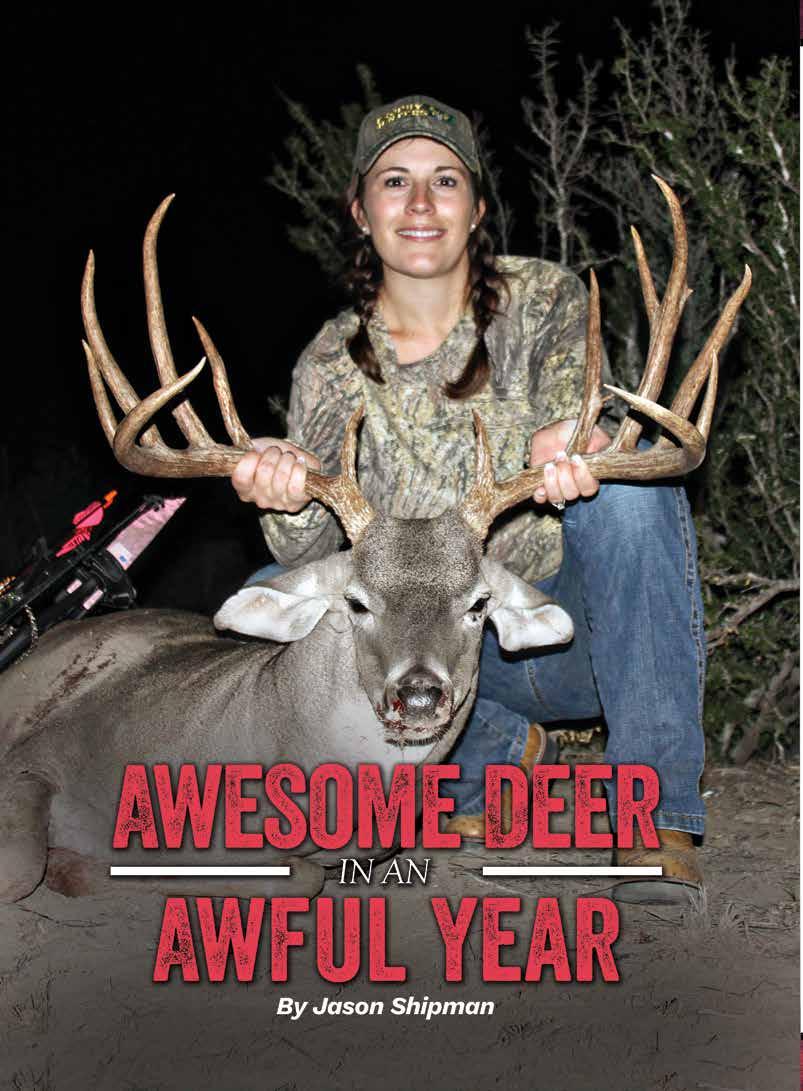

Editor’s note: Jason’s story about Trisha Kusenberger’s award-winning buck appeared in the January/February 2013 Journal . Enjoy!
The brushy landscape of South Texas produces its fair share of big bucks each year, and seemingly, a handful of ranches consistently produce the lion’s share of better deer. The Charco Marrano Ranch is among the names found on this short list. Intensive management, coupled with excellent native genetics have elevated this program to become one of the top low fence, native deer producers in the state. I have had the distinct honor of working with the owners as their wildlife biologist during the progression of their program.
Despite the ranch having a lot of great things in its favor, 2011 was an uphill battle. Extended drought conditions took a toll on the landscape. The scorching summer heat lasted all year and was at times almost unbearable. We watched as the vegetation and stock tanks withered and dwindled away to nothing. Needless to say, expectations were not very high at the onset of the season, and this sentiment echoed throughout hunting camps across Texas.
During the miserably hot off-season, while everything was busy burning up or looking for shade, Trisha Kusenberger had been practicing steadfastly with her bow. A couple years ago, she was fortunate enough to take an outstanding deer with a rifle on her family’s Charco Marrano Ranch. She vowed then that the next buck she set sights on would be with a bow. Weather conditions aside, everyone at the ranch had waited all year to hunt, and so did Trisha.
Early on in the season a great buck emerged. He was literally breathtaking upon sight and almost larger than life. The deer was a familiar face to us. For quite some time he had frequented a particularly thick area of the ranch that harbored several drainages. From many hours spent in the field we knew the deer to be well into his prime—at least 7½ years of age. After careful consideration and a whole lot of deliberation, the family decided on a hunt for this particular deer. They agreed that Trisha would try her hand at bowhunting this giant.
With the wheels set in motion, we formed a plan and made some blind set-ups. These set-ups consisted of several popup blinds strategically located and brushed in with natural camouflage. One window for a shooting lane was left open and the rest would be left closed for concealment within the dark-
Would the plan work? Would the deer come in to the set-up? Would her practice pay off? Thoughts raced through everyone’s head as we prepared for the hunt.
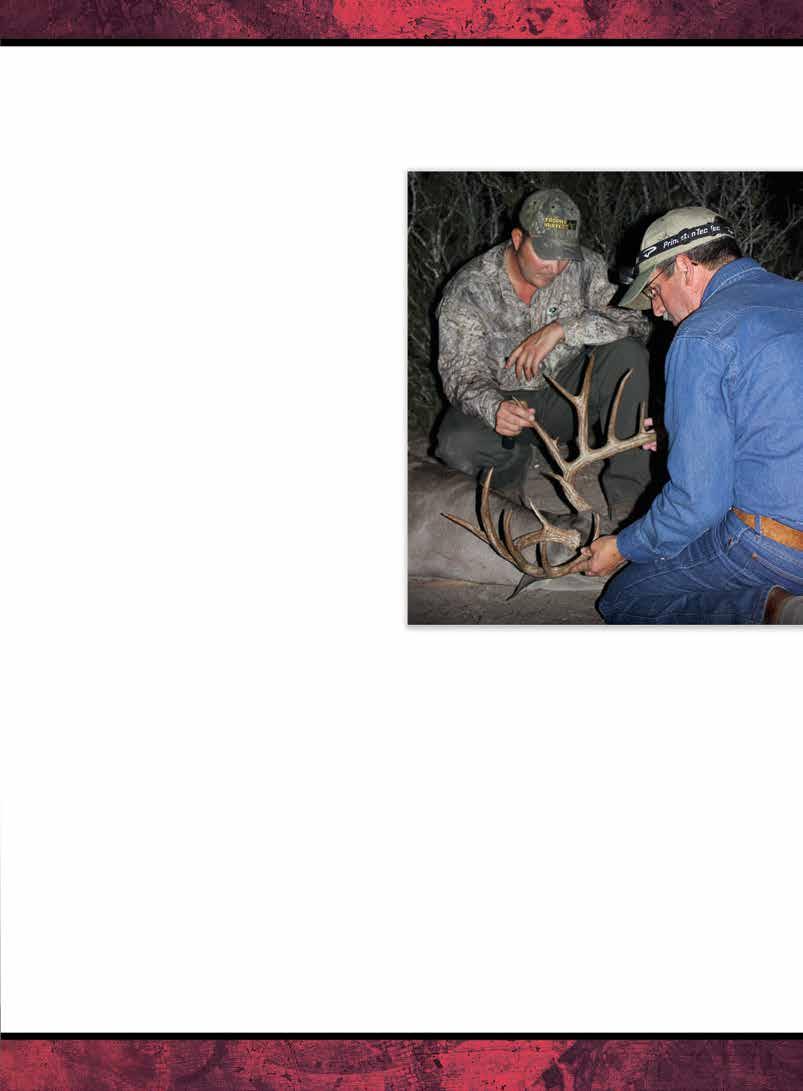
Glen Kusenberger (left) and Stan Shipman examine Trisha’s buck. Both were quite impressed.
After several weeks of scouting, the buck finally turned up at one of the blinds. Now was the time! With busy schedules set aside, Trisha would sit one of the blinds in hopes that the tremendous deer would make a re-appearance. Her husband, Glen Kusenberger, and brother, Travis Hunter, would accompany her for the hunt.
This made for tight quarters in a standard size pop-up blind, but she wanted them there with her to share in the experience. Not that either of them would have taken “no” for an answer anyway! They all sat in hope of waiting out the big deer.
One window for a shooting lane was left open and the rest would be left closed for concealment within the darkness of the blind. Trisha grew nervous with anticipation as she continued her daily practice routine with her bow. Would the plan work? Would the deer come in to the set-up? Would her practice pay off?
ness of the blind. Trisha grew nervous with anticipation as she continued her daily practice routine with her bow.
It was a hot afternoon, reminiscent of many alltoo-familiar days of the dry summer. Deer movement was slow. In fact, there was no deer movement at all. It was turning out to be a long, hot, miserable afternoon. Tunnel vision from staring out of only
one window in the bow blind made it worse. Everyone soon became weary of staring at the same clump of cactus. Their hope for a successful hunt began to wane.
Just as the sun set and the light began to fade, the big buck emerged from the thick tangle of brush he had called home for so many years. He skirted around the edge of brush surrounding the blind almost as if he knew something was amiss. And then he was gone. Everyone sat in disbelief, scratching their heads.
Then, almost as fast as he had vanished he returned. This time he was right on top of the trio and within bow range. When the time was right and the shot presented itself, Trisha carefully drew her bow. After all the work, management, and practice, it came down to this moment.
She was nervous. Who wouldn’t be, with that kind of audience and in such close quarters? Gaining her composure and focusing on the buck, she carefully squeezed the trigger on her release and sent an arrow through the tremendous buck. The shot looked great! Trisha felt good, and so did Glen and Travis.
As the trio began the celebration inside the small blind, they gave the buck plenty of time to expire. They waited rather impatiently for the rest of the family to show up before setting out to recover the deer. Upon arrival of the other family members and after a short tracking job, the real celebration ensued. Everyone was in utter amazement after walking up to the fallen buck. He truly was a sight to behold. To take such a great deer in such a tough year is a true testament to the success of the management program.
The buck measured 183 gross at Los Cazadores and went on to win Trisha a coveted jacket and second place honors in the Women’s Archery Division. At the Texas Trophy Hunters Extravaganza in San Antonio, Trisha won the Women’s Archery Low Fence, Women’s Overall, and the popular People’s Choice awards. For all of this, she received certificate plaques, a coveted TTHA jacket, two Cuddeback digital trail cameras, and two Nikon 10X42 Monarch binoculars.
Journal Editor Horace Gore officially measured the deer, which netted 1683⁄8 as a typical B&C and narrowly missed the Boone and Crockett All Time Awards Book. He believes it’s the best open range typical whitetail buck ever taken by a female bowhunter in Texas. After 42 years as an
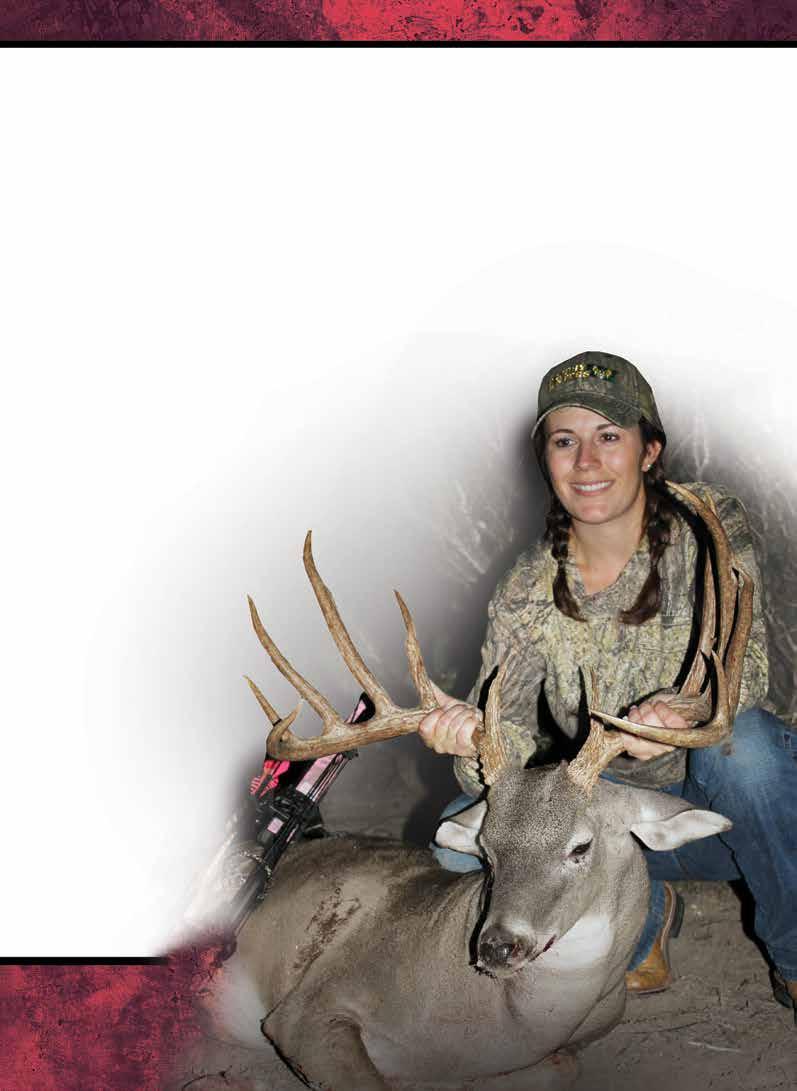
official B&C scorer, he should know! Regardless of standings, it is undeniably an awesome deer.
The drought took its toll in 2011 and was about as bad as any of us had ever seen. Hunting was tough and antler quality across the board was down. Intensive management can help produce quality bucks regardless of conditions, albeit the number of trophies harvested and average scores are usually considerably lower without timely rains.
We are all extremely proud of Trisha and her accomplishment of such a magnificent bowhunting feat. Each of us feels blessed to have been able to play a small role in the experience of taking such an awesome deer under the worst of circumstances. We passed on many deer throughout the season with hope they would be bigger under more favorable conditions. We’re optimistic that this year will be even better.
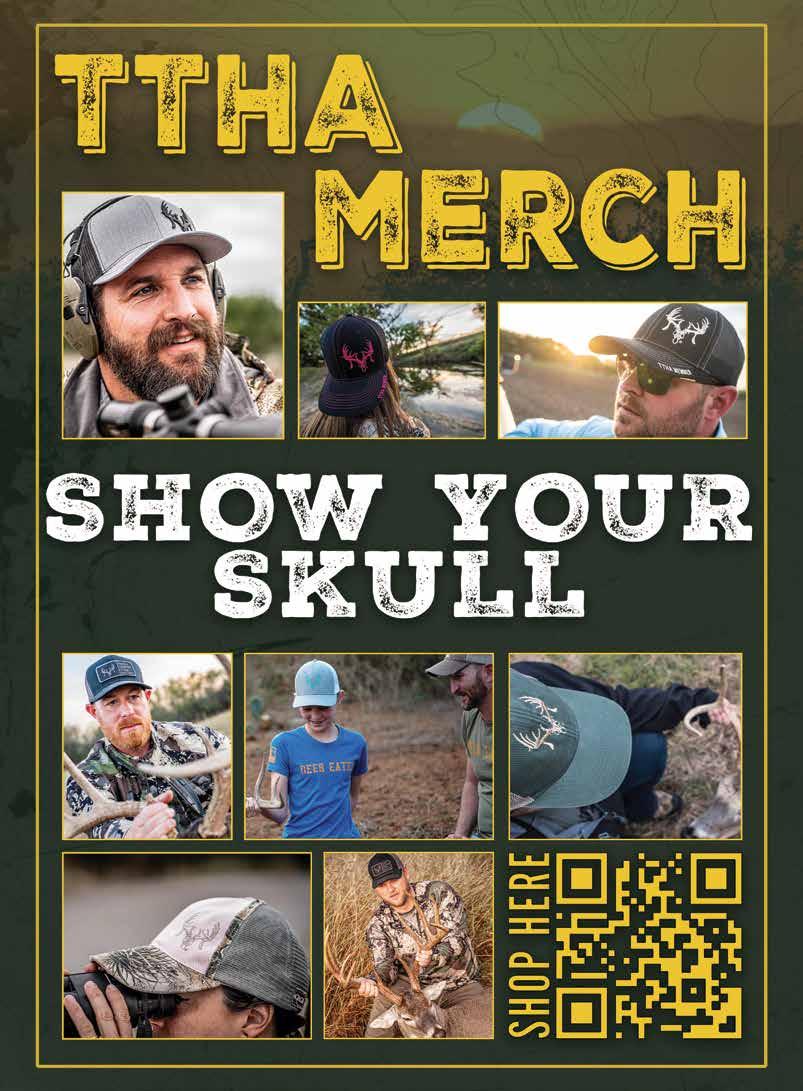
There are plenty of choices for hunters looking over the latest riflescopes, from high-powered magnification, long-range models to those that are compact and lightweight and others with lower power built for fast action at closer ranges from modern sporting rifles.
Many scopes feature first-focal-plane reticles that can be used for ranging at any magnification power — although the reticle changes in apparent size. Others have second-focal plane reticles that can be faster to utilize at closer ranges even though most have holdovers that only are accurate at the highest power.
Prices range from the budget friendly at $149.99 to no-holds-barred enhancements at $3,299.
Most are covered by a lifetime warranty, even if
the owner is not the original purchaser. Some manufacturers could not provide details on their upcoming riflescopes, including Primary Arms and Sightron, so check websites for updates as the year draws to a close.
Abbreviations in this roundup include ED glass, or extra-low-dispersion lenses that reduce chromatic aberration and enhance color, resolution, sharpness and contrast; HD, or high definition, which include special coatings or lenses; and FOV, short for field of view in feet at 100 yards.
Multicoatings also can enhance resolution, cut chromatic aberration and provide color fidelity and edge-to-edge sharpness. Prices are manufacturers’ suggested retail prices.
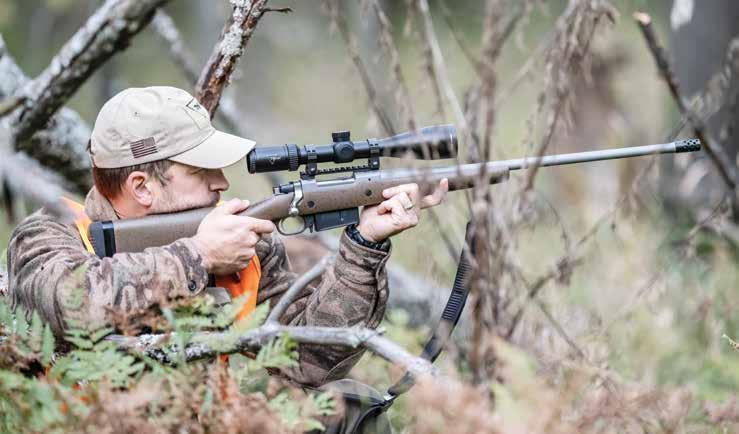
BY JOHN GOODSPEED
Bass Pro Shops and Cabela’s www.basspro.com; www.cabelas.com
Intensity 4-12X40, $149.99
A lot of features at a budget price grace this offering from Bass Pro Shops and Cabela’s. The BDC second-focal-plane reticle’s stadia lines come in 100-yard increments that also provide hold points for a 10-mph crosswind. Built on a 1-inch aluminum-alloy main tube, it offers 4 inches of eye relief, a fast-focus eyepiece, multi-coated lenses and low-profile windage and elevation adjustments in ¼ MOA increments that are capped. The parallax adjustment is set at 150 yards. Depending on magnification power, FOV ranges from 34.7 feet to 11.35 feet. Exit pupil ranges from 13.3mm to 4.4mm. It weighs 15 ounces and is 12½ inches long.
Blaser USA www.blaser.de/en/ B2 2-12X50 iC, $2,014
This model sports one of the highest magnification powers in the B2 line, which can use thermal clip-on devices for hunting in the dark. Made in Germany and featuring a six-power zoom and a 30mm main tube, the riflescope is less than 13 inches long and weighs 25.9 ounces. It is built for the additional weight and stress when shooting with a thermal unit. All B2 models feature fine illuminated fiber optic 4C reticles in the second focal plane. External lenses repel rain with Blaser’s hydrophobic coating. Included are 10 interchangeable engraved rings that cover a range of hunting ammunition. Markings also can be applied to a blank ring. Parallax is fixed at 109 yards. FOV ranges from 32.8 feet to 10.8 feet. Eye relief is 3½ inches.
Burris OPTICS www.burrisoptics.com Fullfield 6-24X50, $600
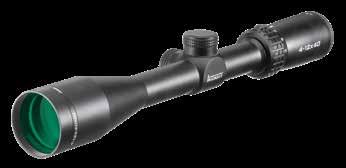
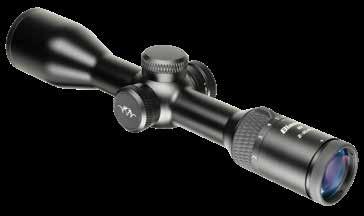

To commemorate its 50th anniversary in 2025, Burris unveiled the redesigned fifth-generation Fullfield riflescope. The most powerful model in the line delivers a modern design, enhanced features and technologies such as the new Burris Knob Synergy System, which allows switching between zero-click-stop-enabled Advanced Capped and Advanced Exposed elevation adjustment knobs. The Fullfield scopes also are compatible with laser-engraved ballistic knobs from Burris. High-relief knurling on the power ring and adjustment knobs ensures a secure grip and smooth operation. Multi-coated lenses combine with high-performance glass to minimize glare and boost low-light visibility. The 6-24X50 sports a 30mm main tube. FOV is 17 feet to 4.8 feet. Eye relief is 3.3 inches. Exit pupil is 8.5mm to 2.9mm. It is 14.4 inches long and weighs 18.9 ounces.
Bushnell Outdoor Products www.bushnell.com
Elite Tactical XRS3 6-36X56 FFP Riflescope, $1,899.95
Revisions on this model of the XRS3 include a new G5I reticle and push-button illumination and a six-hour auto-off timer. The G5I reticle was developed with George Gardner of G.A. Precision. It features additional 0.25 MRAD intervals, a more evenly distributed tree shape with additional windage dots and numerical identifiers on both sides. The first-focal-plane reticle with a new coating pairs with the ED Prime objective lens that is multicoated lenses. The EXO Barrier sheds water and dirt. The multi-position Throwhammer works with either hand and is removable. Bold turret markings are easier to see. The RevLimiter Zero Stop is simple and fast. The tube measures 34mm. FOV is 18 feet to three feet. Eye relief is four inches. Exit pupil is 8.5mm to 1.6mm.
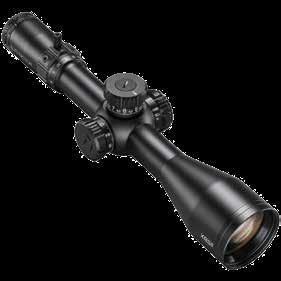
German Precision Optics (GPO) USA www.gpo-usa.com
CENTURI 3-12X44i Super Compact, $519.99
This riflescope, engineered for short, ultralight modern sporting and rimfire rifles, is designed for shooters seeking compact premium optics. At 9.9 inches long and 18.9 ounces, the second-focal-plane scope’s double HD glass elements provide clarity, the G4i illuminated micro-dot reticle enhances precision and the fast-focus ocular allows quick adjustments with the throw lever. Features include a 30mm tube, 100-MOA elevation and windage adjustments and a parallax adjustment turret for 10 yards to infinity. It also boasts GPObright lens coating technology, PASSIONdrop hydrophobic lens coatings and SFPcapped ¼-MOA Zero-Stop reset turrets. FOV ranges from 45 feet to 11 feet. Eye relief is 3¾ inches. Provided accessories include a see-through bikini scope cover for both the objective and ocular lenses, an instruction manual, a cleaning cloth, and a CR2032 battery.
Leica Sport Optics https://us.leica-camera.com/sport-optics
Amplus 6 3-18X44i L-4w BDC (MOA), $1,599
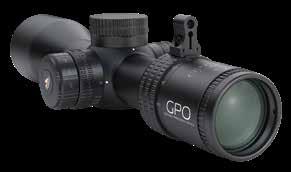

Now in its fifth year, the Amplus 6 line gets another reticle choice, this time with a simplified view, the L-4w (MOA). The L-4w is designed for a clear, uncluttered sight picture with wind holds in MOA. There are no hashmarks for elevation or holdover. The illuminated reticle provides a fine red dot. With a 6X magnification range, second-focal-plane reticle and a 30mm tube, each scope in the line provides light transmission of more than 90 percent, according to Leica. The side parallax adjustment ranges from 65 feet to infinity. FOV ranges from 39 feet to 6.8 feet. Eye relief is 3½ inches. Exit pupil ranges from 7.3mm to 2.4mm. It is 12½ inches long and weighs 23.6 ounces. The 3-18X44i L-4w comes with flip-up lens covers.

Maven Outdoor Equipment Co. www.mavenbuilt.com
CRS.3, 4-20x50, $700
This first-focal-plane model expands the mid-tier line of CRS riflescopes, which are known for value and optics. It is built around Maven’s value-focused C series lenses, which feature ED glass. It also offers a higher magnification range and a larger objective lens than other models in the line. Available in either MOA or MIL reticles, the CRS.3 features an illuminated SHR-W or SHR-MIL reticle. At 15.4 inches long and 27.3 ounces, it sports a 30mm tube, elevation and windage turrets with ¼ MOA or 0.1MIL clicks and side parallax adjustment from 11 yards to infinity. FOV is 22½ feet to 4.73 feet. Exit pupil is 11½mm to 2½mm. Maven sells direct to consumer, which it says reduces costs over retail.
Riton Optics www.ritonusa.com
3 Primal 3-15X44 LW, $749.99

Backcountry hunters get a compact option that does not compromise on features. At 12.7 inches long and 20½ ounces, the 3-15X44 offers a 30mm tube constructed from 6061-T6 aluminum, a multicoated optical system and a second-focal-plane glass-etched Extended Range Plex reticle with 2 MOA holdovers. The elevation and windage range is 60 MOA in ¼ MOA clicks. Riton says its HD glass delivers 99½ percent light trans mission. Coatings include scratch, reflection and water resistance. The scope also is impact tested up to 1,200 Gs and is rated for use on airguns. Parallax adjustment on the side dial is 25 yards to infinity. FOV is 39.2 feet to 6.65 feet. Eye relief is 3.54 inches. Exit pupil is 7mm to 2.6mm. It comes with flip-up lens covers, a lens cloth and an Allen wrench.
Steiner Optics www.steiner-optics.com
H6Xi 2-12X42mm (RFP), $2,183.99

H6Xi riflescopes earlier this decade blended the military toughness of Steiner’s T6Xi-series tactical riflescopes with features catering to the modern hunter. Now
the H6Xi line expands with two models featuring a second-focal-plane reticle, or a rear focal plane reticle, as Steiner calls it. It is available in the model shown here or the 3-18X50 ($2,298.99). The fine, illuminated dot in the reticle’s duplex crosshairs is easy to locate. Because the reticle is in the second focal plane, its size remains the same regardless of magnification — ideal for engaging game at closer distances or in low light. For longer-distances, there are BDC subtensions. FOV is 55 feet to 8½ feet. Eye relief is 3.85 inches to 3.52 inches. Exit pupil is 9.8mm to 3.8mm. It is 11.8 inches long and weighs 23.2 ounces.
Swarovski Optik www.swarovskioptik.com
Z5i+ 5-25X56, $2,269
The new riflescope with a 30mm tube was designed for long-range hunters with 80 MOA of elevation adjustment in ¼ MOA clicks and a zero-stop. The illuminated scope can be equipped with four reticles — plex, 4W, BRS and BRW MOA holdover. Another new riflescope, the Z8i+ 1-8X24 ($3,299) with a 34mm tube, also was introduced for closer ranges and faster target acquisition. The 5-25X56’s side parallax adjustment ranges from 50 yards to infinity. FOV is 20.7 feet to 4.2 feet. Eye relief is 3.74 inches. Exit pupil is 9½mm to 2.3mm. It is 14.8 inches long and weighs 21½ ounces. The 1-8X24 offers an FOV of 150 feet at 1X and 24.3 feet at 8X. Eye relief is 3.74 inches. Exit pupil is 8.1mm to 3mm. It is 11.9 inches long and weighs 21.1 ounces.
TRACT Optics www.tractoptics.com
TORIC 2.5-15X44 Eagleman LRH MOA Reticle, $994
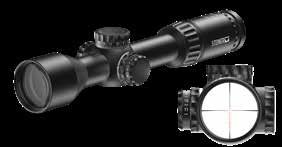
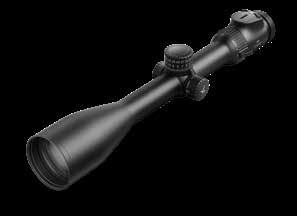
The Eagleman reticle first-focal-plane models in the TORIC line expand with this 30mm tube model. Also new is the 4-25X50 ($1,494) with a 34mm tube. Designed for long-ranges, the reticle features a dot that does not obscure the target. The 2.5-15X44 adjusts 100 MOA or 30 Mils. The 4-25X50 adjusts up to 160 MOA or 47 MRAD. TRACT partnered with James Eagleman of Barbour Creek Shooting School to develop the reticles. They follow the introduction of the TORIC 4-25X50 MOA scope last year with the MRAD version of the Eagleman along with MOA and MRAD options in the more compact 2.5-15X44 models, which weigh 28 ounces. The 4-25X50 weighs 39 ounces. The models feature SCHOTT HT glass with ED lenses and a glass-etched illuminated reticle. TRACT sells direct to the consumer.
Trijicon www.trijicon.com
Huron 4-16X50, $985
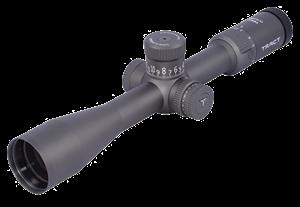

Built with military-grade durability and premium glass, the Huron lineup expands to six models with the one shown here and the 1-6X24 ($735). Huron riflescopes use the same multicoated broadband anti-reflective glass as the AccuPoint and Tenmile HX series. They are available with second-focal-plane reticles in a Standard Duplex, German No. 4 and the BDC Hunter Holds for multiple hunting cartridges. Elevation and windage turrets are low capped with ¼ MOA clicks and up to 70 MOA of adjust ment. The main tube of the 4-16X50 is 30mm. FOV is 28½ feet to 7.1 feet. Eye relief is 3.1 inches to 3.8 inches. Exit pupil is 8½mm to 3.1mm. It is 14½ inches long and weighs 24.2 ounces. The package includes a lens caps, a Scopecoat cover and quick reference guide.
Vortex Optics www.vortexoptics.com
Viper HD 2-10X42, $899.99
One of the latest from Vortex is this compact 30mm tube model, which is 12.1 inches long and weighs 19.9 ounces. Like other Viper HD models, it features the HD Optical System with lenses and multicoatings. It features the illuminated Dead-Hold BDC reticle in the second focal plane. Elevation and windage adjustments reach up to 135 MOA in ¼-MOA clicks. Turrets are capped. ArmorTek exterior lens coatings defend against scratches, oil and dirt. Parallax is set at 100 yards. FOV is 61.6 feet to 11.9 feet. Eye relief is 3.4 inches. Included are a neoprene cover, sunshade, lens cloth and a CR2032 battery.
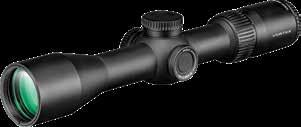

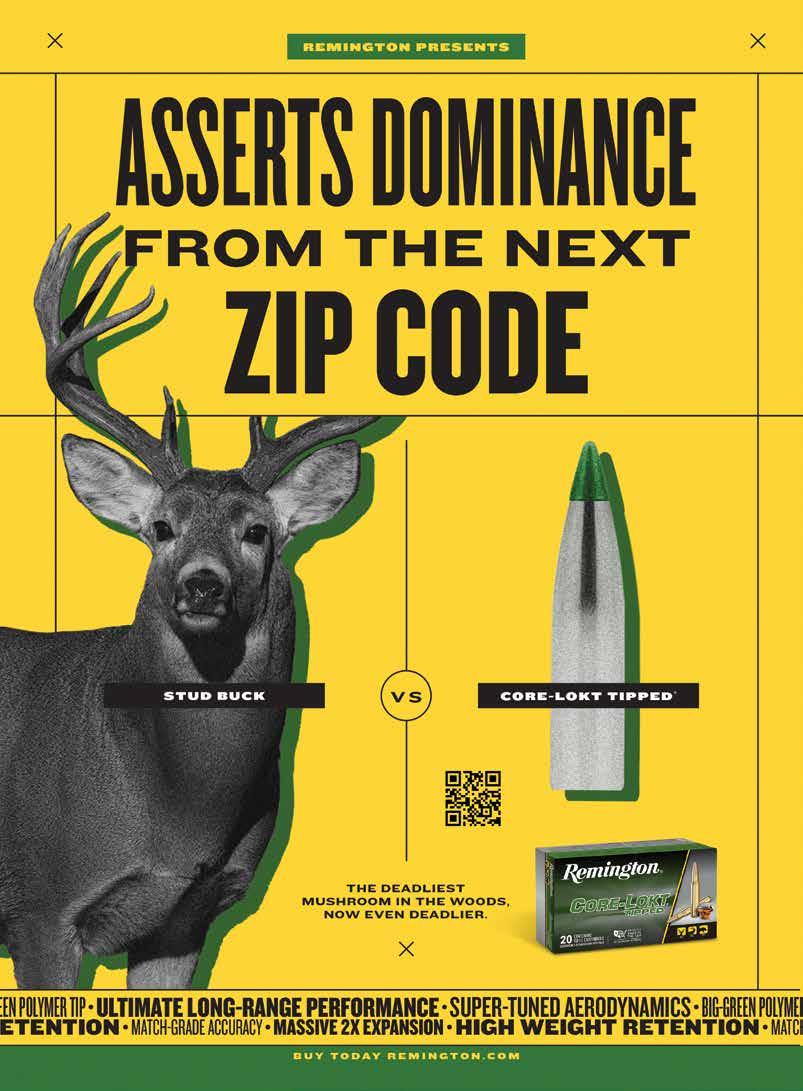
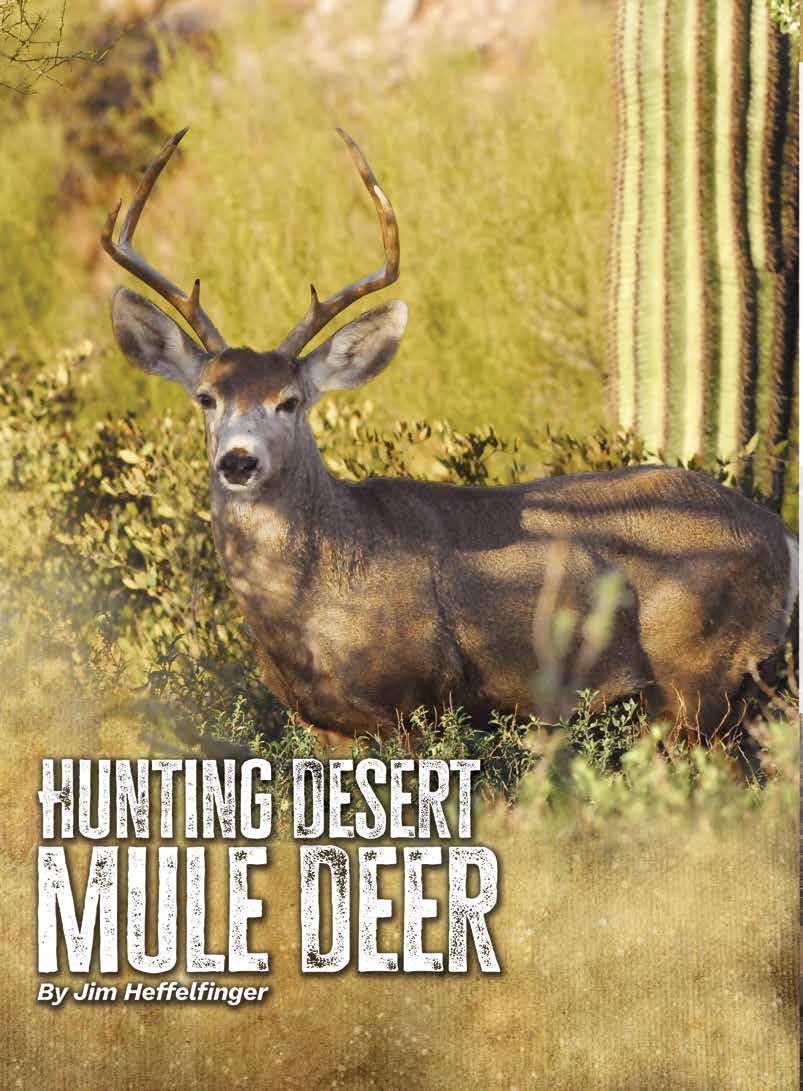
When hunting desert mule deer, think about where deer are finding food, water, and cover.
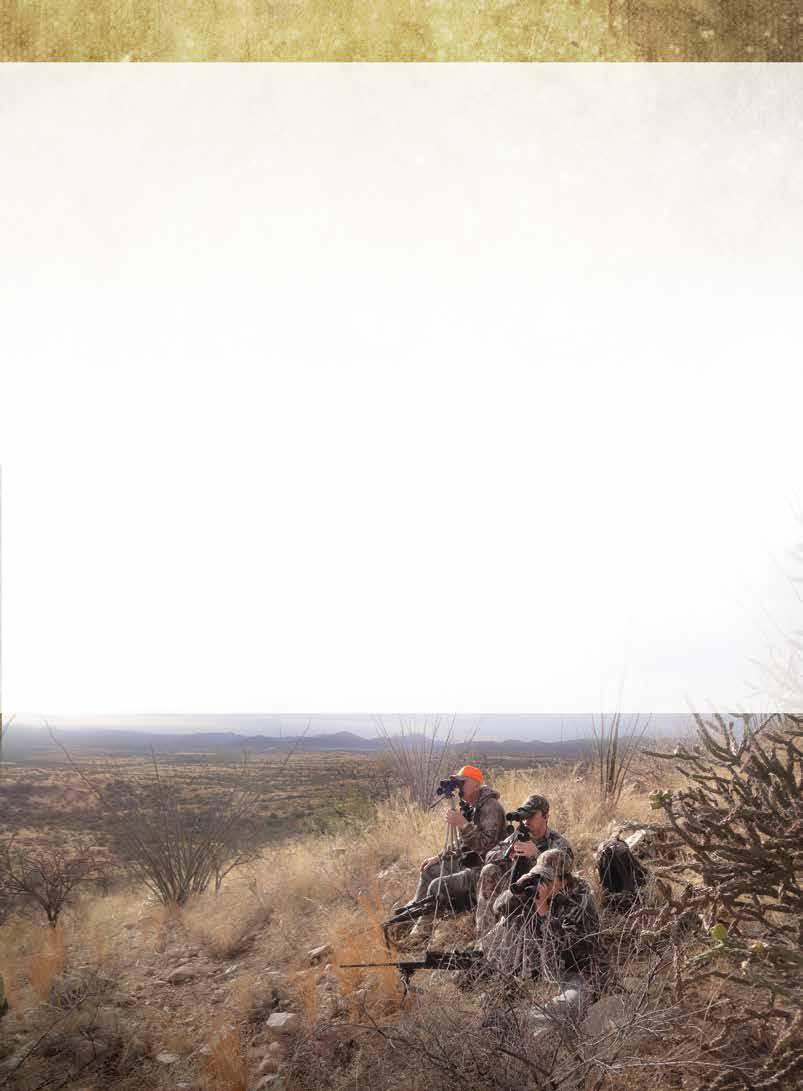
Each year, more than 30,000 deer hunters harvest about 11,600 mule deer in Texas. Unfortunately, mule deer populations are declining in the Trans-Pecos, probably because of recent drought and the impacts of dramatically increasing populations of aoudad and elk in that arid, desert mule deer habitat. The good news is, Panhandle mulie populations are stable or even increasing. Hunting the desert mule deer in its beautifully unique habitat is an adventure everyone has to experience at least once.
White-tailed deer are very much creatures of habit in their movement patterns and use of the landscape, which can be used to the hunter’s advantage with some homework and scouting. However, mule deer have much more nomadic habits and are more likely to wander around their annual home range unpredictably. This makes it hard to pattern them and set up where you know they will be. Fortunately, mule deer have the sometimes-deadly habit of initially running from danger, only to stop and look back one last time before cresting over a ridge. Because of this behavior, they sometimes don’t make it over the ridge.
Being prepared long before the season opens is important if you’re serious about being successful. When planning for an upcoming hunt, many considerations should be part of your preparation. Some of the most useful preparation for a hunt is simply talking to people who have spent time in the area. Others who have been out on a deer lease, ranch, or public land always have useful information about road conditions, locked gates, deer that were seen, range conditions, water availability, and the status of agricultural crops and livestock operations. Talk to the local rural residents, rural postal workers, biologists who conducted the deer survey, and the most knowledgeable of all, the vaqueros.
Although talking to others is very useful, there is no substitute for getting boots on the ground yourself and checking things out. You should always have a good set of maps, even if you already know the area well. Maps help identify pockets of habitat far away from roads and human disturbance. They also allow you to record locations of deer observations, bed sites, feeding areas, trails, and other points of interest.
Having all that information stored only in your head makes it difficult to recognize patterns that can help you strategize for your hunt. Even if you have hunted on a ranch for many years, there is a lot to learn from a topographic map. Looking at the way draws and drainages snake through the area can reveal travel corridors you hadn’t thought of before. Automatic camera technology has made phenomenal advancements in the last decade. These can be a great aid for learning more about the deer herd in the area, but relying on camera images gives you only a snapshot of everything going on out there.
The amount of equipment you have depends on the type of hunting you’re doing, but at a minimum, you should have a pack with basic necessities even if you don’t plan on hiking anywhere. Think of it as a “Go Bag” for hunting. There are some basics you should carry with you no matter how you plan to hunt, such as a GPS or map app, compass, quart of water, binoculars, sunscreen, matches, snack, hunting license, deer tags, flashlights, rope, knife and knife sharpener. All of this easily fits in a small daypack. On any given day, you could have to take off at dark to find a downed animal or decide to close the distance on a huge buck on foot and have 200 yards turn into 2 miles.
When asked, biologists are fond of saying, “Deer are where you find them.” That sounds so vague and unhelpful, but who can argue with the truth. Deer distribution throughout the
habitat can be seemingly random and unpredictable because they actually respond to a complex array of things we don’t fully understand. Daily movements of deer are driven by their basic needs.
If agricultural crops or food plots are in the area, keying in on those is obvious, but in most cases deer “food” means areas
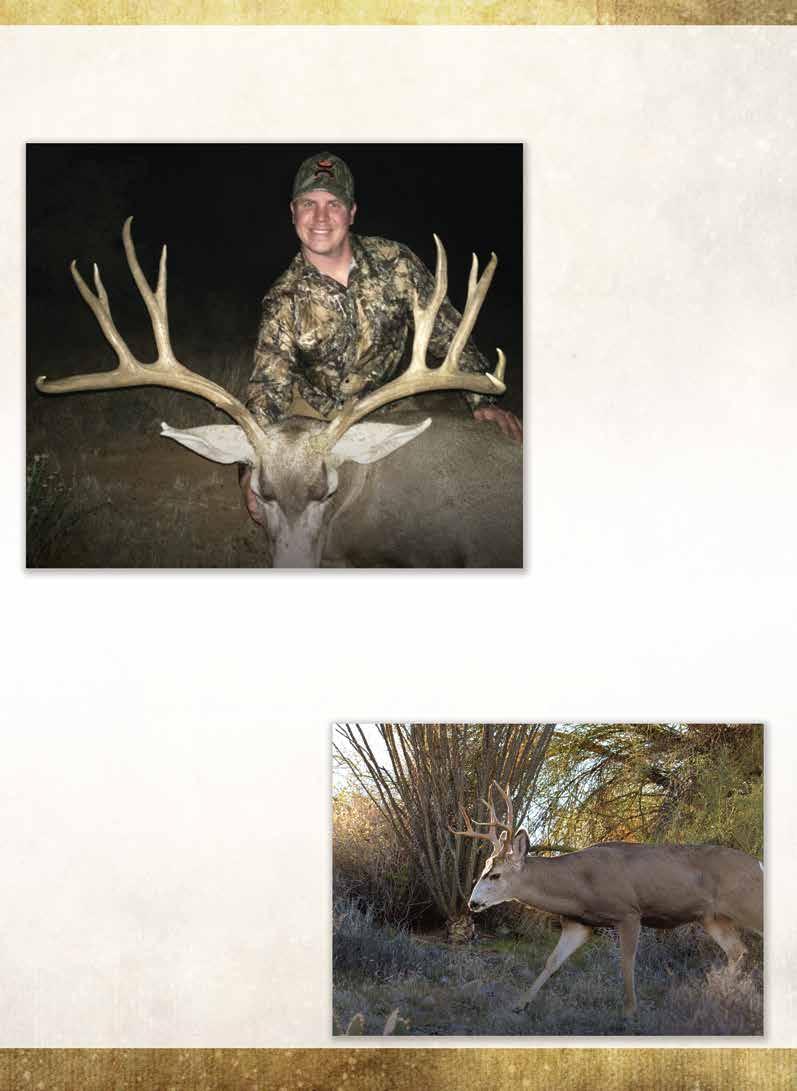
with a concentration of natural foods like shrubs, weedy greenup, or fruits and nuts like acorns. Water is not a limiting factor during most months of an average year and even in some entire years, but when it’s in short supply, it can strongly drive deer movements and habitat use. In some areas of the Southwest, radio-collared deer have been found to stay within a half mile of water, and move 10-20 miles after a local source dried up. Cover may be important for concealment from disturbance, such as roads, or protection from the elements. This means deer might be found in sheltered pockets of cover protected from a cold wind and nasty weather, or shade from the sun. In some cases, cover is absolutely everywhere so deer distribution won’t be related to cover, but in more open habitat, mule deer will be strongly associated with areas that have a good interspersion of cover throughout the habitat. A solid understanding of how deer use their habitat where you hunt is critical to developing a strategy for success.
Successful hunting strategies consider the basic needs of deer—food, water, shelter—and attempt to predict where deer might be at any given time. Because every situation is different, a hunter must learn the layout of the habitat and think like a deer. With whitetails it’s easier to pattern deer and set up
in areas where deer may be moving consistently from bedding to feeding areas. When mule deer hunting, it is more akin to placing yourself in general areas of good habitat and using optics to find bucks in open country.
The second level of strategizing is to think on a smaller scale and consider the current conditions to predict areas with a higher probability of finding deer. Is it so dry they will be hanging around water sources? Is wind enough of a factor right now to force them to find areas sheltered by thick vegetation or topography? Has there been a lot of disturbance that will force them to seek secluded areas, or is there a burn nearby that will attract them when feeding? Think about the needs of deer and focus on what might be attracting them at the moment. Think like a deer and you should find yourself among them.
Your strategy should allow you to stay flexible. If something is not working, don’t be shy about shifting gears and trying a completely different area or technique. Pay attention to the amount of sign in the area as a guide to recent deer activity and occupation. Remember, never leave deer to find deer. In other words, if you’re seeing deer in the area, be patient and keep working it.
Mule deer hunting is a great chance to get out of the house and be with friends and family. It’s a great American tradition that drives the most successful system of wildlife conservation ever devised, so if you’d rather not try so hard, there is no shame in that. However, if you’re serious about getting a deer, start with an open mind and think about where the deer should be, based on their daily needs and all the local and recent factors that can affect deer movement and distribution. Above all else, hunt like you’re hungry and be determined to persevere.


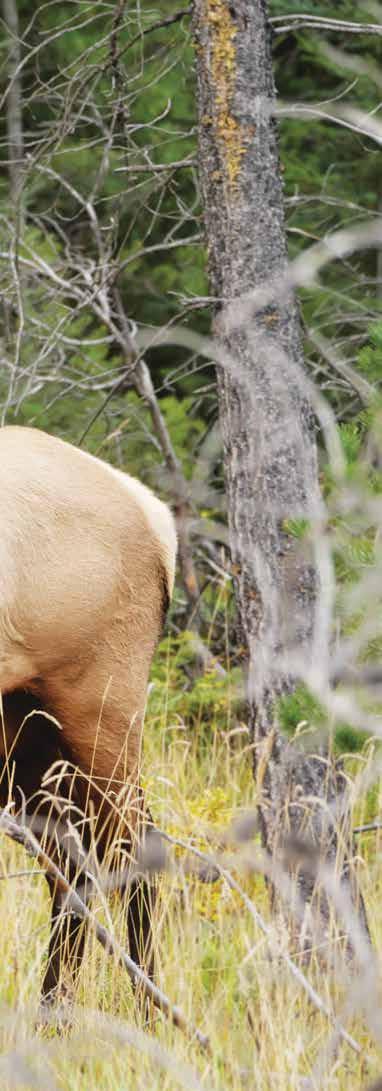
So, you and a hunting buddy have decided to go elk hunting in New Mexico. You’ve killed whitetails, pronghorn, and a good axis buck, and now it’s time to go after the king of antlered cervids. You will soon learn that elk hunting is different in both terrain and the size of the animal. A primer on elk hunting and a story or two are in order.
Elk are big and heavy, and difficult to handle where they are normally killed. These large cervids spend a lot of time above timberline in the high country, and the only things that drive them to lower elevations are cold and snow. So, the later you hunt elk in the winter, the more you will find them in large herds in low country where food is plentiful. But regardless of whether the elk is high or low, they don’t come easy.
Elk are hunted at higher altitudes during early seasons, and hunters are often packed in by guides with horses. Camps are established with all provisions, and hunters often go to spike camps for short hunts, where supplies and living conditions are limited.
When elk are killed in spike camps, they are usually quartered and taken by pack animal back to the main camp, where the meat is hung out of reach of bears and varmints. Elk bulls may weigh as much as 700 pounds, so hunters must be prepared when elk hunting. In general, elk are a specialty hunt, with guides and equipment to deal with the big animals. Most guided elk hunting is done on private, mountainous property or hunting concessions in the public domain.
I was visiting a Utah private leased concession with the lease manager, and we were guiding a young hunter from Houston. We found a large bull with exceptional antlers, and the hunter put the bull down in some waisthigh brush. It took all three of us to roll the bull over in the brush for gutting, and a truck came from camp and winched the bull
up on the flatbed. I was sure that bull was as big as a racehorse when we approached him on the ground. A fat, 8-year-old bull elk is a challenge.
Nimrod hunters can draw tags and buy licenses to hunt elk in national forests or on BLM lands. These hunters often take both male and female elk, and dealing with a dead elk in mountainous terrain can be a problem. In some areas, hunters are allowed to use all-terrain vehicles, but many areas require a hunter to walk in and out, and such hunts require planning.
New elk hunters often find out what it’s like to kill a bull or cow where it’s almost impossible to get the animal or meat out. However, these situations occur only once, because recurring hunts are always more efficiently planned. South Texas whitetail hunters who kill their first elk are surprised to walk up on an animal that is three or four times as big as anything they have ever killed. For new hunters, elk can be handled more expediently when hunters are in a group. Elk can come as a surprise because they can cover a lot of country in a short time when disturbed. Large herds can disperse from one ranch to another after being chased or shot at by hunters. When this happens, even mule deer hunters often get an elk unexpectedly when small groups travel miles into other properties. Mule deer hunters are not usually prepared for elk and handling the animal and getting the meat out can be a problem.
The most successful elk hunts are guided by local residents who know the elk range and where elk are likely to be herded up. The inexperienced elk hunter can get a bull if they pay the price and use a guide service. However, elk hunting is not for the meek. Taking horseback rides for miles, and hunting on foot in rough terrain is tough on a weak disposition.
The weather is often thick, and the air thin. I won’t say that it’s a man’s hunt, because a lot of elk
The author emphasizes that elk are big and difficult to handle for field dressing, skinning, and cutting.
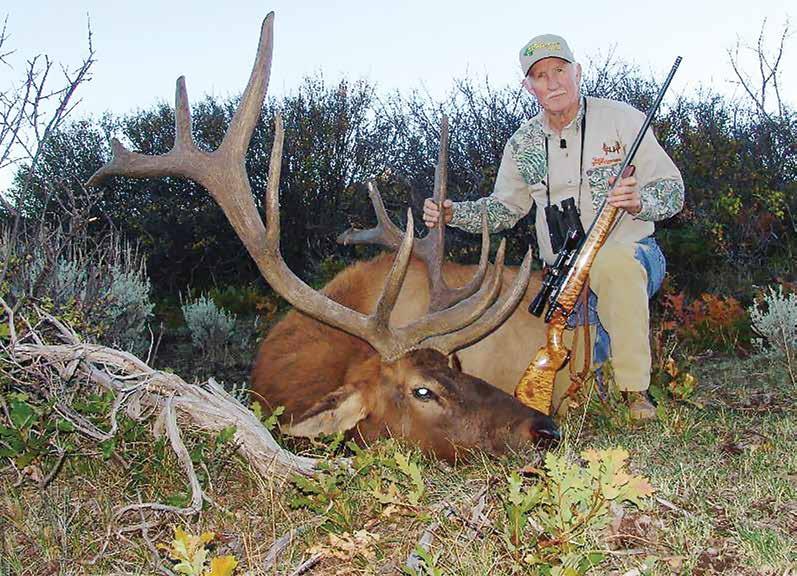
are taken by female hunters. But I will say that elk hunting takes a strong desire, and conditions can often be cruel for a few days.
I killed a big bull elk on the north end of the Black Canyon of the Gunnison back in 2004 when I was invited to Crawford, Colorado, to hunt with a guide who I had met in Texas. He was familiar with local elk herds, and we were hunting on foot in some rough country. Two big bulls outsmarted us, and we completely lost them. In another location, we found a lone bull, and we figured that he had been pushed out of the herd by a younger bull.
The old bull was boney and gaunt, with large antlers and broomed-off beams. The brush was head-high and thick, and we stalked him to 80 yards, as his attention was on other things. My guide handed me a shooting stick, and I put a 168-grain Remington Core-Lokt bullet behind his shoulder with my Weatherby .300 Mag. The bull didn’t react, but I saw his head drop a bit through the scope. He trotted a short distance and fell over dead.
We were prepared for the bull, and the guide called headquarters for help. While we took photos and admired the old bull’s antlers, a flatbed truck came up and we field dressed the animal and got him on the truck bed. Back at headquarters, the guide and his helper hung the bull high and skinned him, taking care to preserve the cape.
The 340 B&C antlers were exceptionally heavy, with 13 thick, long tines—the royal tines being 23 inches. The bull would have scored much more, but his beams were only 56 inches—4 to 6 inches shorter than the norm.
We quartered the bull and took the meat down to a taxidermist in town. He cut the best pieces for my trip back to Gonzales, Texas, in exchange for the cape. I took the skull and antlers for a European mount on a pecan wood octagon base. The antlers were too large for a wall mount.
My only other experience with bull elk came while mule deer hunting in the Bighorn Range of Wyoming. A large herd of elk had been disturbed on an adjacent ranch, and with elk tags in our pockets, three of us went to hunt mule deer, and elk, near the neighboring ranch. We were hoping to get a cow for meat, but I got a close shot at a young bull with my .270. My partners each got a cow, so we brought a lot of elk meat back to Texas.
I don’t claim to be an elk hunter, and have taken only two bulls and three cows in Colorado, Utah, and Wyoming. But I can tell you elk are big and difficult to handle for field dressing, skinning, and cutting. If you are hauling elk meat, you will need a big ice chest or maybe two. My big bull was a Colorado guided hunt, and my hunting partner in Wyoming had a Jeep, so both bull elk were taken to camp in style. The cow elk were killed where I had plenty of help getting them to the skinning rack.
Good bullet placement is required to kill elk. I have taken bulls and cows with a .270 and 150-grain bullets; a .257 Weatherby Mag. with 117-grain bullets; a .264 Win. Mag. with 140-grain bullets; and a .300 Weatherby Mag. with 168-grain bullets. All went down with good shots, and I had a lot of help on all hunts. But, without guides or a friend with a Jeep, I would have been in some tough situations. Elk don’t come easy.
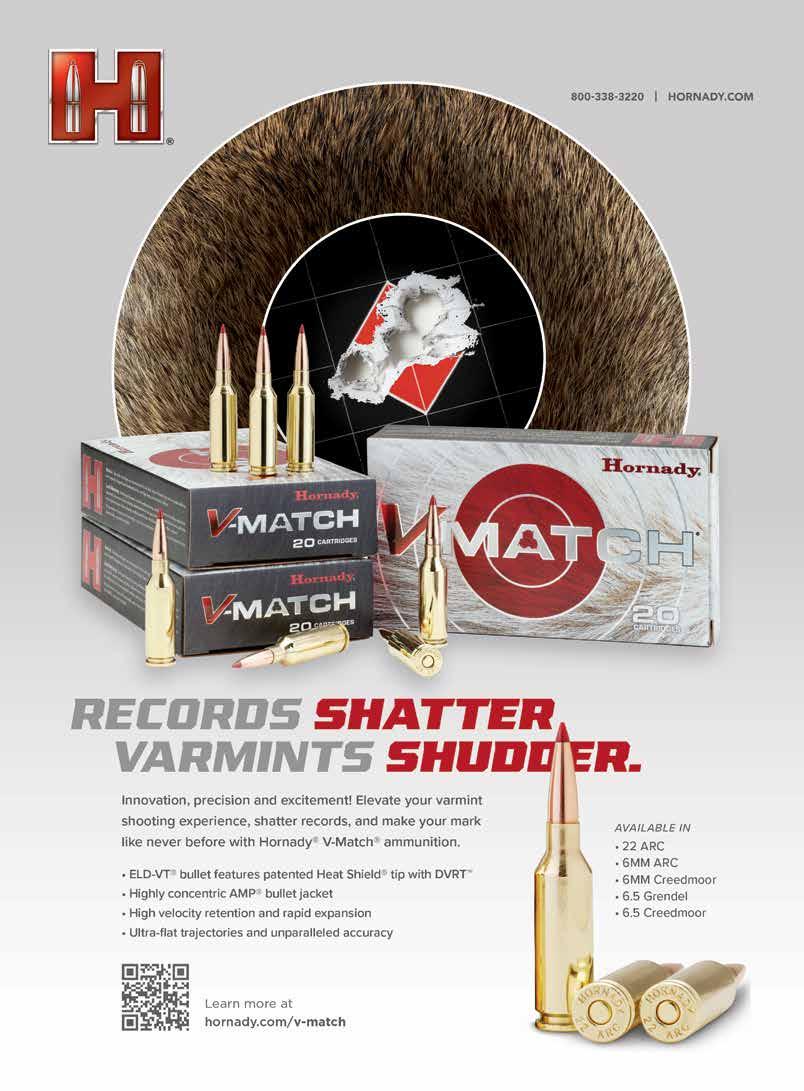

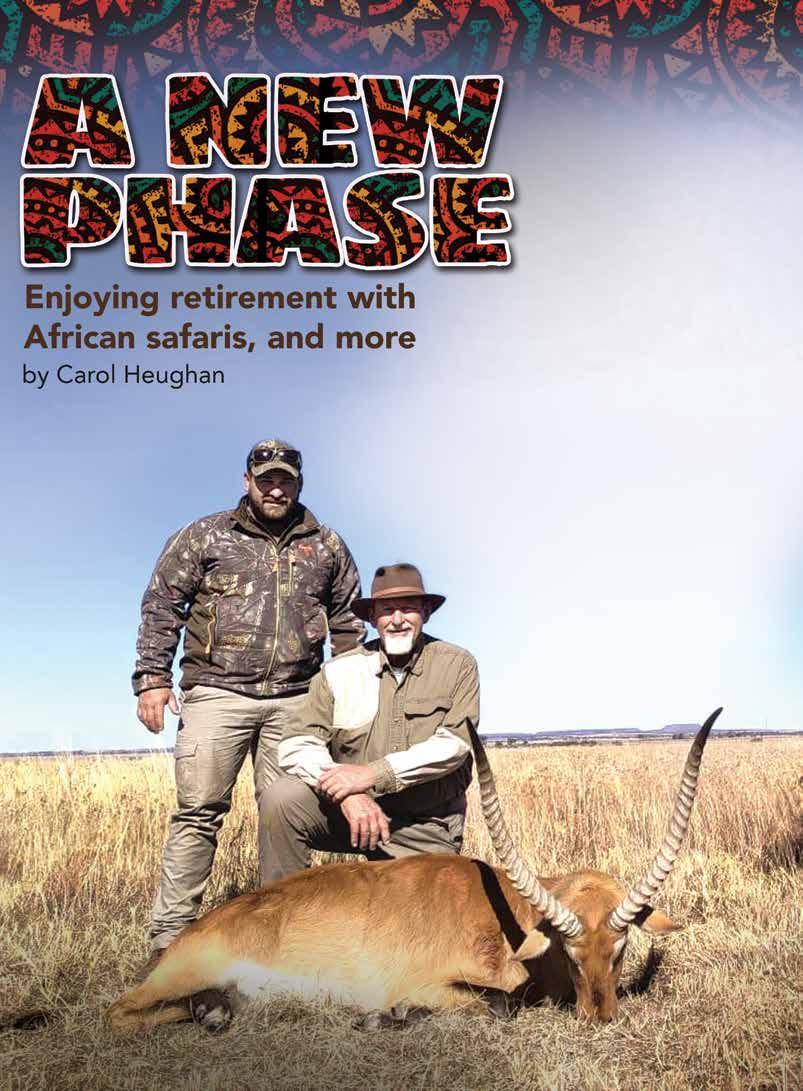
Retirement is a time for reflection, focus and meditation. That can be done in a deer stand or fishing for flounder, trout and redfish in the Texas bays. My husband Paul and his good friend Billy Duecker have been hunting and fishing together since their early adulthood. Each stage in life covers an age range in which most people share common interests, experiences, and a level of maturity. Now comes their retirement phase, and they have not slowed down a bit on these outdoor activities.
Paul bought an African safari hunt from the CCA Banquet in 2021. Paul decided to take Billy with him because I have already gone with Paul twice. Both trips with Paul were outstanding. I got my steenbok on my second trip. I made a nice 100-yard shot off sticks after stalking the steenbok for a short time with our professional hunter (PH), Franco. We used Limcroma Safaris, a South African outfitter, on our two trips. This trip for Paul and Billy would be with Kuche Outfitters. Both outfitters are in the Limpopo region of South Africa. Limcroma offers 45 species of trophy class African
plains animals on almost 200,000 acres of closely managed hunting concessions in South Africa. Kuche Safaris has a strong reputation in the field and their hunting locations. June, July, and August is winter in the Southern Hemisphere. The minimum average temperature is 36° F while the maximum average temperature is 68°-73° F.
Paul’s third trip to South Africa was delayed twice due to the pandemic and bad weather in Atlanta. He and Billy ended up in Florida due to a rainstorm on the second try. But they finally made it to South Africa on the third try. They had a 16-hour flight from Atlanta to Johannesburg. Then it takes about 4 hours by Jeep to get to the ranches.
Due to the experienced PH that Paul had, he got his prized zebra this time.
On one of my trips, I was surprised how well the zebra blends in with
the trees and how fast they can disappear when being stalked or spooked. I tried to get one by stalking, but I did not get close enough to make a shot at a zebra. Paul got his zebra this time, and now it will be a nice rug for the trophy room.
Billy and Paul both got their sables and lechwe antelope. They would go on to “shoot it up” as they say and have a field day because there were no plans to return to South Africa in the future. Billy got his blue wildebeest as well, and Paul got his gemsbok. The South African plains animals supply an abundant amount of meat for the locals and guests.
The plains animals make great table fare. You can’t bring the meat home with you, only the trophies, and it takes about a year to have the trophies shipped to you. While you’re there, you can dine on what you’ve taken. You haven’t lived until you’ve tried an impala taco, or an eland or kudu steak, cooked over an open fire pit in South Africa.
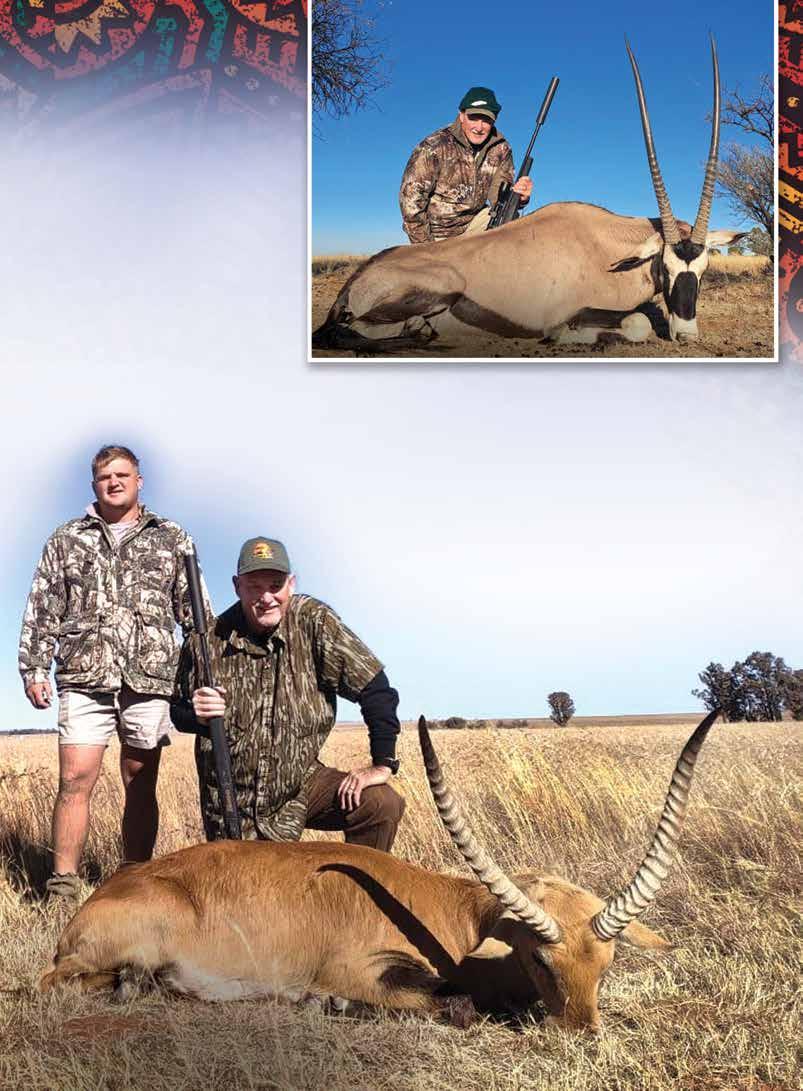
Billy’s
The shots that an experienced hunter must take on these African plains animals are not at a close distance. Billy shot his sable at the top of a rocky steep hill. There aren’t many rocky areas in these plains. I think the trackers were hoping it would run back down the hill, but Billy’s shot was right on, and the sable dropped in its tracks. It took a while for them to reach the top to retrieve and admire his trophy.
The outfitter provides the guns, so you don’t have to bring one from home. It’s a lot less trouble. The .30-06 rifle has a manageable recoil and effective range up to 1,000 yards and consistent accuracy. This is commonly the gun the outfitter has for you to use.
Paul did bring his bow on our first trip, and even that had to go through a customs inspection. Both outfitters offer bowhunting trips and photograph safaris for those who do not hunt. The shots for these animals are from a longer distance, not like in the Texas Hill Country where a long shot is not as common.
Paul and Billy have been on the Texas deer lease for about 20 years now. I am sure they will enjoy more years to come. My oldest brother and an uncle hunted Texas deer until their 80s. The elderly age phase.
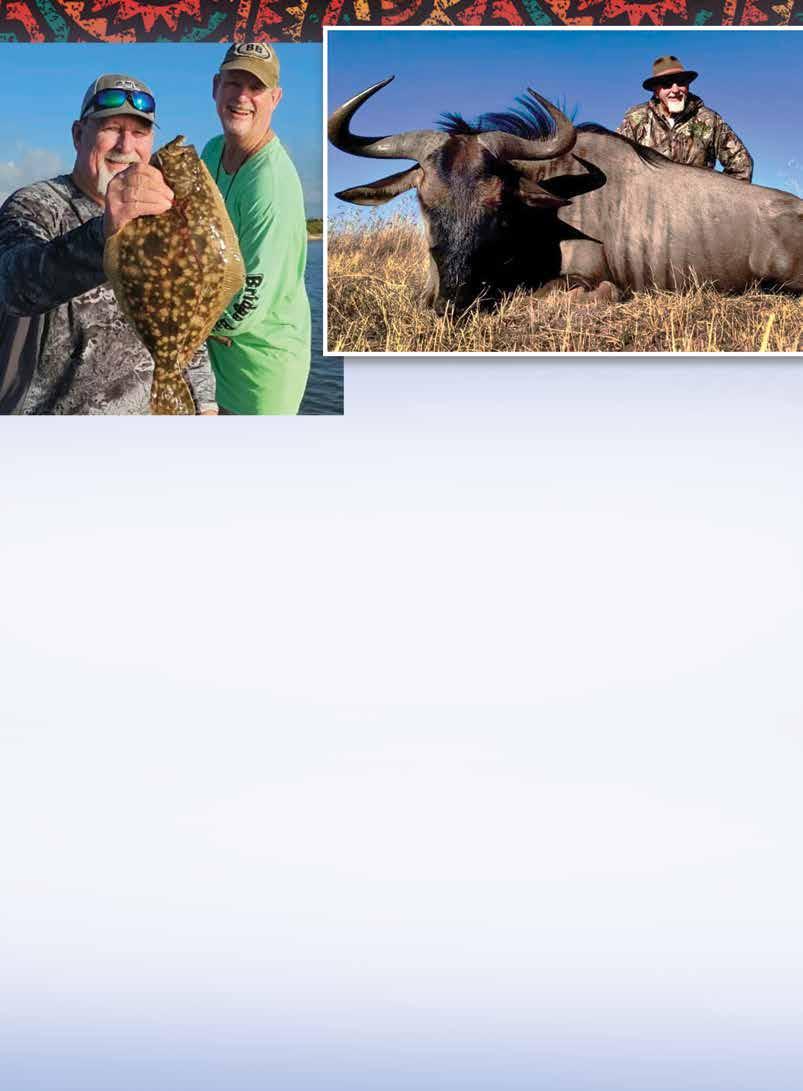
As Paul and Billy enter the retirement phase, they work smarter to fill feeders and using different transportation on the lease becomes efficient. Instead of lifting 50-pound bags of corn and protein, they use a bucket half full of corn or protein and fill the stand and feeder that way. It’s also easier to use cinder blocks stacked by the feeder pen to get in the pen instead of using a ladder.
No shame in taking shortcuts at all. It’s just smarter. Paul bought a Kawasaki Mule for transportation on this lease. It rides much smoother on the rocky terrain, and you can carry more corn and protein.
This year on the hunting lease, they both bagged nice axis and whitetail bucks. When Paul hunted in November, the moon phase was perfect for the days he went. It was a first quarter “beaver moon,” waxing crescent. Billy shot a very nice axis during the same moon phase.
Now that deer season is over, they will be back to fishing in the Texas bays. Paul had an all-weld jon boat, named the Flounder Hounder, before his retirement phase. The owner of the bait camp where Paul launches the boat gave it the name.

He now has a larger J&H bay boat, Flounder Hounder II. He can cover more fishing territory with this boat. It takes a lot less time to get to the Brazos River, one of his favorite areas.
Billy had an offshore boat named AWOL before his retirement phase, but he now has a J&H bay boat, too. You’ll see him fishing in the Bastrop Bay area. The weather should finally be good enough for fishing. Hopefully the freezers will be full of trout, flounder and redfish to go along with the venison. I am sure these men will continue to enjoy each life phase and their longtime friendship.
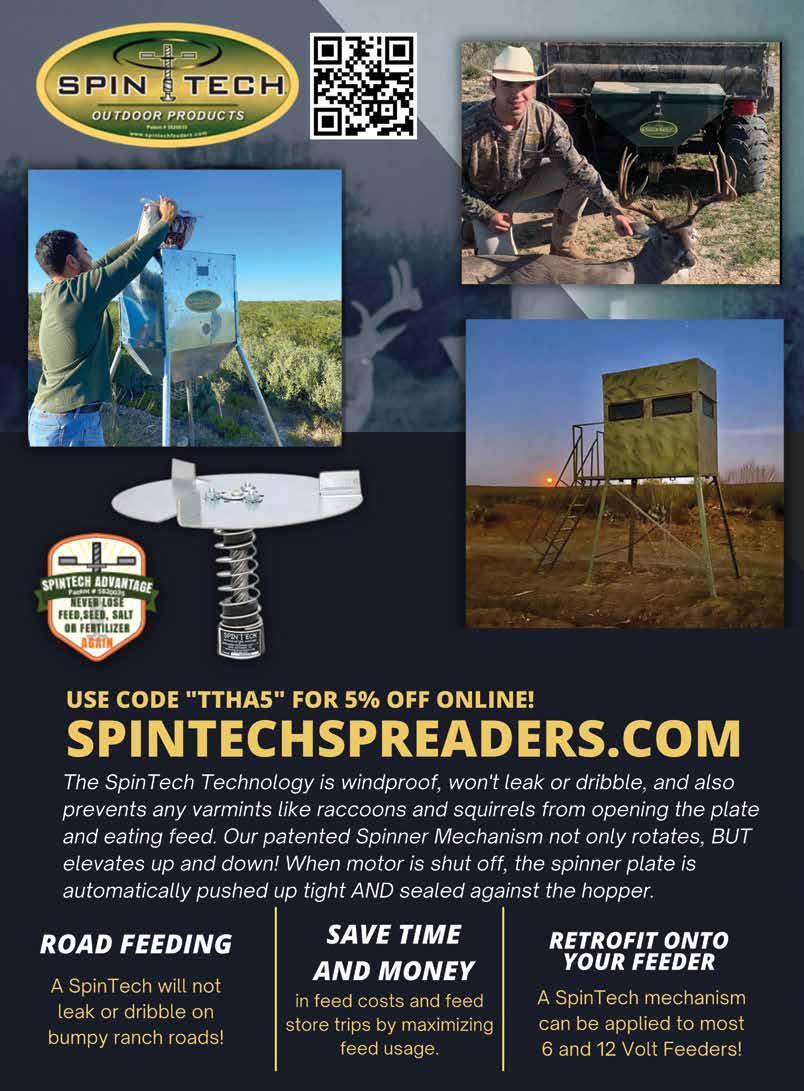
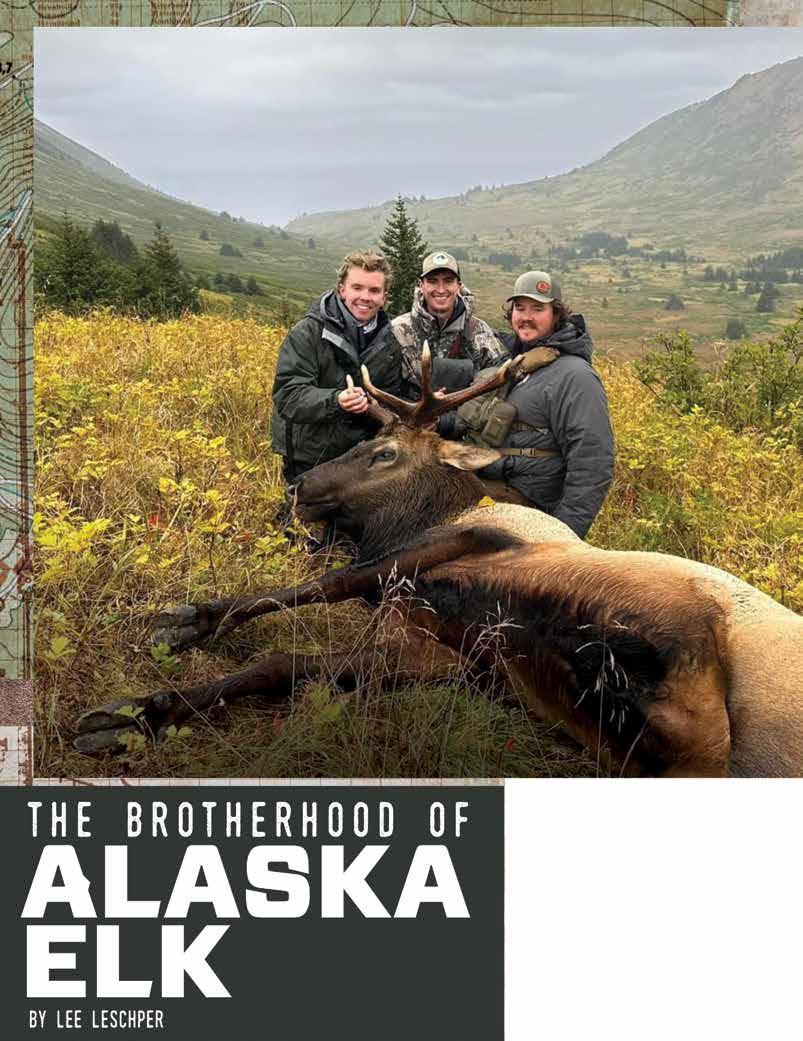
The biggest elk on Earth reside on remote islands in Alaska’s Kodiak Archipelago. The hunting prize is real, but so are the challenges. These Roosevelt elk originated from a transplant of eight calves captured on the Olympic Peninsula of Washington State in 1928 and moved to Afognak Island in 1929. Elk can now also be found on the neighboring Raspberry Island.
The bulls weigh up to 1,300 pounds, dressing out at about 800 pounds and yielding about 500 pounds of the tastiest venison on Earth. Their antlers are the typical 6x6 frame of other elk, but thicker and often shorter.
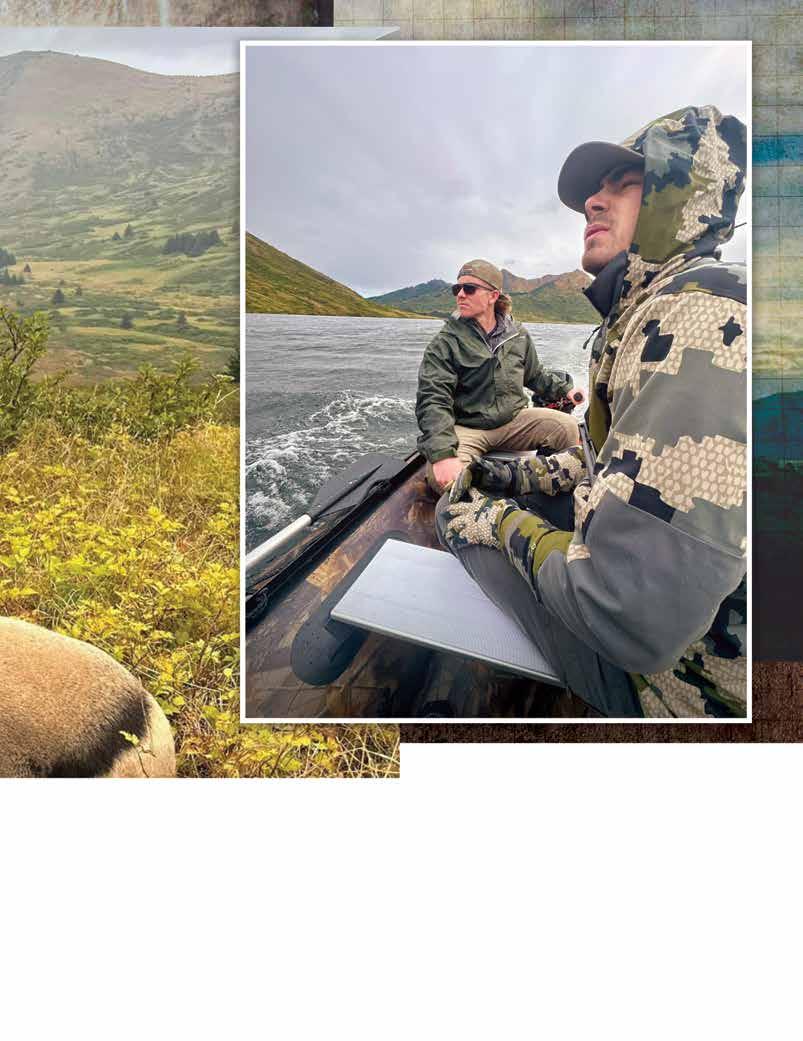
These are remote islands even from Kodiak. Access is by float plane from Kodiak. The elk are far from any air access, and require brutal bushwacking uphill through miles of alder, Devil’s club and 8-foot grass. And then there are the bears. Like neighboring Kodiak Island, Afognak is home to big brown bears, and even if you avoid a mauling, your meat is in jeopardy.
Access to the islands is by boat or float plane. You camp near the beach, then bushwack uphill through dense alder and devils club to find the elk. A light, weatherproof but potent rifle is wise for elk and trouble-making bears. A .300 Win. Mag. as a minimum is hard to beat.
Combined with rugged terrain, the Kodiak weather is wet, very wet, and near hurricane winds. Alaskan brothers Karl and Hans Rodvik defied all those odds when Karl drew an Afognak bull elk tag in 2024. Karl is a maritime officer running one of
the most modern oil drilling ships in the Gulf of America. Hans works for Colorado’s largest utility, doing community relations throughout northern Colorado. “From a very young age we’ve been doing everything in Alaska,” Karl said. “Caribou is our bread and butter each year.”
They wisely chose fellow Alaskans, Sterling Wanamaker, and Justin Befort, to provide moral and meat packing support. Justin is an experienced assistant guide, and Sterling works for an Alaska oil company. Their hunt started with the normal bad Kodiak weather. So instead of flying two days early, they arrived the day before the season opened.
“It was the classic Kodiak weather—blowing 50-mile winds and raining sideways. But we were prepared to be out there for 10 days,” Karl said.
Being prepared only gets you so far, though. Those who have
hunted elk here say Afognak is the most physically difficult hunt in Alaska. “I’d 100 percent agree,” Karl said. “And there’s just so much of this mythical element to it. You’re hunting elk in caribou mountains and you’re just bushwhacking through the gnarly stuff. And then you get one and it’s as big as a moose! And you experience the fog and some insane brown bear encounters. It’s so hard and tough, people think we make it up!”
“Even compared to other Alaska hunting, this is just a different animal,” Karl said. “It’s not popping in the truck and going out to the deer stand. You got to be fully prepared to be stuck out there in the Gulf of Alaska windstorms.”
Flying into their camp site, they did spot elk from the coastline. They were in for a trek to even get to the elk, but they had hopes that a bull might respond to a call.
“Every single person I’ve talked to who had done the hunt, and who had experience with elk in the lower 48 said Afognak elk do not respond to calls,” Karl noted. “They all said just leave the call at home. But Hans had gone on his very first elk hunt down in Colorado with a friend two weeks prior and he had been practicing calling.”
In camp, the day before the opener, the boys decided to explore a bit. “We went out hiking, just bushwhacking, which honestly was quite terrifying because we were walking in head high windy grass. We walked ¾ of a mile from camp and soon we heard a bugle!”
They crept back to camp with high expectations. But the opening morning revealed no elk. After a quick strategy session, they loaded up a packable raft that Karl had brought to motor several miles to the upper end of the lake where they’d
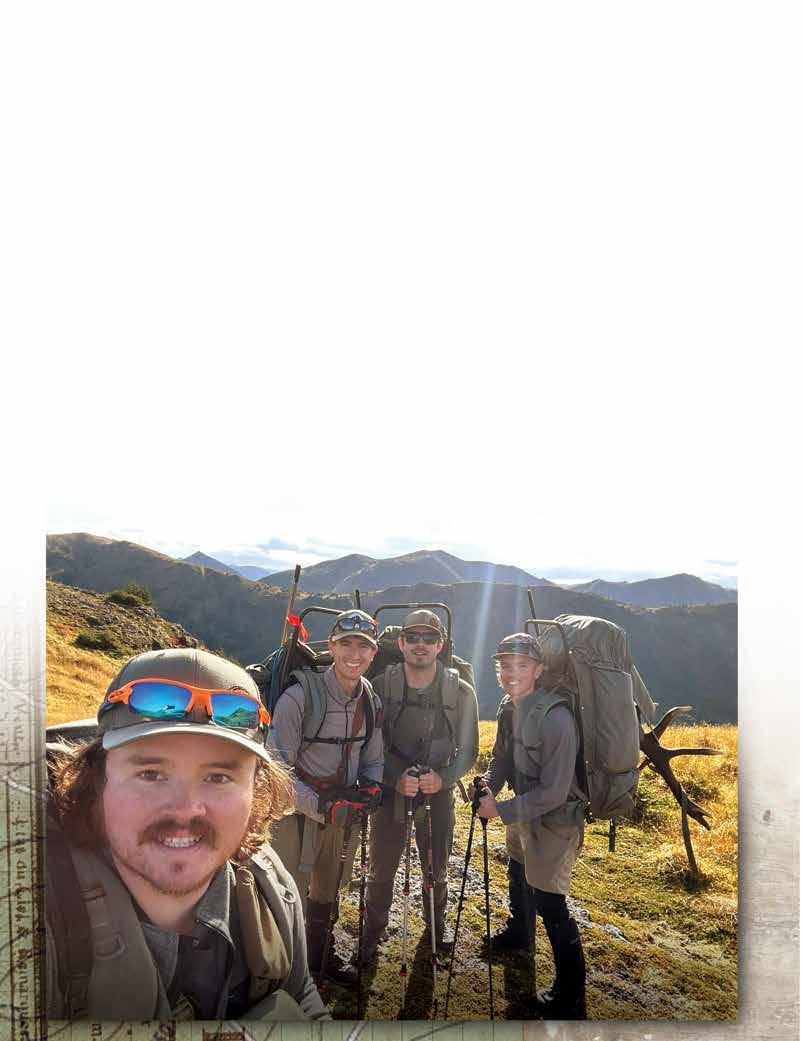
camped. Atop a ridgeline, they were able to glass elk, including a couple of good bulls, but they were miles away through that hellish alder brush.
Karl was eagerly glassing those big bulls and plotting the hike it would take to get into range. While Hans was weighing the prospect of not just getting to the elk but getting a dead elk out of the brush.
“We’re sitting there and suddenly at some distance we hear a bugle!” Hans said. “I tell Karl, ‘Get your stuff. We’re going to go a couple 100 yards down this valley to the same elevation. Justin and Sterling can watch us and watch for the elk.’”
The brothers made their move, then Hans started bugling and cow calling. Within five minutes he got a reply and then saw a bull moving in their direction.
“He was a mile and a half away and coming on a bee line. I just kept a little cow music every few minutes and he just came straight from the valley floor all the way up. There was one small clearing 145 yards in front, and I didn’t have a shot anywhere else,” Karl said. “Hans kept calling. Then all of a sudden, he’s right on top of us. Sure enough, he emerges right from the brush and into that clearing.” Karl wasn’t going to pass an opening day opportunity and readied the trusty .30-06 that had claimed many Alaskan caribou.
“He came into the clearing, gave me a perfect broadside shot, which I took, and he dropped. We got up to him and I was just in disbelief at how big this elk was. It is a totally different experience than coming up to a caribou and yes, the work begins,” Karl remarked.
They could only pack half the meat on the first trip, so Karl
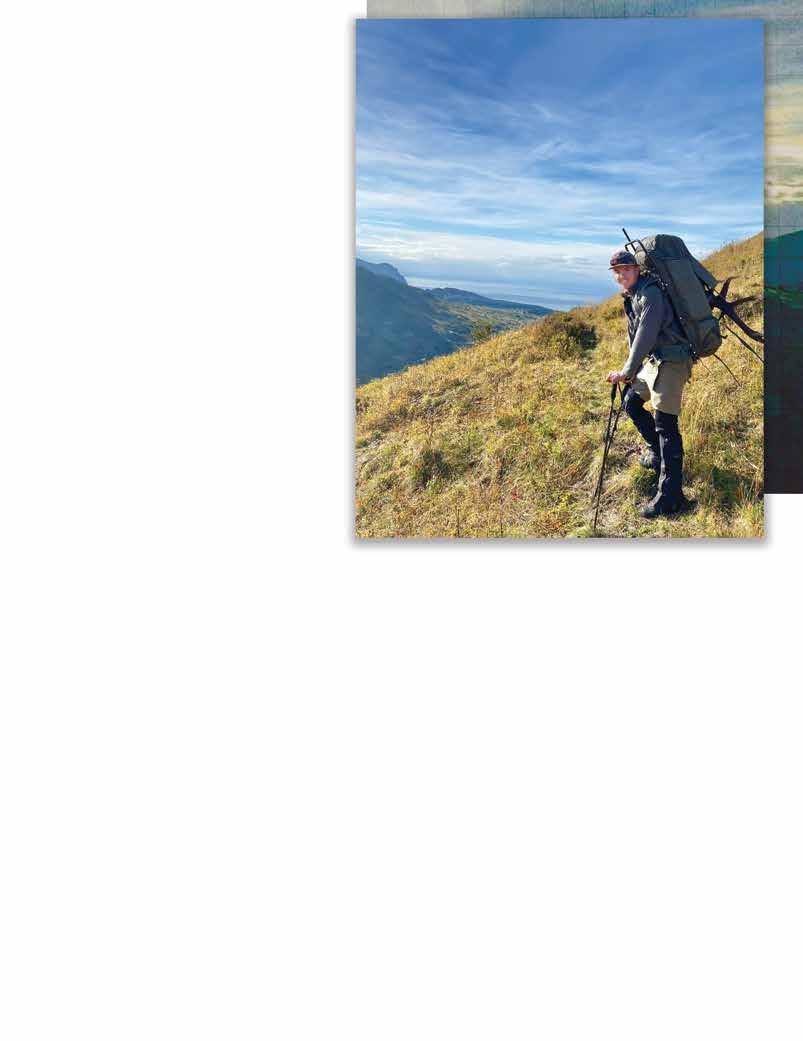
hid the remaining meat bags and antlers in a thick patch of trees, wrapped in a tarp, with hopes it would escape a bear’s attention. Then the real work began.
Karl retorted, “It was by far the most brutal pack out ever, just getting off the mountain. It was completely pitch black.” At the lake, they loaded their raft and crossed five miles of water before entering the black and brushy creek.
“That was the most nerve-wracking part of the hunt. I had to drag the raft upstream, and I felt like I was trolling for brown bears!” Karl said. The streambanks were lined with fresh dead salmon. They got to the upper part of the lake and meandered the entire lake shore to get back to camp at four in the morning.
After hanging the meat to cool, they collapsed and slept until 2 p.m., then headed back for the rest of the meat. Despite lots of bear sign and the gut pile completely gone, the good meat remained undisturbed. They flew home with 515 pounds of elk meat from Karl’s bull.
“This elk is the best meat I’ve ever had. We eat a lot of deer and caribou, and this meat is just a whole other thing,” Karl said. “The obvious question, would we do it again?”
“Absolutely! Absolutely! In the moment you’re wondering what in the world you were thinking, this is the hardest thing ever, but when everything’s all said and done and you’re back and reflecting on it, you can’t wait to do it again!”

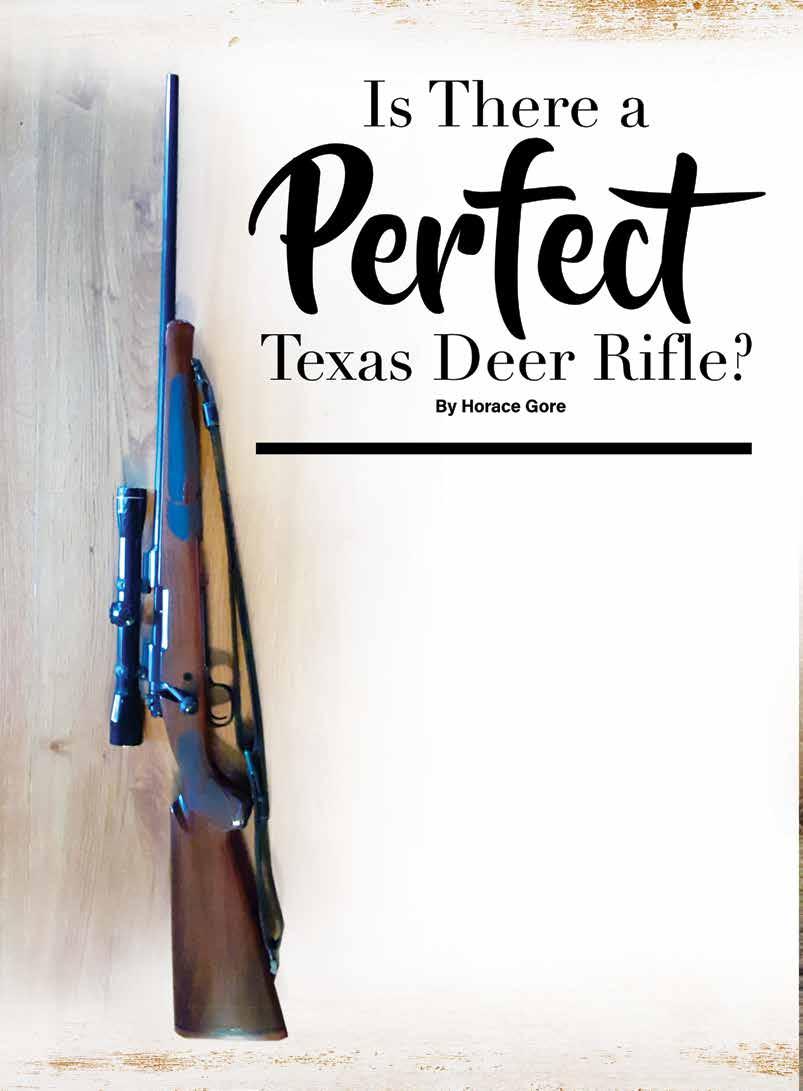
Describing the perfect Texas deer rifle is like describing the perfect Texas woman. It’s practically impossible, so I’ll leave women to Hollywood and write about something that I do know—a rifle that might be perfect for deer in the varied deer habitats of Texas. Of course, most deer hunters have already decided on the rifle of their choice, so we will give these words of advice to novice hunters who are still borrowing a rifle to hunt deer.
I’ll begin by saying a whole host of rifles will kill a deer, from war relic .30-06s to the finest custom 6.5 Creedmoors. But shooting a rifle that fits your style is like dancing with someone who is overly pleasant that you keep returning to. Because most hunters are better off shooting the same rifle on every hunt, and because they are not likely to buy a variety of all the rifles on the shelf, I will try to help with a selection that my long hunting experience has shown to be close to the “best” for Texas deer.
I speak from experience, having hunted deer from Mexico to the bighorns of Wyoming. My deer rifles have included everything from the .224 TTH to the .300 Weatherby Magnum. I’ve killed more whitetails with a .30-06 and .270 Winchester than any other calibers because they are the ones I started with years ago.
For the last 30 years, I’ve had a lot of rifles to choose from, and my choices of late have diverted to some very good medium calibers that don’t ring your bell with recoil, yet put a deer on the ground in a hurry. So, after many years of chasing deer, here are my reasons for selecting the “perfect” Texas deer rifle.
First, a white-tailed deer is a thin-skinned, small animal that is not hard to kill. The key to bringing home the venison is bullet placement. Put a good bullet in a spot where it does the most good, in a vital area that presents a big target.
My experience has shown two places to aim for on a whitetail: the area where the neck meets the shoulders, and midway behind the shoulder. These two areas present a 6-inch target that will put a deer down posthaste. The first will break the spine and the second will destroy the lungs, and neither will mess up much edible meat.
Second, bullet placement comes from practice with a rifle that fits you and is pleasant to shoot. To me, trigger pull is of utmost importance and most rifles
need a little adjustment to get a 3-pound trigger. Stock length is also important to your arm length. If you prefer a recoil pad, the length of pull should give your elbow plenty of bend with the pad. Small hunters should consider reducing the full length of the stock by 1 inch, including the pad, about 13 inches.
Now comes the scope. Most Texans want a variable one, which is fine. The most popular scope in Texas is the 3-9X variable, and the latest variables can be bought to fit your cartridge and bullet velocity. For most shots, you won’t need anything over sixpower, but the extra power is good for viewing your game.
It you use a variablepower scope, be sure to keep the scope power no higher than six prior to any shot. Four power is better. A close-range buck is nothing but hair when the scope is on high power.
calibers of .24 and up will easily kill a Texas whitetail or mule deer. Some are better than others based on velocity, recoil, bullet size, and trajectory at 300 yards, although most Texas deer are killed at less than 100 yards.
The weight of a rifle, coupled with bullet weight and velocity, will determine recoil. Many hunters cannot handle recoil over 15 pounds, which would include the 7mm Magnum, featherweight .30-06 and .270, and all of the .30 Magnums. All are good for deer, but some will cut a rick of wood or knock your cap off while killing the deer.
“… a white-tailed deer is a thin-skinned, small animal that is not hard to kill. The key to bringing home the venison is bullet placement. Putting a good bullet in a spot where it does the most good, in a vital area that presents a big target. My experience has shown two places to aim for on a whitetail: the area where the neck meets the shoulders, and midway behind the shoulder.”
There are several calibers very good for deer and don’t have the heavy recoil. Such calibers are .243/6mm, 7x57 Mauser, 7mm-08, .257 Roberts, 6.5 Creedmoor, and .308, to name a few. All of these calibers are good for deer and are pleasant to shoot, which allows for proper bullet placement.
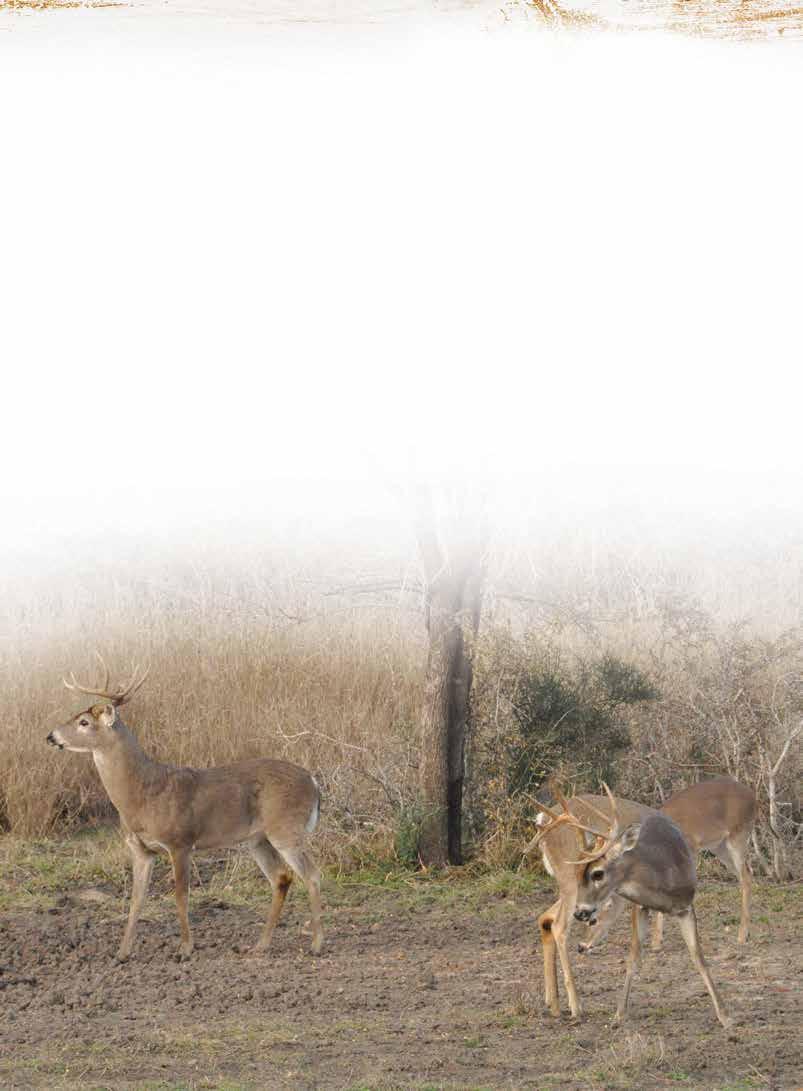
Southpaws have less selection in rifles. Ruger and a few other commercial rifles have a top thumb safety. Remington makes a left-hand rifle. If you shoot left-handed, be sure and select a rifle that fits you.
Now we get to the better calibers for Texas deer. Most rifle
Barrel length is important in a deer rifle. As a rule, most good deer rifles will sport a 22- or 24-inch barrel. Anything less will cut bullet velocity about 50 feet per inch. The better rifles will shoot a bullet close to 3,000 feet/second and this means no ultra-short barrels.
Although the 7mm-08 may be perfect, a key to bringing home the venison, according to the author, is practicing with a well-fitted rifle.
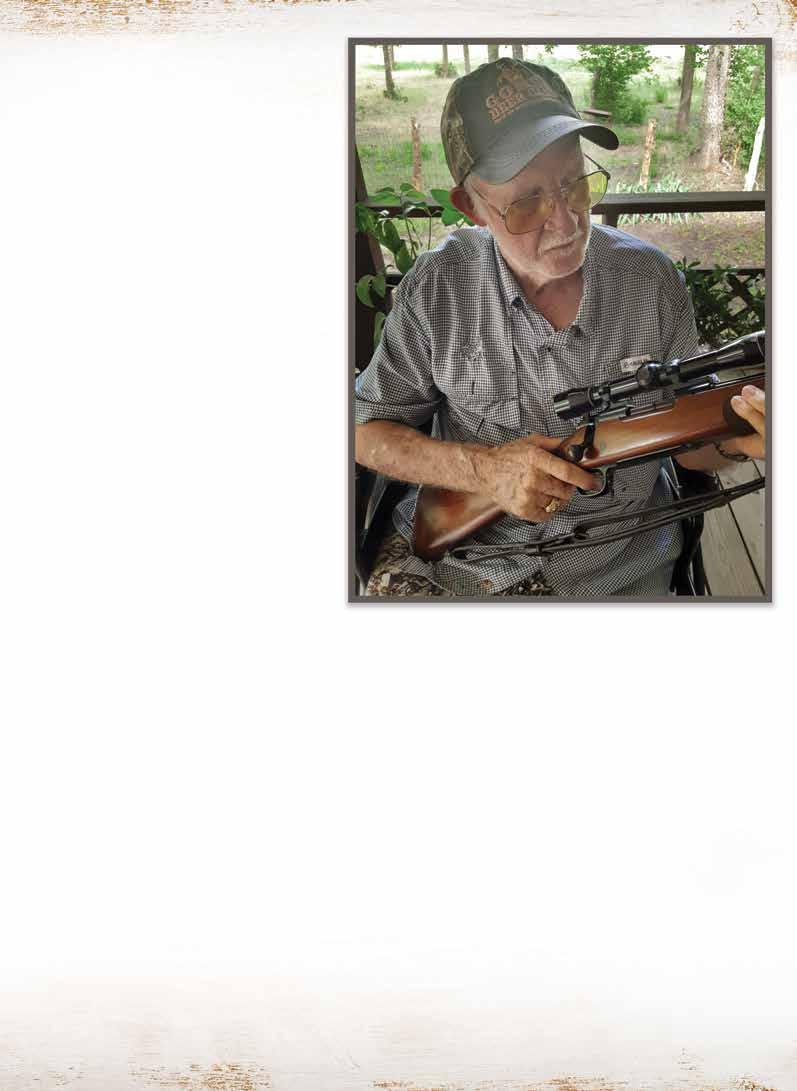
Bullet selection is important for deer hunters. In the light to medium calibers, bullets in the 100- to 140-grain weight are best. In the .30 calibers, 150-grain bullets are best. The bullet needs to open quickly after penetration. Today’s deer hunter has a good selection of bullets, so any good bullet of the suggested weight should do the trick.
We’ve discussed various points to consider when buying a Texas deer rifle: bullet placement, practice with a well-fitted rifle, scopes, calibers, recoil, and barrel length. Now, it’s time to put all this together and chose the “perfect” Texas deer rifle. We will consider all of the features listed above.
My choice of a “perfect” Texas deer rifle would be any of several makes and models of bolt actions with 22-inch barrel. My choice of caliber is the 7mm-08, with a 3-pound trigger, topped with a 3-9X variable scope with crosshairs, kept on four-power.
I would sight the rifle in 2½ inches high at 100 yards to shoot on the crosshairs up to 200 yards. The rifle would weigh about 8¼ pounds and have an adjustable sling. I would shoot 139- or 140-grain rapid expanding bullets at 2,900 fps velocity with 12 pounds of recoil. Two of the best are the Barnes TSX and the Hornady SST. The Remington Core-Lokt comes in a close second.
This selection of the “perfect” Texas deer rifle would be good for any hunter who is after Texas whitetails in all situations, as well as West Texas and Panhandle mule deer. In the hands of a good shot, and with proper bullets, such a combination of rifle, caliber, and scope would also be good for pronghorn, elk, exotics, aoudad, wild hogs, and most anything else that you would find in Texas.
My daughter Donna has about 12 Texas whitetails to her credit, taken mostly in Goliad and Gonzales counties. She hunted for years out of Al Brothers’ camp near Berclair, using a Super Grade Winchester Model 70 in .243. She is a crack shot, and all of her bucks have been one-shot kills. Her ammo for the .243 was a handload with 100-grain Nosler bullets.
I thought that Donna would never part with her Winchester .243, but on a hunt in Gonzales County, I suggested she use my 7mm-08. The Winchester Featherweight had the same trigger pull, the same safety, and the same scope as her .243, so she took the 7mm-08 to the blind. She was shooting handloads with 139-grain Hornady bullets.
That hunt ended with a phone call from Donna. She said, “Daddy, come get me. He’s a pretty good eight-point with long brow tines.” When I got to the blind, she stood over her buck, looking at the rifle with its fine checkering and stock design. “I like this rifle. That buck dropped in his tracks,” she said. “I think I want to keep this 7-08, too. It’s a perfect deer rifle.” She kept the rifle, and killed her last four bucks with it.
Awhile back, I sat on the porch of her house, looking out over the pasture toward a creek. At about 100 yards, a coyote stared in my direction, siting on his haunches. I had heard Donna talking about the coyotes catching the chickens and that old “song dog” was looking for a laying hen.
I called to Donna and said, “Bring your rifle and kill this chicken-eating coyote.” I knew she kept the 7-08 loaded in her office. It didn’t take her long to get to the porch with the rifle, and get the cross-hairs on the coyote. The rifle went boom and the coyote dropped with a rock. Donna’s “perfect” deer rifle is also perfect for coyotes.
Even though the .243 is good for Texas deer, I doubt Donna will ever use it again, as long as she has her 7-08. It shoots like a dream with a 3-pound trigger and four-power Leupold scope. —Horace
Gore
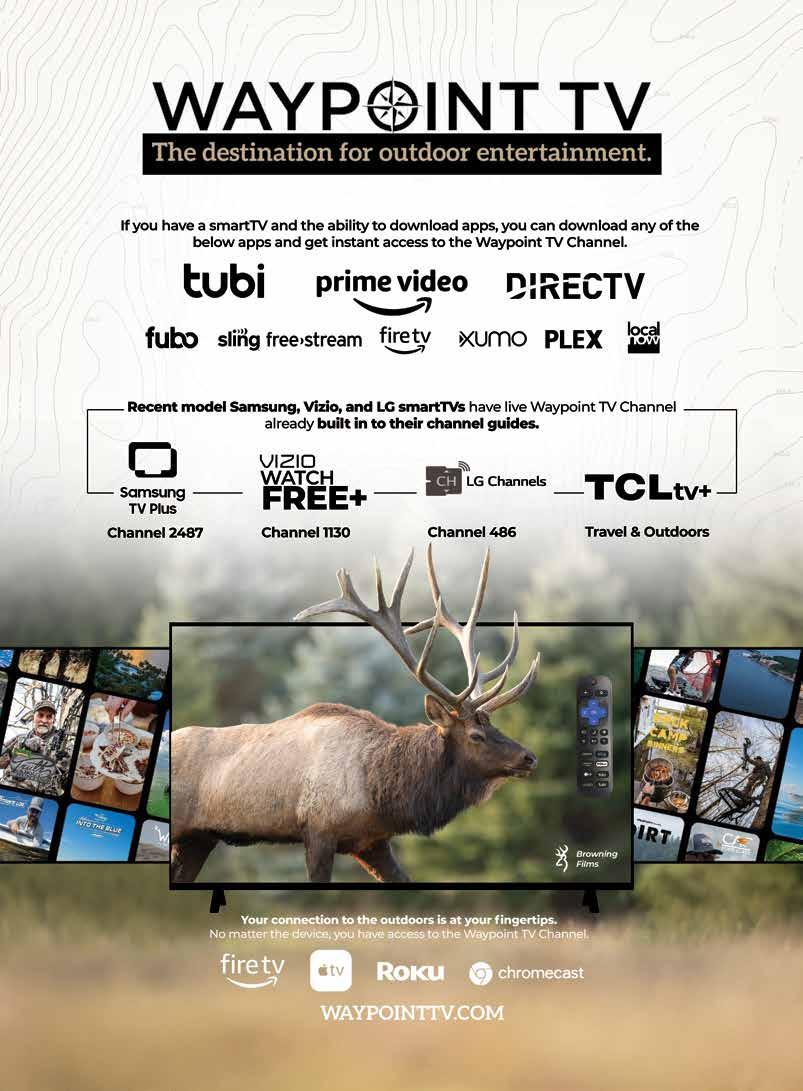
The big Panhandle whitetail drifted in from the edge of the creek bottom at sunset. The cottonwood leaves were lit up like flakes of gold in the slanting gleam. Even in the fading light, the big buck was easy to identify. I recognized his heavy, main-frame nine-point rack with long tines as sure as if he were wearing a name tag. When he

turned broadside at 18 yards, the string came back on my BowTech bow and my feather-fletched arrow blasted through the ribs. The mature buck went down only 50 yards later.
I shot that fine 157-inch buck on Oct. 26, 2007. I had multiple years of history with him. He was often a vampire in September and early October, but by later
in the month he would start to show up in daylight. On that afternoon, I waited for the right wind direction and made a calculated effort to sit at that tripod stand specifically to see him.
Tips for success
It starts in September. Fill feeders, set blinds, hang trail cameras and scout from
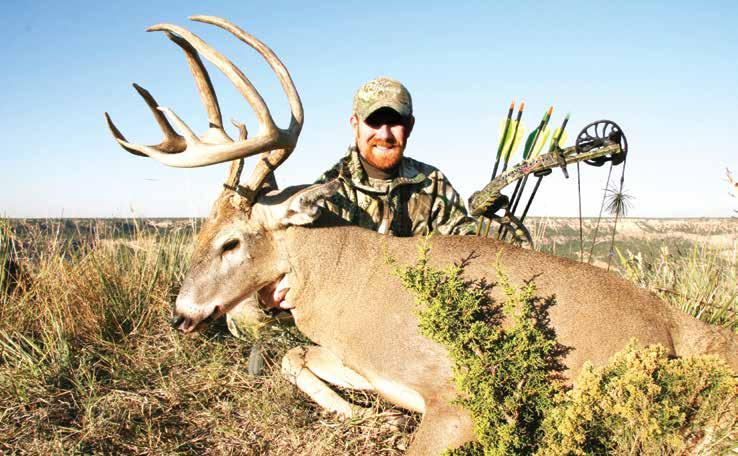
This is the big nine-point mentioned in the opening paragraphs. The author got this buck on Oct. 26, 2007.
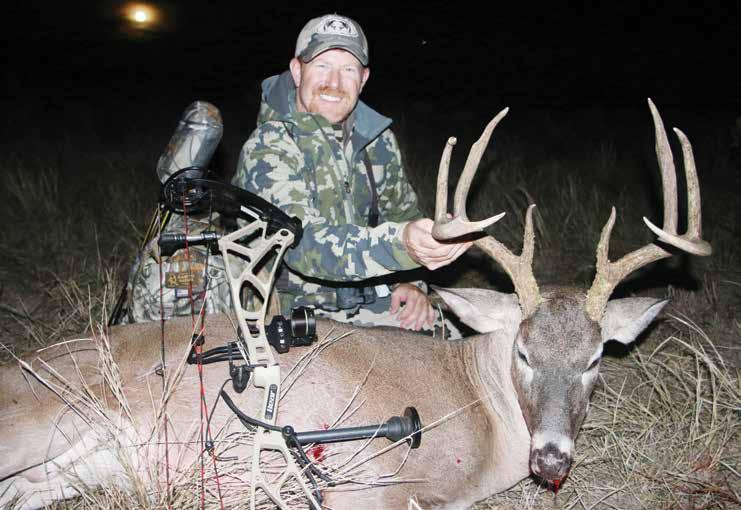
afar with big optics. Early scouting will show where bucks are spending their time when archery season opens. Looking through my records, out of 35 Pope & Young whitetails I’ve entered, 14 of those were arrowed in October—along with 11 in November, seven in December, two in January, and one in February.
Some guys whine and say, “October is too unpredictable. I’ll save my hunting days for colder weather and rutting bucks in November.” Despite the hardships like warm temperatures, nocturnal movement, too many bugs, rattlesnakes or whatever the excuse might be, I’m convinced scouting early and hunting October is worth it.
Two time frames stand out for the best odds of taking a mature buck in October: the first and the last of the month. At the first of the month, bucks are often still in bachelor herds. They have not been hunted since last

year, so their guard is down. They can be predictable at food sources or waterholes.
Because of warm weather, most of their movements are often at last light or in the dark. If I know from trail camera images that my target buck is only visiting my blind after dark, I don’t waste time sitting there. Odds are too high to possibly educate him, bumping him on the way out of the blind in the dark. Instead, I keep monitoring the area until he shows a tendency to move in shooting light. Only then will I attempt a sit at that location.
Another consistency over the years has been afternoon sits. In the mornings, I feel like the odds are too high of bumping deer in the dark on the way to the blind. So, I prefer hunting afternoons in October. In the after-
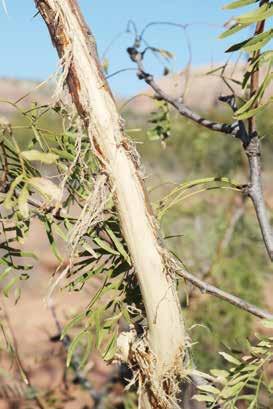
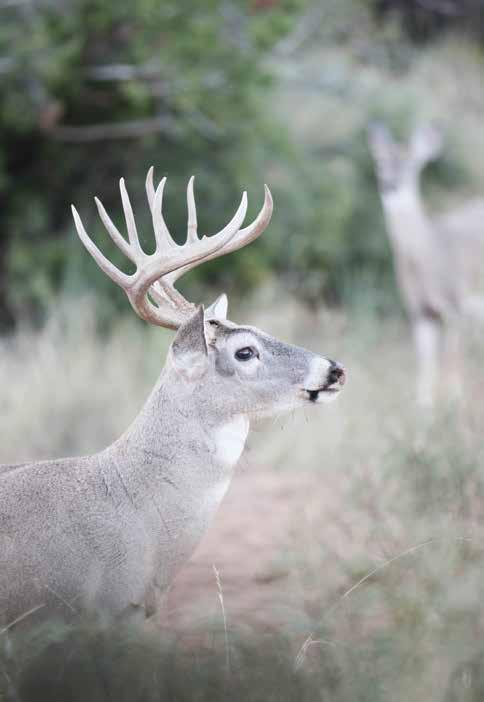
noon, it’s easier to access a blind without bumping deer. Out of 14 P&Y bucks I’ve arrowed in October, 10 were taken in the afternoon and only four were taken in the morning.
The second time frame is the last week of the month. In the Panhandle, I notice a spike in fresh rubs starting in late October. A concentration of sign like multiple rubs or scrapes along a game trail is an easy invitation on where to set a blind or ladder stand. In late October, weather patterns start to shift from hot to cold.

Also, bucks enter the pre rut with increased daylight movement. I become a daily weather watcher in October. Any time a storm or a cold front is predicted with a significant drop in temperature, I check the wind direction and go hunt. Late in the month, bucks start to respond better to calls like grunts or rattling antlers. Keep these tools close and ready.
I recall an encounter with a fine 10-point on Oct. 28, 2010. I glassed the big-bodied buck walking down the creek
The author points out that if you don’t get your buck in October, the time spent evaluating sign, setting blinds or watching deer isn’t wasted. He has arrowed multiple bucks in November or December because of what he learned about those bucks’ movements in the month of October.
channel at sunset. He was 100 yards away. Grabbing my grunt call, I let out three deep, loud grunts.
The buck stopped, stared my direction, then came at a steady walk, licking his lips, his back hairs bristled up. I arrowed that 150-class buck at under 20 yards with my Hoyt bow as he was circling to the downwind side of my tripod. Colder weather and the urges of the rut spelled success that day.
Last year, I sat in a short tripod stand near a Panhandle river. It was a crisp, cold day in late October. At sunset, I caught a glimpse of a buck moving through the mesquites behind me, nose low to the ground like he was trailing a doe. I tickled the rattling antlers I had hanging beside me for only about 10 seconds.
I barely got the shed antlers hung up and I heard footsteps coming to my left. I snapped my release on my Mathews Lift bow. An eight-point with a kicker on his right G-2 stepped out at 15 yards, his head swiveling back and forth, looking for the fight. I guessed the 125-inch buck’s age at 3½ years old and let him walk. No doubt having a grunt call and rattling antlers can produce encounters on cruising bucks in late October.
Even if you don’t get your buck in October, the time spent evaluating sign, setting blinds or watching deer is hardly wasted. I can think of multiple bucks that I arrowed later in November or December, mostly because of what I learned about that buck’s movements in October. Think of deer season as a marathon, not a sprint. Pace yourself and calculate each sitting in a blind.
Also, don’t hunt any one location too much or you’ll risk educating the deer. Texas bowhunters get a month-long, archery-only head start before rifle season opens. October can be challenging, but I’m convinced it’s worth it. Make October count!

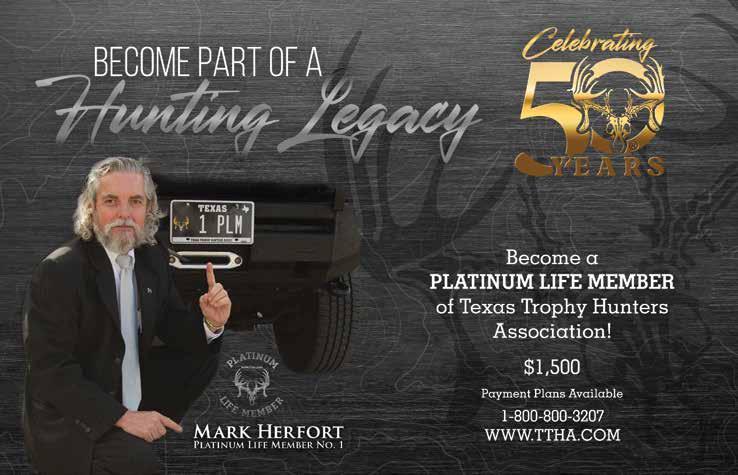
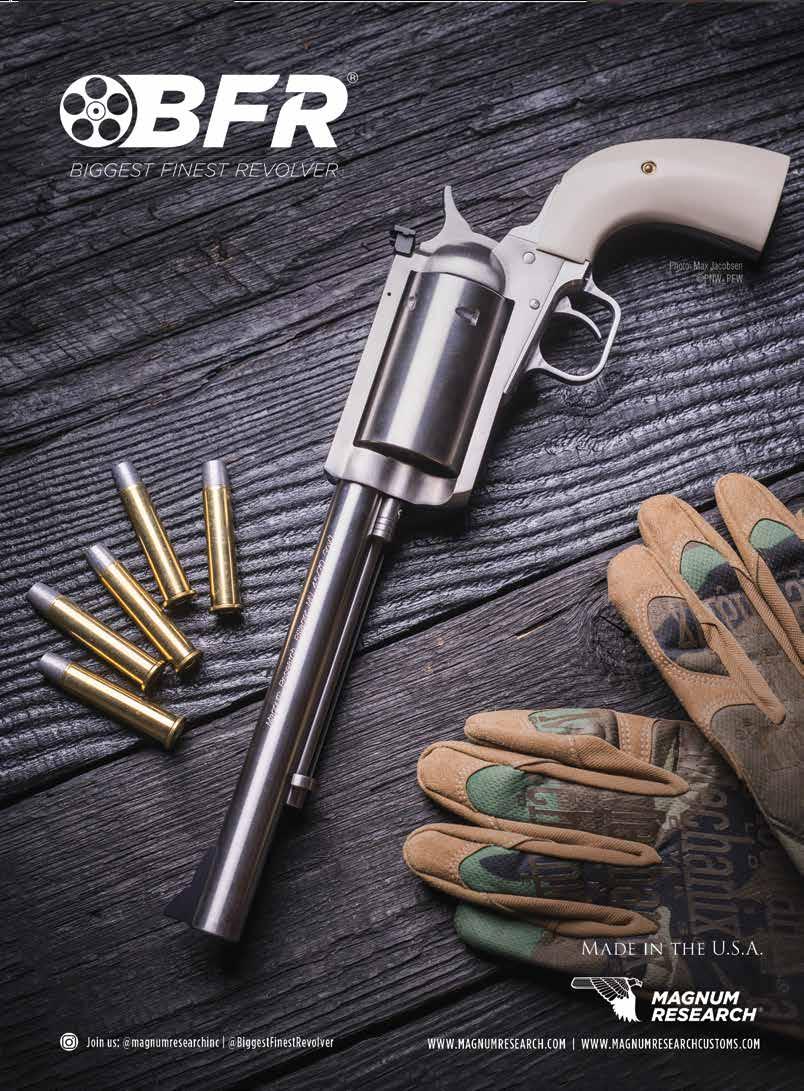
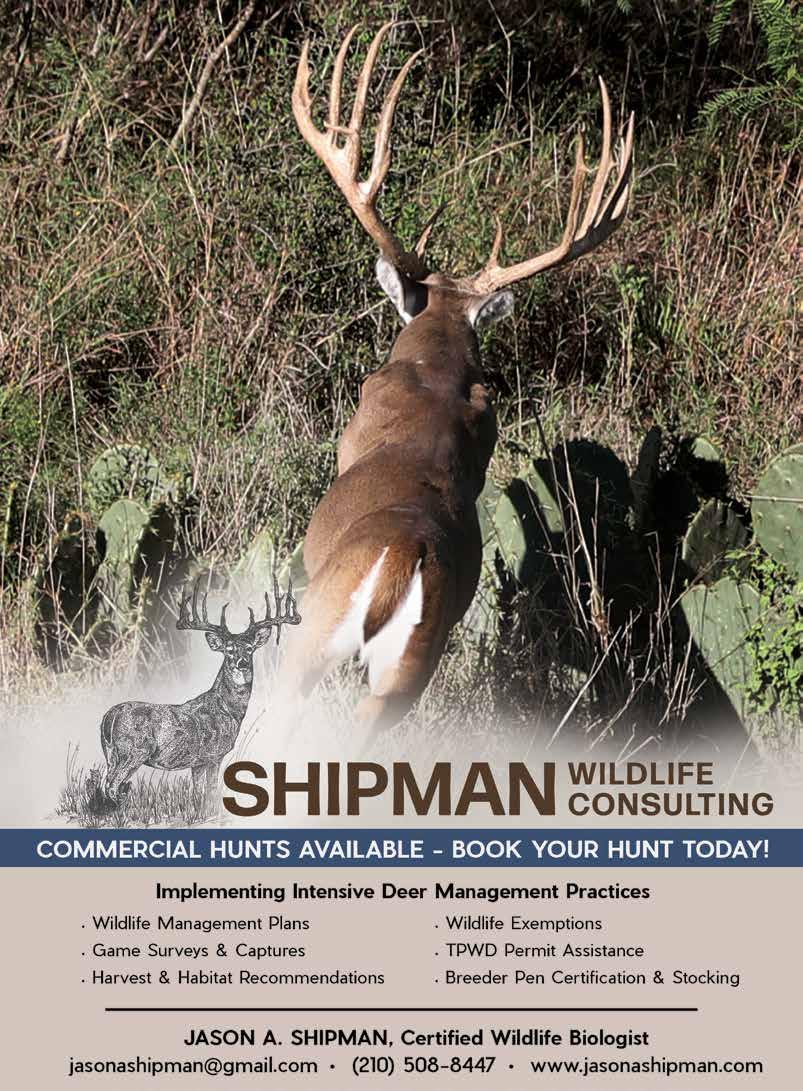

By Heath Siegel
After an incredible experience last summer at the South Texas Buckskin Brigade, I knew I wanted to return to the Brigade life. My first time as a cadet at Buckskin taught me so much about wildlife, leadership, and conservation that I couldn’t pass up another opportunity to grow. I had applied to serve as an assistant herd leader at South
Texas Buckskin Brigade in June, but I also wanted to challenge myself further. That’s why I decided to take on the role of cadet once more, but this time at the Coastal Brigade camp at Sea Star Base in Galveston in July, where I would dive into the world of marine conservation. The camp was packed with educational opportunities, adventure, and
a true sense of camaraderie and team building. We weren’t just campers—we were cadets responsible for learning and applying the skills taught throughout the week. Despite some heavy rains, camp leaders kept us engaged as we dove headfirst into a variety of topics that covered everything from fish identification and habitat conservation to the critical
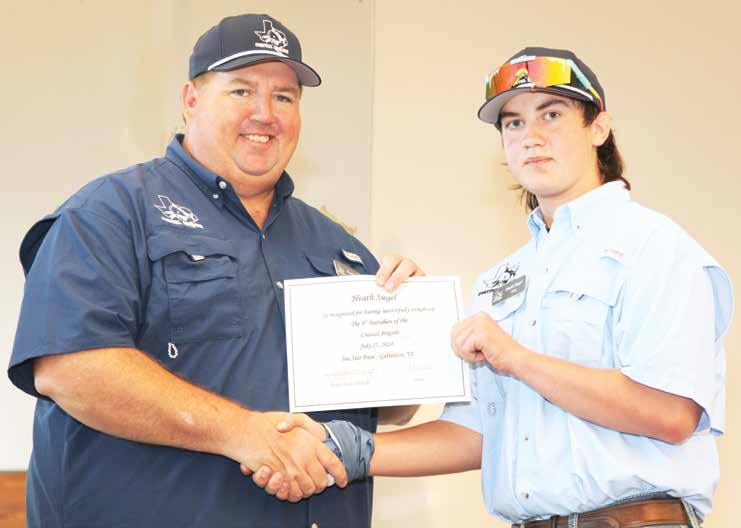
aspects of boating safety and fishing regulations. It wasn’t just classroomstyle learning. Everything was hands-on experience, and every activity connected directly to real-world conservation issues that affect the Texas coastline and aquatic ecosystems.
One of the biggest highlights of the week was a full-day trip to the Sea Center in Lake Jackson. We had an insider’s look at the inner workings of the facility, where we learned how fish hatcheries play a crucial role in maintaining the balance of marine ecosystems. We saw firsthand how important it is to protect and replenish fish populations, a delicate process that requires both science and passion.
Seeing the hatchery operations made me appreciate the behind-the-scenes efforts that go into managing natural resources, and it was fascinating to understand how it all ties back to conservation efforts across the state. Because I live fairly close to the Sea Center, I had been there many times before. But this trip was so much more educational and taught me so much more about their everyday workings.
But the camp wasn’t all just about learning. We had fun along the way, too. Each cadet was placed in a “school,” a team that would work together on various challenges and earn points throughout the week. These challenges ranged from practical skills, like knot-tying and casting rods, to academic quizzes testing our newfound knowledge of marine biology and conservation. My school, the Tidal Titans, took these competitions seriously—but in the best possible way. The friendly competition helped us bond and grow as a team, and by the end of the week, our hard work paid off. At graduation, the Tidal Titans earned the overall Best School title. Winning that title was a special moment for all of us. It wasn’t just about the points—it was

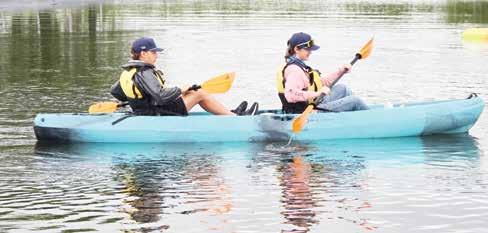

about how much we had grown together as a team and how we learned to rely on each other’s strengths.
As I look back on this amazing experience, my focus is on completing my Book of Achievements. This is a personal record of everything I accomplished and learned since camp, and it’s a crucial step in my goal to return to Coastal Brigade next summer, but this time as an assistant leader. I know my time as a cadet has prepared me to take on this leadership role, and I’m excited about the possibility of helping other young people experience the same growth
Texas Brigades is a conservation-based leadership organization which organizes wildlife and natural resource-based leadership camps for participants ranging in age from 1317. Its mission is to educate and empower youths with leadership skills and knowledge in wildlife, fisheries, and land stewardship
Camp challenges ranged from practical skills, like boating safety and knottying, to academic quizzes testing the campers’ newfound knowledge of marine biology and conservation.
and adventure that I did. I also hope to return to South Texas Buckskin Brigade as a special agent and may just apply as a cadet at a third camp!
For any teen, ages 13-17, who is passionate about wildlife conservation or simply loves fishing and the outdoors, I highly recommend Coastal Brigade. It’s not just fun and educational—it’s life-changing. You get the chance to meet like-minded peers, learn from top-notch instructors, and develop skills that you’ll carry with you long after the camp ends. The friendships, the knowledge, and the memories I made will last a lifetime.
to become conservation ambassadors for a sustained natural resource legacy. Texas Brigades hosts nine summer camps throughout June and July. The application period for camp runs Nov. 1 through March 15 of each year. Visit texasbrigades.org or call 210-556-1391 for more information.
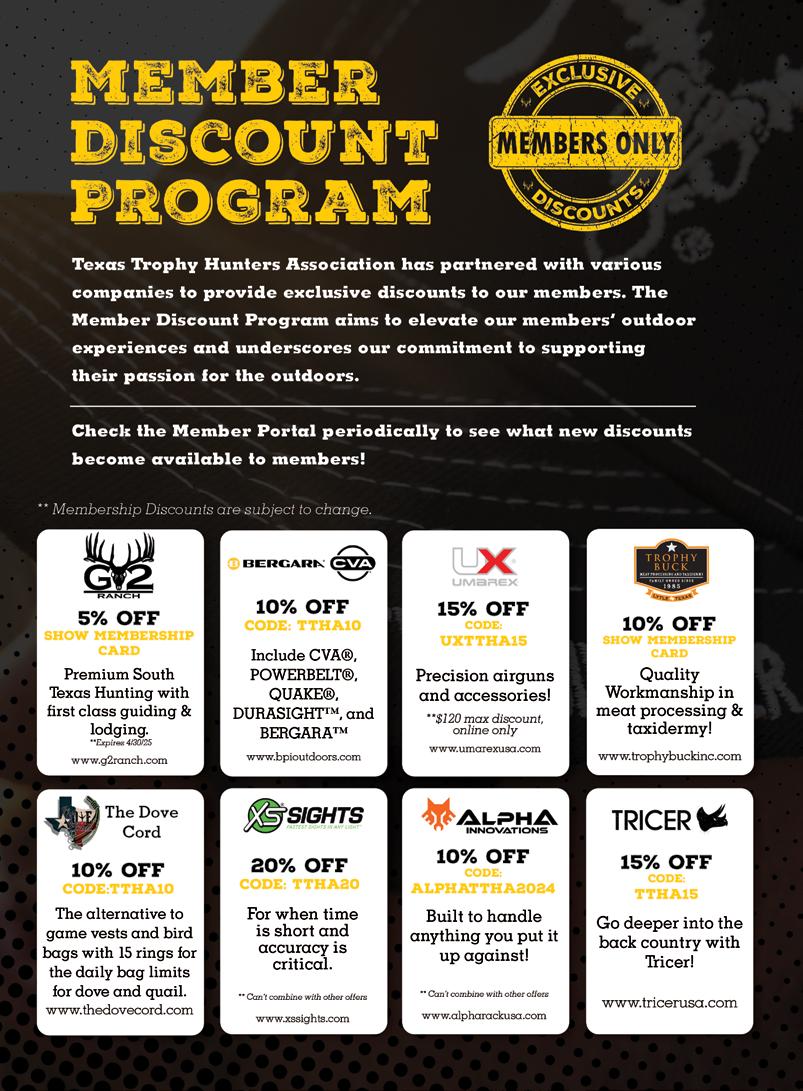
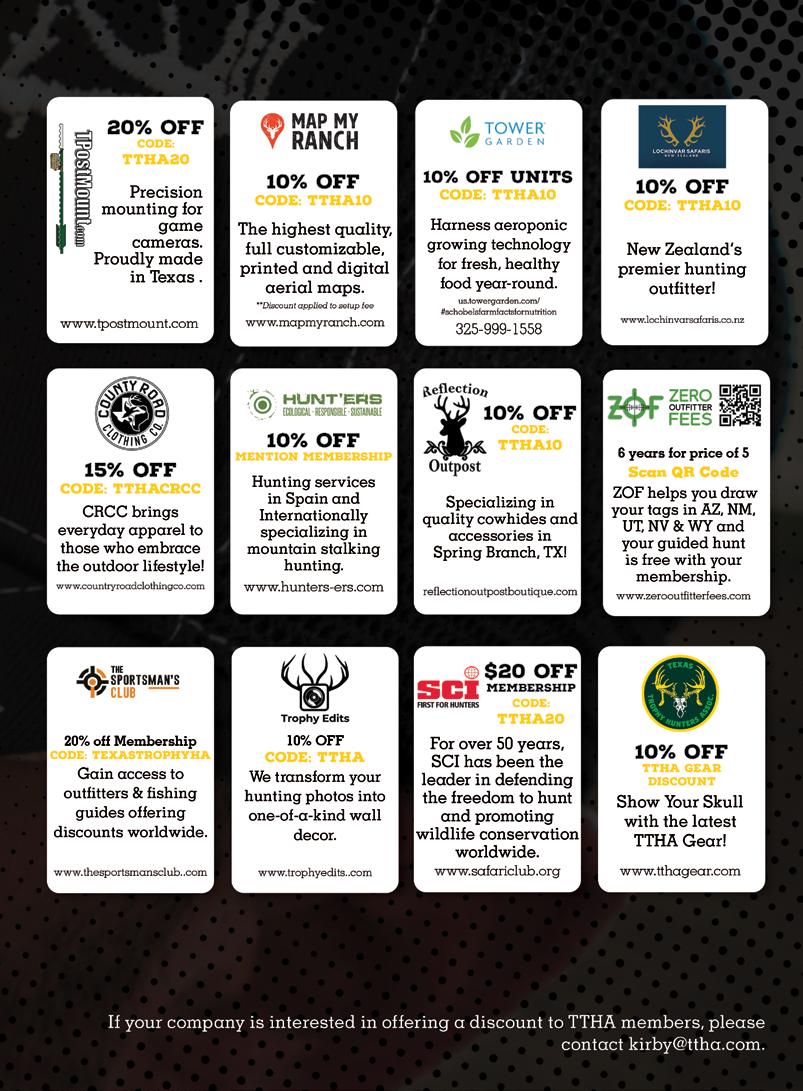
The Gus Engeling Wildlife Management Area offers much diversity of the Post Oak Savannah meeting northeast Texas bottomlands with swamps and bogs.
Nestled in the Post Oak Savannah ecoregion in northwest Anderson County lies the 11,094-acre Gus Engeling WMA (GEWMA). Purchasing began in 1950 with it originally called the Derden WMA for Milze L. Derden, the majority owner of the land sold. In December 1951, the first biologist assigned to the area, Gus A. Engeling, was killed by a poacher, resulting in renaming the WMA in 1952.
Only 21 miles from Palestine, GEWMA primarily functions as a wildlife research and demonstration area. Aside from the post oak uplands with large oak motts and grassland prairie, moist soils host rich hardwood bottomlands (floodplain) covering 2,000 acres.
Jeffrey Gunnels serves as project leader for the Middle Trinity River Ecosystem Project. Not only does he
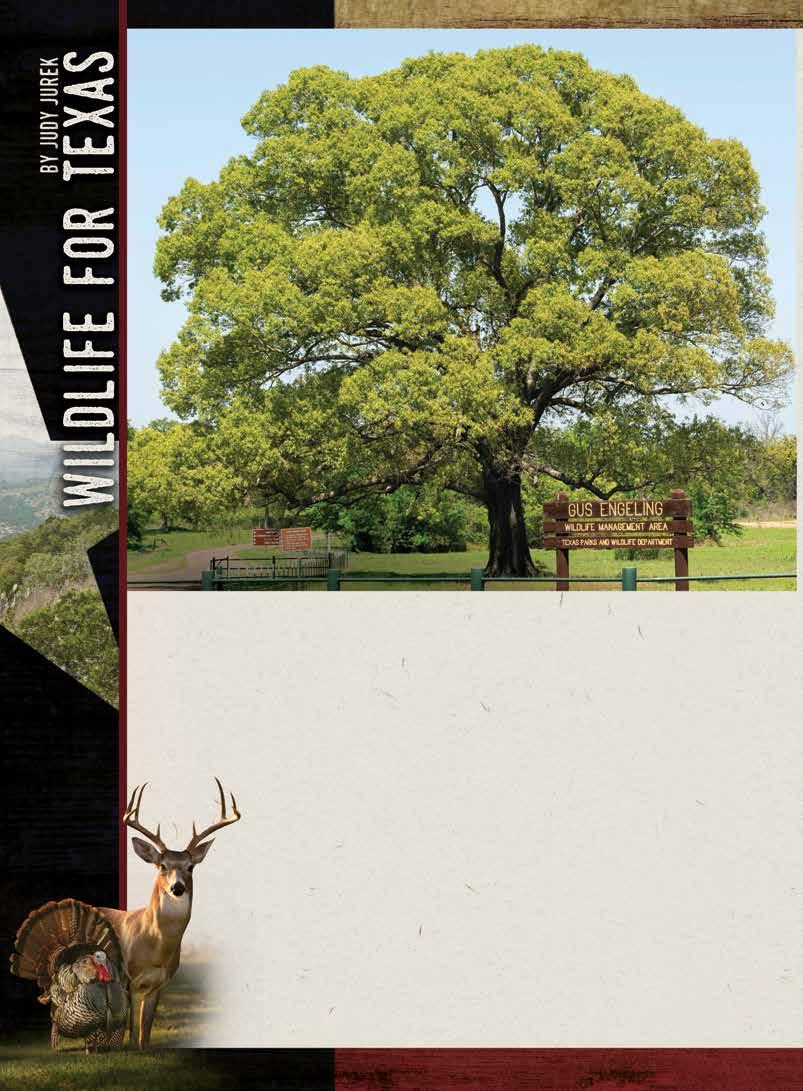
cover GEWMA, he’s the man in charge of Richland Creek, Big Lake Bottom and Keechi Creek WMAs, as well as the newly established Trinity River WMA.
Gunnels has spent his entire 30-year TPWD career here.
“It’s an amazing place,” he said. “Catfish Creek’s undisturbed creek system with natural old growth bottomland hardwoods was designated a National Natural Landmark in 1983 by the National Park System. The sphagnum peat bogs covering 300 acres offer unique, rare habitat for many species including pitcher plants.”
“We’ve done many long-term projects; some continue today. Restoring Post Oak Savannah grasslands as it was in the 1800s began in 2006 encompassing 2,500 acres. High intensity, low frequency grazing, similar to foraging bison, will soon be introduced. GEWMA, like many other WMAs, follow Aldo Leupold’s axe, plow, cow, fire, and gun management practices as they work well.”
Spring fed Catfish Creek is the main waterway winding through GEWMA’s entirety. Long Branch
and Short Branch creeks, also spring fed, flow into Catfish offering wetlands, marshes, swamps, and the aforementioned sphagnum peat bogs. Natural watercourses traversing throughout create excellent waterfowl and other wildlife habitat.
GEWMA’s flora and fauna consists of over 1,000 species documented across its bog communities, bottomlands, savannah areas, and grassland prairies. Large portions of acreage remain undisturbed by agriculture other than grazing. This WMA serves as a training ground for biologists with birders and hunters extensively using it when permitted.
Over 150 bird species have been authenticated at GEWMA including both migratory and resident aerial avians. Eastern and Rio Grande wild turkeys call this area home as do quail. Restoration efforts have helped these populations. Fifty-seven kinds of fish alongside 54 different reptiles and amphibians exist here. Recorded mammal species number 57 with whitetail deer, feral hogs, beavers, fox and gray squirrels, and rabbits the most often seen. Raccoons, skunks, coyotes, bobcats, opossums, armadillos, and nutria are common.
“We control feral hogs with an active trapping program averaging removal of 500 pigs yearly,” Gunnels said. “We tried public feral hog hunts but it wasn’t enough. Hogs are terrible on ground nesters such as turkey and quail. In addition, they travel riparian corridors doing much damage to wetlands.”
Gunnels continued, “We maintain robust trapping efforts, using large baited traps with remote cellular activated triggers. By trapping entire sounders, we’ve witnessed a ten-fold increase in removal. It’s made a huge difference as it benefits all wildlife. We host trapping demonstrations for landowners and managers showing them documented results.”
University based research has studied factors affecting whitetail deer fawn survival, comparisons of feeding habits between deer and cattle, and site-specific competition between deer and feral hogs just to name a few. Diet and genetics of inland alligators, effects of selective habitat clearing as well as controlled burning to improve wildlife woodland habitat are past studies conducted.
Current ongoing research has Texas A&M practicing quail restoration while Texas A&M AgriLife has water and soil
scientists involved in water infiltration studies. Post Oak Savannah grasslands restoration continues. Gunnels said timber removal began in 2010 with herbicide and fire, while soil samples revealed a great seed bank of dormant native grasses.
“We’ve discovered an active prescribed burn every two to three years, depending on which area, is essential to manage the grasslands and create seed germination.” Gunnels explained, “With an average annual rainfall of 45 inches, woody plants come back quickly and must be controlled.”
When it comes to hunting, GEWMA has much to offer. Waterfowl hunting draws the most entries, as this is a duck hunter’s paradise. Gun Deer Either Sex, one of five deer hunting categories garners almost as many entries. Gunnels said 7-8 whitetails qualify for the Texas Big Game Awards every year scoring in the high 150s to low 160s B&C. Overall deer average is 130-140 class.
With a chuckle, Gunnels said, “Some hunters still shoot the first legal buck they see, while for others it may be the biggest they’ve ever seen or killed. Lots of bucks in the 3-4-year-old age class are taken; we’re not managing for trophy deer. We average 20-25 quality bucks per year, about one mature buck per 500 acres.”
While deer hunting is popular, so is squirrel hunting along with furbearer/predator hunting. In the 2024-2025 season, GEWMA offered eight squirrel hunts of varying lengths from Oct. 1 through Jan. 30. Air guns, rimfire and
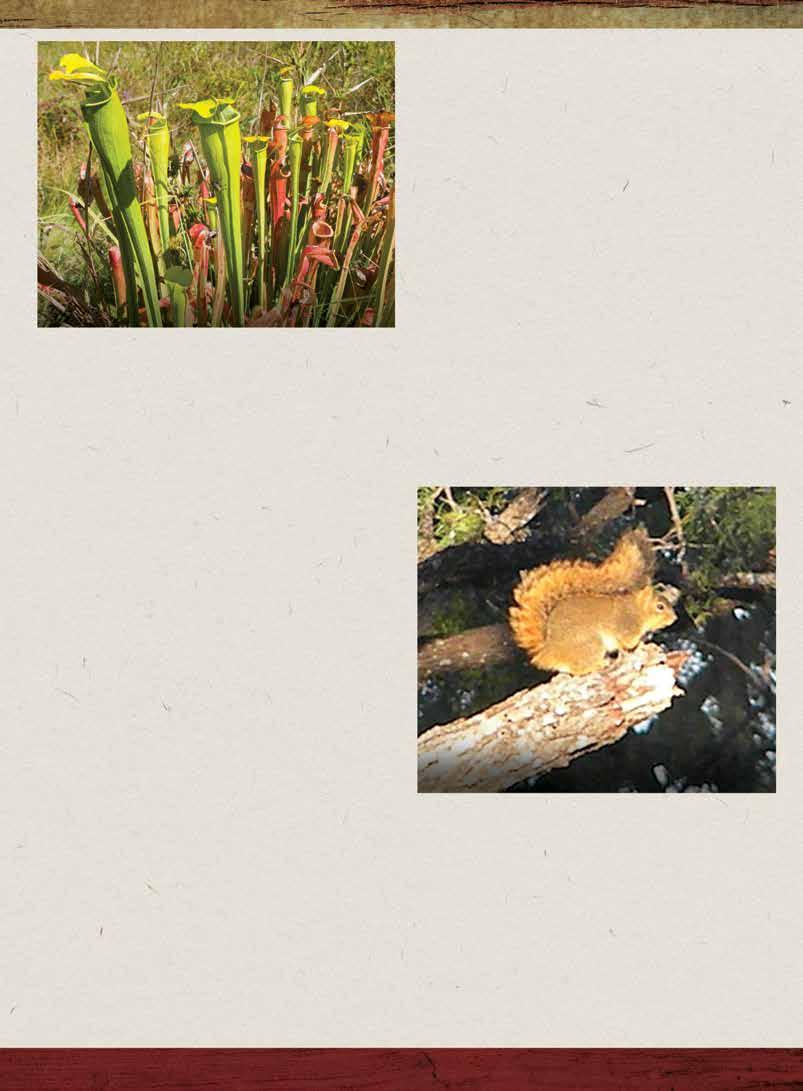
shotguns are allowed, but hunters must walk, as no ATVs or ORVs are permitted.
Another opportunity is for furbearer and predator hunters. Last year, three hunt dates ran from January into March. Trapping is allowed. Results can be fun and interesting. Gunnels recalled a father and son hunting for a raccoon to make a ’coon skin cap. They were successful.
“We focus on introducing new hunters, both adults and kids, to hunting. Public hunting is more affordable than private hunting and a great place to begin for a novice regardless of age. We’ll be having a New Hunter Program this fall showing how to hunt, clean, and cook various game.”
Call ahead to Gus Engeling WMA at 903-928-2251 if you’re planning to visit.







by Horace Gore
Have you ever heard of mule deer eating irrigated red peppers? Well, neither had we. During the days of TTHA’s television show on Outdoor Channel, cameraman Brian Hawkins was always looking for a different hunt— something special. When he got the scoop on mule deer coming

to irrigation pivots growing peppers in Yoakum County, he was soon planning a trip to Bronco on the Texas/New Mexico border.
The rancher’s son would guide us, and Brian wanted to video the entire hoopla of mule deer, peppers, and hunters in the pep -
per patch. I was Brian’s “straight man” and in the case of the pepper patch mulies, I asked my good friend Bobby Schmidt of Niederwald if he wanted to come along as a hunter. He made arrangements with the landowner and followed us to Yoakum County with his Beretta .300 Win. Mag., and his cousin, Rick Schmidt of Lockhart.
Jerry Johnston and Marty Berry flew up in the Berry plane to be a part of the TV show, and maybe take a pepper-eating mule deer. They were both interested in knowing whether mule deer actually ate the peppers or something else in the irrigated pivot. Both had their rifles and permission to take a buck if they saw a trophy.
The ranch compound consisted of three houses and some smaller sheds. We all stayed in a large house that was used by ranch hands with all the comforts of home. We cooked and ate comfortably for a long weekend. After arriving on Friday, we scouted some irrigated peppers before dark, but saw no deer. The rancher said the deer came in after dark and left before daylight—habits that would make filming a deer hunt a difficult chore. There were a lot of tracks and deer sign, but no deer.
Saturday morning would be different. We were up before daylight and on the hunt while it was pitch dark. Our guide drove the pickup with Brian and me, and the video equipment. Rick drove his pickup with Bobby. Marty and Jerry were in a third pickup driven by a ranch helper. The idea was to converge on different pepper pivots, hoping to find a buck

at dawn eating peppers. Brian would film the entire escapade for the TTHA television show.
Rick and Bobby headed for a nearby pivot as our pickup followed for a turnoff to another pivot. As both trucks approached the first pivot, a big typical mule deer buck bounced through the peppers and out across the grassland. He was “stotting” or bouncing on all four legs, as mule deer do, and covering some ground.
Bobby sat in the back seat of Rick’s truck and took a quick shot out the window at the bounding mulie. The miss caused the buck to run faster as Bobby took another running shot. The buck humped up and ran a few yards before piling up in the tall grass. The 180-grain Remington Core-Lokt bullet had caught the buck through the front rib cage and sent him sprawling.
Both pickups stopped and we all jumped out to examine Bobby’s typical buck. Brian had the camera rolling as Bobby turned the buck over, looking for the bullet hole. We looked at the antlers and guessed them to be close to 170 B&C. Brian was videoing and said, “Put a tag on him as I film your approach to the downed buck.”
Bobby backed away a few yards and came back with his rifle in a fake approach. After making a fake move to make
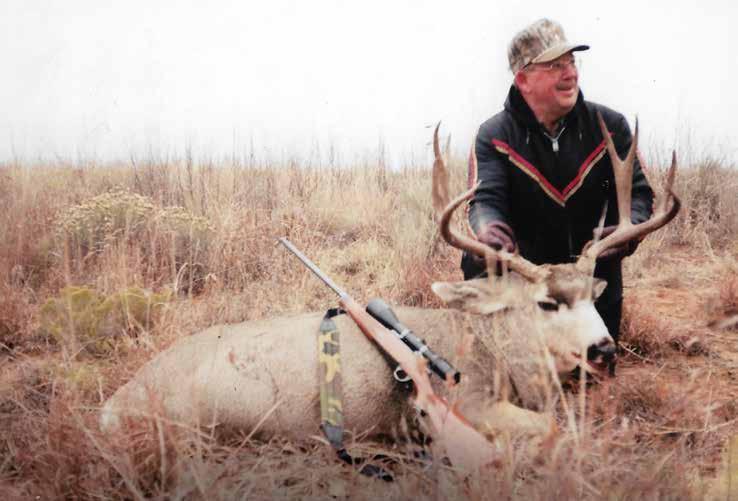
sure the deer was dead, Bobby reached in his shirt pocket for his new hunting license which had several tags stretched out like a ’coon’s tail. He went down the tags, looking for mule deer. “I can’t find a mule deer tag,” Bobby remarked. I was standing close, so I took the long string of tags and carefully examined each one. No mule deer tag.
“Here, use my tag for the videoing,” I said. Bobby took my tag to finish up the hunt scene. I put the tag back in my wallet. Brian got through with all the videoing and someone said, “I wonder if mule deer really eat the red peppers?” At that, I replied, “Well, wait just a minute,” as I pulled my Buck knife out of the belt sheath and turned the buck over to expose his belly. A swipe of the blade across the belly skin exposed a hat-full of chewed red peppers in the stomach cavity. “I guess that answers your question,” I remarked and began field dressing the buck for the trip back to camp.
Bobby’s typical was the only buck we saw on Saturday morning. We hung him in the shade and lay around until about two o’clock, when a fellow drove up and talked to the rancher’s son who was our guide. It seemed the fellow had seen a truck load

of hunters trespassing on the north side of the ranch.
We immediately loaded into the pickup with the guide driving me and Brian with the video equipment. Marty and Jerry boarded their truck with the hired hand, and Bobby and Rick decided to stay in camp and take a look-see on the ranch about sundown. A light snow began to fall, and the rancher’s son was anxious to look for the trespassers. We filed out of the compound with Jerry and Marty ahead. Of course, they had enough firepower to start a war.
We went east on a gravel road, then turned north through a gap and started looking for any trespassers that might be hunting. The snow had increased to a flurry with a high wind blowing it almost horizontal. After a few sashays across the flat grassland, we pulled the two pickups close together to plan the next move.
Snow fell heavily as we got out to stretch. Brian stood on the bed of our truck with his camera rolling, when he saw a deer in the distance silhouetted atop a slight ridge. He turned his camera toward the deer and yelled, “Somebody shoot that buck! Hurry! Somebody get that buck!” as his camera rolled, and the visible buck stood motionless at about 200 yards. Jerry and Marty reached for their rifles. Marty looked at the buck with his binoculars and said, “Jerry, kill that buck before he runs.” Jerry took the binoculars and peered at the deer. “I don’t think so, Marty. He ain’t all that good.” With the blinding snow blurring his scope and the buck standing broadside, Marty squeezed the trigger of his .300 Weatherby Mag., and the deer immediately collapsed.
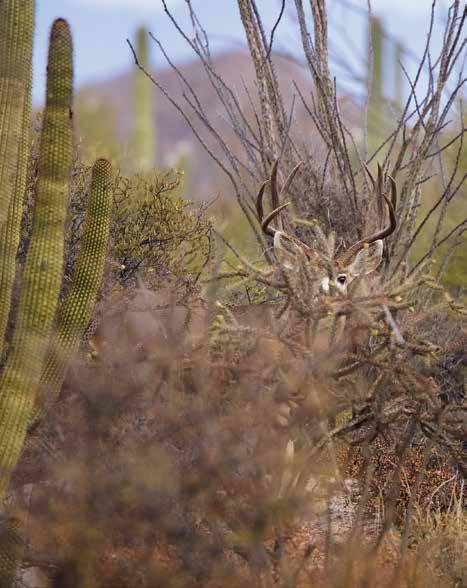
We all loaded up to see what Marty had killed as Brian’s camera continued to roll. To our surprise, and especially Jerry, Marty had nailed an outstanding non-typical mulie that would later score 206 B&C.
After Brian videoed some needed hunting scenes, we field dressed and loaded the buck for the trip back to ranch headquarters. The ranch folks marveled at the two big mule deer, and we toasted both bucks with a “toddy-for-the-body,” time and time again as the weather got colder and snow began to build on all flat places.
After dark, and a few more snorts, we loaded up and drove about 30 miles to a New Mexico beer joint in the middle of nowhere called the Oasis. The Saturday-night crowd was there, and we celebrated Bobby and Marty’s trophy bucks, and made the acquaintance of several of the local camaraderie. We all made much ado of Bobby’s running shot at his big typical 169 B&C, and Jerry’s comment, “Aw, Marty—he ain’t all that good,” at a non-typical 206 B&C. Egad, Waldo.

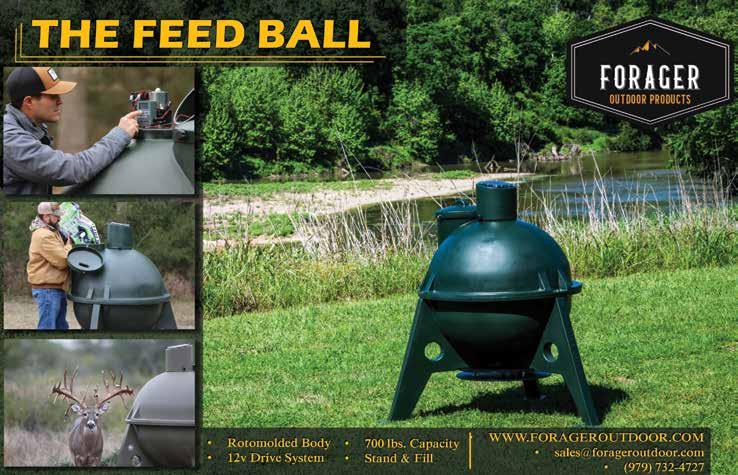
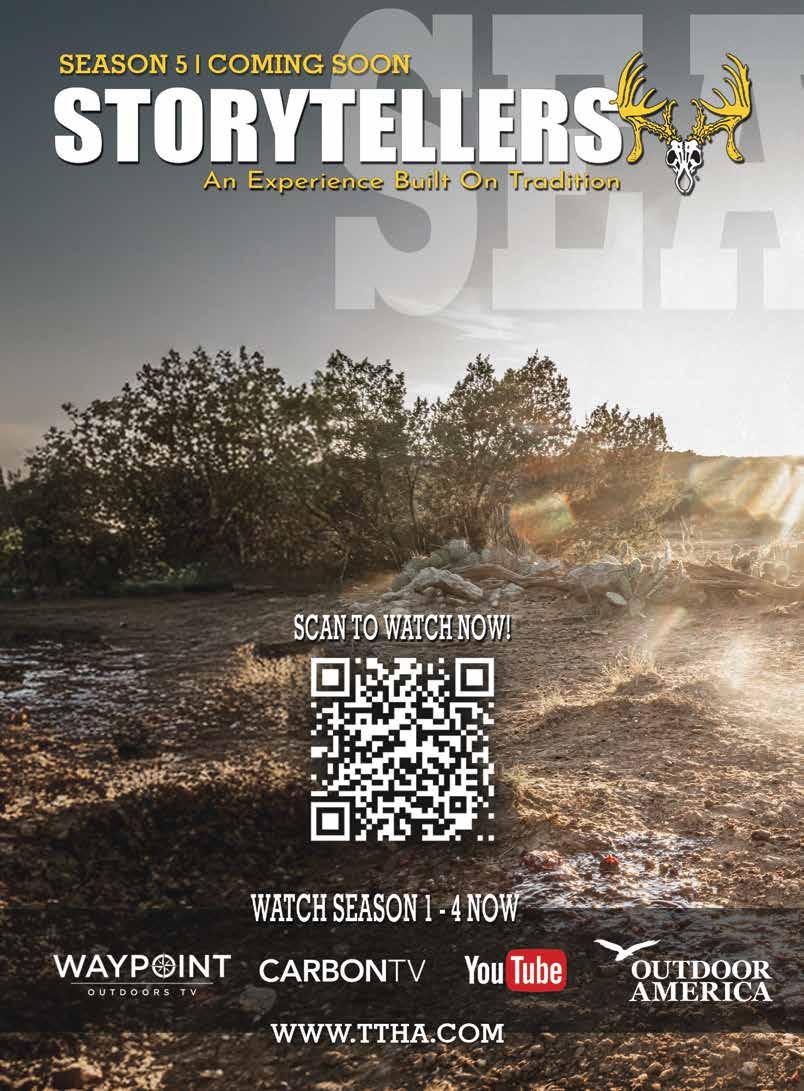
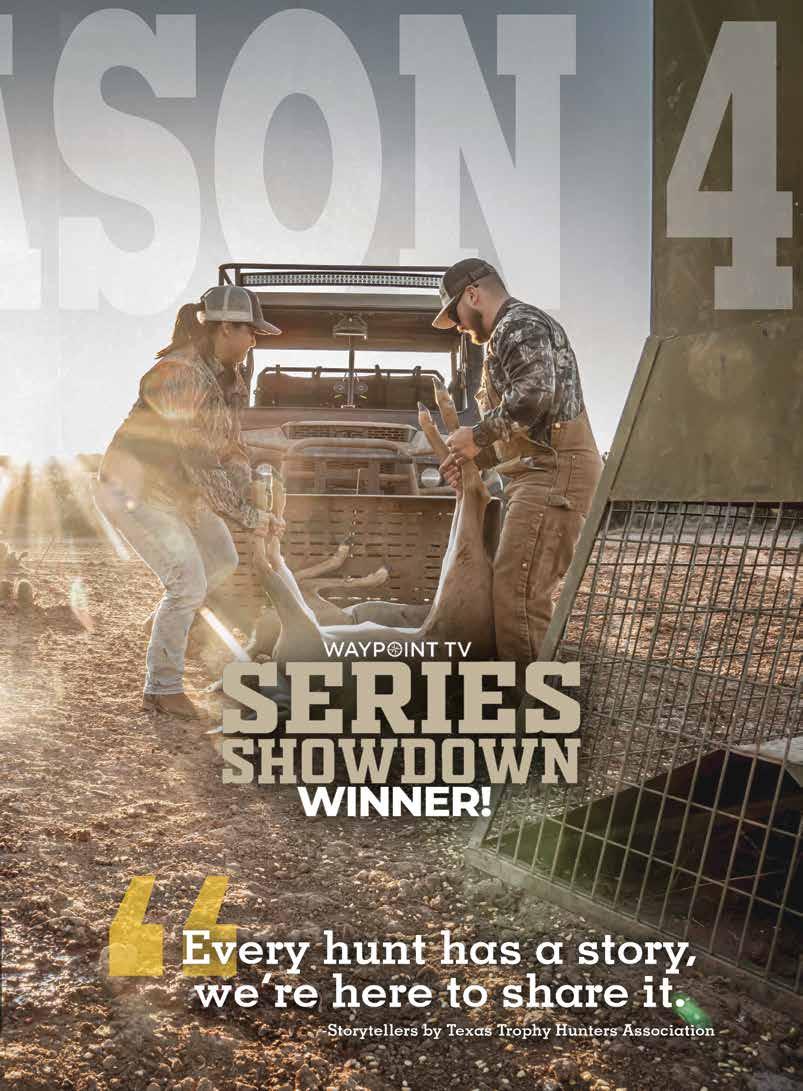
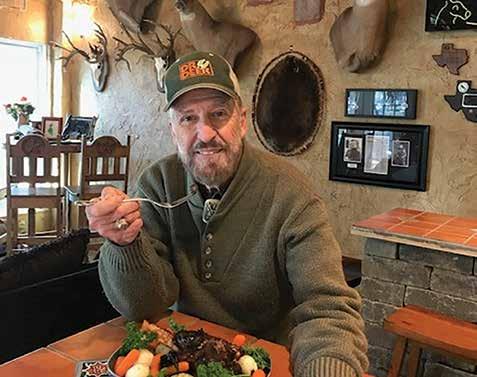
• 12 whole doves (prefer plucked, seared, and cut down back)
• 3 cups buttermilk
• Canola or peanut oil to deep fry
• 1 full cup flour
• 1 tsp. salt (or to taste)
• ½ tsp. black pepper (or to taste)
• Louisiana Hot Sauce
• Large bowl
• Plastic bag

Do you have a favorite Wild Game recipe that you would like to share with our readers? If so, please type or print recipe and send to:
Texas Trophy Hunters Association, ATTN: Editor 654 Richland Hills, Suite 160 San Antonio, TX 78245
Marinate doves in large bowl of buttermilk overnight. After marinating, make a short, deep slit lengthwise on each side of dove breast, and put 2-3 drops of Louisiana hot sauce in each slit. Let steep for a few minutes and then cook as directed.
Pour enough oil in pot or deep skillet to deep fry and heat to 350°. Combine flour, salt, and pepper in a plastic bag and shake well.
Drop doves separately in flour mixture and coat well. Deep-fry 6 doves at a time for about 3 minutes. Remove doves immediately when they turn brown and float. Drain doves in large bowl on paper towels.
Serve with cream gravy, hot biscuits, a side of onion rings cooked in the same pot after the doves are cooked. Add a spoon of tart jelly to each plate—plum or peach. Feeds 4-6 hungry hunters.
NOTE: Pork and beans can be a delicious substitute for the onion rings.
A favorite of the late Matt Martinez, Austin chef and hunter extraordinaire.




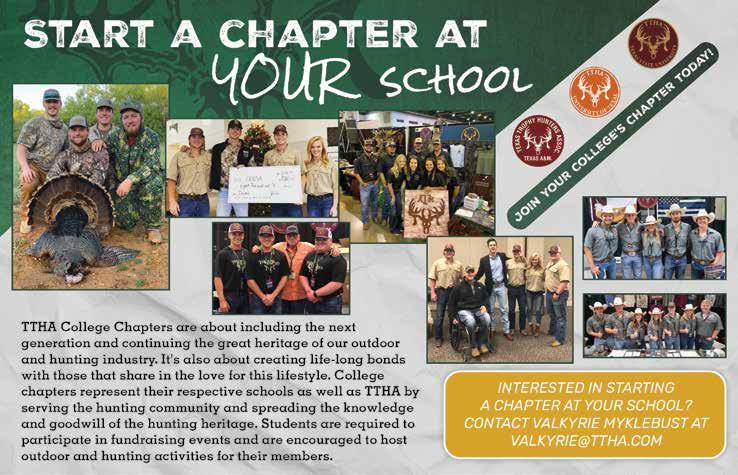

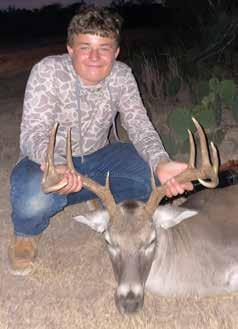
WAYLON KUSENBERGER: whitetail 10-point taken 11/ 2/24 in La Salle County.
GEAR: 7mm Kleinguenther.
OUTFITTER: Charco Marrano with Papa Buddy.

CADEN HOPPER : whitetail taken 11/16/24 in Hamilton County.
GEAR: rifle.
OUTFITTER: family ranch.
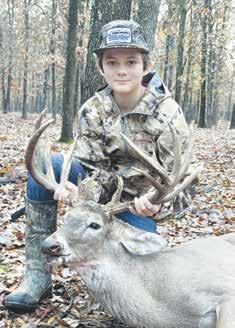
ASHTON ARREGUIN: whitetail 16-point with 17½-inch inside spread taken 12/16/24 in Lamar County.
GEAR : Browning X-bolt II, 6.8 Western 175-grain bullet, Leupold Mark 4HD scope.
OUTFITTER: NTX Whitetails.
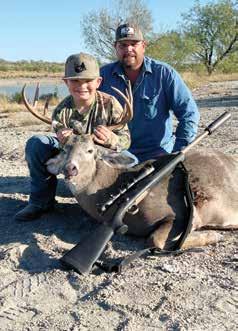
PARKER GALLIP: whitetail eightpoint taken 11/10/24 in McMullen County.
GEAR: .270
OUTFITTER: Dad.

CALE FULLER: whitetail nine-point (first buck) taken 12/30/24 in Webb County.
GEAR: rifle. OUTFITTER: family.

CODY KETCHUM: whitetail 10-point, scoring 138 5/8 B&C, taken 11/17/24 in Kimble County.
GEAR: Savage .270. OUTFITTER: Escondido Ranch.

CHARLOTTE COOKE: whitetail 11-point taken 11/ 2/24 in Webb County.
GEAR: rifle. OUTFITTER: family ranch.

GARY FRIERY: whitetail 40-point with 20 6/8 -inch inside spread, scoring 310 1/8 SCI, taken 10/17/24 in Wisconsin.
GEAR: Remington 7mm Mag., Nosler 140-grain Semi Partitioning, Zeiss Diavari Z 3-12X56 scope. OUTFITTER: Big E Outfitters.
NOTE: Only TTHA members or immediate family may submit photos. Do not paperclip or staple photos, as this can damage them. Prints must be no larger than 4x6 inches and printed on photo-quality paper. Photos may also be emailed to HuntsEnd@ttha.com. If sent by email, please make sure to include all information from the form and limit your photo size to less than 5MB. Send a separate email for each entry. No photos will be returned. Photos become the property of








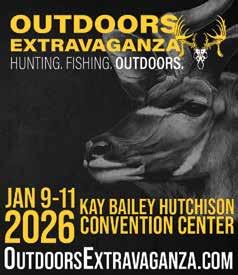
Don’t forget to use your free classified ad! It’s once per year and you must have an active membership in good standing. Send to:
654 Richland Hills, Ste. 160, San Antonio, TX 78245
You may fax your ad to (210) 523-8871, Attn: Debbie Keene or e-mail to Deborah@ttha.com. Send your ad in by September 12 to run in the next issue!

Available to current members of Texas Trophy Hunters Association only! Limit 25 words per ad. Each member may run 1 FREE ad in one issue per year. 25 word ads after FREE issue are $40 each. WE RESERVE THE RIGHT TO EDIT OR REFUSE ANY AD.
LOOKING FOR CHEAP small acreage to hunt this fall rifle deer season near Milam or Washington counties. Call/text Scot at 979530-2921.
WILDLIFE EXEMPTIONS – Texas Rangeland Management provides Turn-Key Wildlife Services to keep your Property Taxes LOW! Contact Wildlife Biologist Sergio Morales: 210526-1522 | www.TexasRangeManagement.com
RUGGED EDGE BLADES - a husband & wife Veteran owned company offering beautiful, quality Damascus knives at a reasonable price. Whether you’re out on a hunt, or at the campsite cooking, we have the perfect knife for you. Backed with lifetime warranty and #1 customer satisfaction! Find us at www. ruggededgeblades.com or give us a call at 682-239-0137. Rugged Knives for Rugged Adventures.
SPECIALIZED INSURANCE for outdoor recreation & hospitality businesses. Hunting & fishing lodges/preserves, guides, outfitters, ranges, & more. Comprehensive coverages incl. property, general liability, business auto. Contact Devin 361-208-4404 or devinp@ jacobs-weber.com.
THERMAL DRONE WILDLIFE SURVEYS by premier wildlife consulting firm Spring Creek Outdoors! Professional full time wildlife biologists. Contact matthew.nuernberg@ gmail.com.
WEBB COUNTY High Fenced 600 acres guided weekend deer and dove hunts (160220 class deer). Booking now for 2025. 956235-3598.
RANCH FOR SALE, Oklahoma, 3627 acres, 2400 Acs. High fenced, trophy whitetails, 2-20 acre lakes, hunt year round. Southwest Ranch Sales. 972-542-8511.
TXN HOME SERVICES - America’s Toughest Gutter Guards with Leaf Blaster Pro. Built to last. Proven to protect. 40-Year Warranty. Gutters that got you covered. 346-460-9199 | TXNHomeServices.com.
BIG TIME HUNTS – World-Class adventures across Southern & Northern BC, Canada! Hunt Stone Sheep, Moose, Goat, Cougar & more. All-inclusive, guided packages. Book your hunt today! www.bigtimehunts.com | bigtimehunts@gmail.com.
TRIPLEJMANUFACTURING@YAHOO. com. One membership available on 2,400 acre hunting lease in Webb County. Each membership is $13,000 with a total of 3 memberships on the 2,400 acres. Contact John at 830-688-2462 or 210-289-3231 for more details.
WANTED: T.T.H.A. belt buckles, Texas Big Game Awards Record Books, & a copy of September/October 1999 Journal with “El Jéfe” on cover. Call 662-310-5295 or email bowhuntrcfneill@yahoo.com.
AOUDAD HUNT! Hunt free ranging aoudad in Llano County. Hunts begin in late August thru late October, 2025. Nice accommodations. For additional info, email darrellsteffek@gmail.com
WILDLIFE & HABITAT Consulting. Commercial hunts available. Contact Certified Wildlife Biologist Jason Shipman 210-508-8447 or jasonashipman@gmail.com.
DURABLE HUNTING BLINDS for the Dedicated Deer Hunter! The Blynd hunting blinds can be counted on for long-lasting durability that will not fail you in the field and provide the cover needed at an affordable price. http://www.blynd.com/ 1-800-4580263.
HILL COUNTRY ADVENTURES offers quality trophy exotic hunts on family land. First class lodging and meals. Visit us at: hillcountryadventuresllc.com or call: 337-3684686.
AMERICAN FEEDER - Fish Feeders. Catch and grow larger, healthier fish. All new aluminum fish and deer feeders from American Feeder. Visit http://www.americanfeeder.com for details.
RESERVE RANCH, a Sportsman’s Paradise near La Pryor, Texas offering full service hunts for Whitetail Deer, Red Stag, Dove and Quail to individuals and Corporate clients. www. reserveranch.com.
JOIN THE MISSION! Support our veterans and first responders with outdoor adventures through Patriots First Outdoors. Donate or become a member today at www.patriotsfirstoutdoors.org.
KEI VALLEY SAFARIS offering plains game in the Eastern Cape of South Africa. Package
hunts or build your safari. Deep sea fishing, photo safaris, and park excursions available upon request. Keivalleysafaris@gmail.com. Keivalleysafaris.com.
MAP MY RANCH specializes in developing printed maps for all your outdoor needs. We can create basic boundary maps, or those with customized features - locations of deer blinds, feeders, food plots, ponds, etc. Contact today to get started! www. MapMyRanch.com or 713-302-2028.
VETERANS CREED OUTDOORS Team Texas. Outdoor Trips for Veterans and First Responders. Find us on Facebook on our page and group.
HELP FEED THE HOMELESS – donate excess game animals to feed the homeless, orphans, and needy families. Go to www.trinityoaks.org “contact us” tab.
LIMITED EDITION Book. SCI Past President Craig L Kauffman takes the reader on hunting adventures around the world. Signed copies $57. Call 717-917-8173.
MEXICO RANCH: 8,500+ ac Ranch available for serious & management minded Group. Excellent Whitetail - Density & Genetics, Blinds, Feeders - Corn & Protein, 4 Bdr House exclusive for Hunt Group! Protein fed for last 2 years. Exc.Ranch for 4 Hunters. 210-379-7510. email: jharlan29@gmail.com.
THE LONE STAR Bowhunters Association. Preserving and Promoting bow hunting in Texas since 1974. Join today at www. lonestarbowhunter.com. Take a kid hunting.
S & D WHITETAILS – Limited hunts avail. Booking 2021 now. All native S TX deer from 140-230 class. Deer & Dove hunts Central TX. Over 7500 ac. 24-yrs experience. 5 Star rating. 325-642-7596.
TEXANS ARCHERY CLUB wants to expand our state’s archery range infrastructure. Looking for local partners/land to expand our network. www.TexasArchery.info 501c3.
MACS MOBILE GUN CARE in DFW - Expert Cleaning/Maintenance, and Premium Accessories with Install for Top Tier Firearms. All at Your Front Door! Book Now: CLEANMYGUNS.COM.







